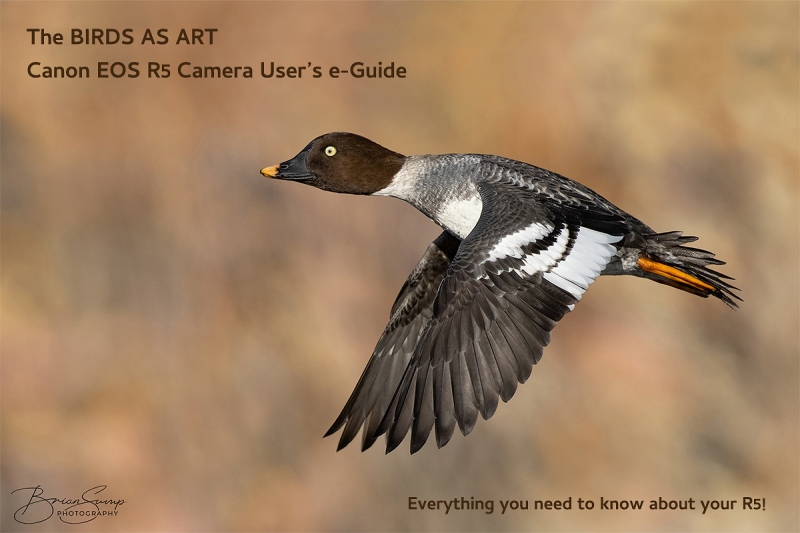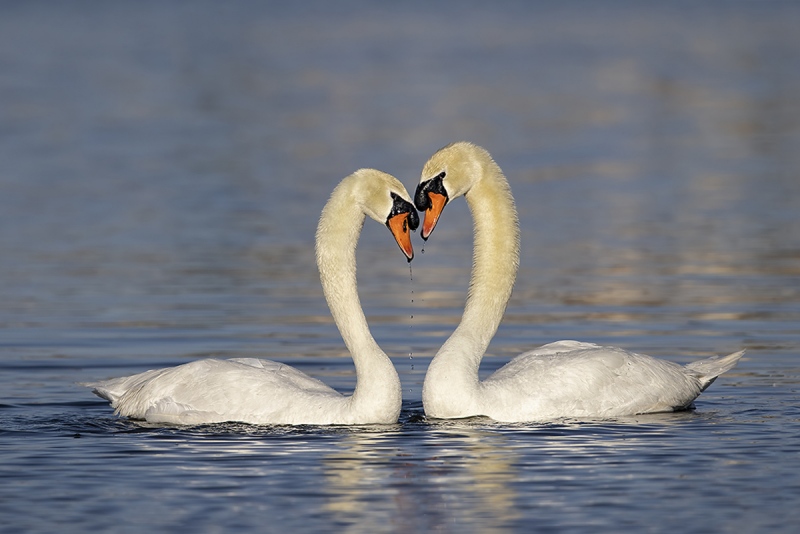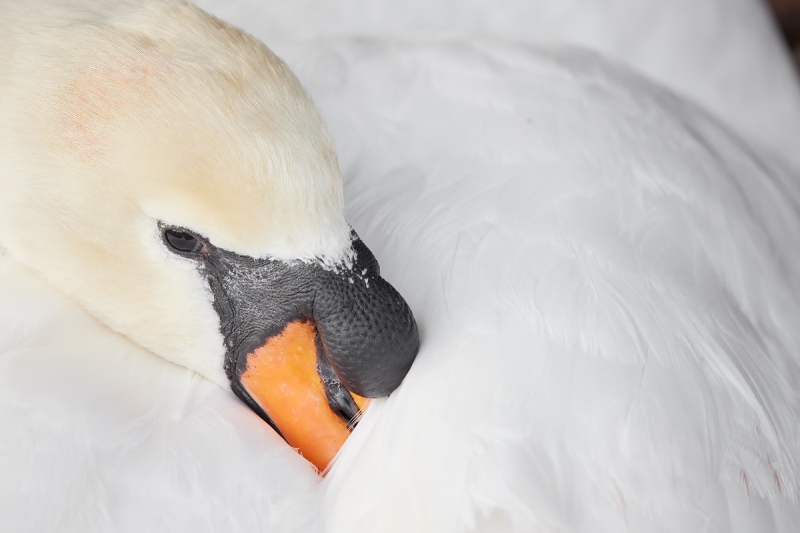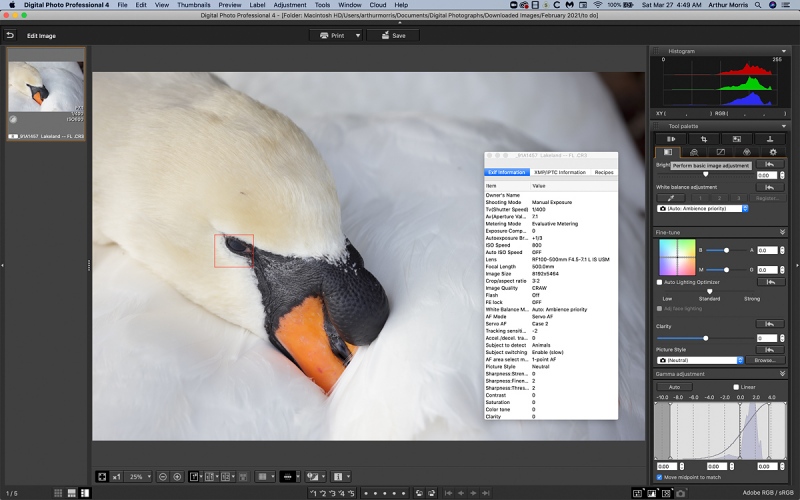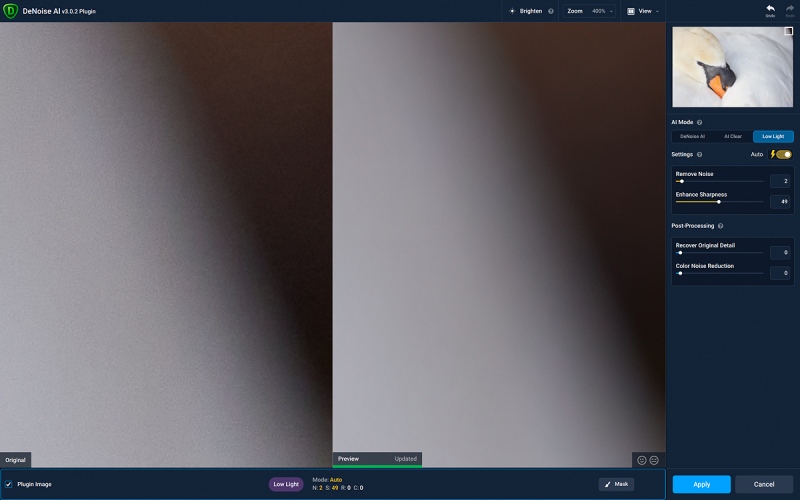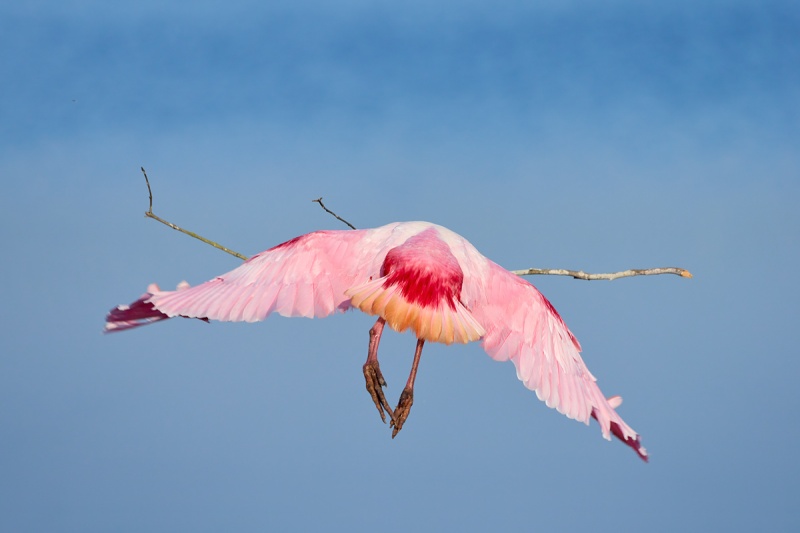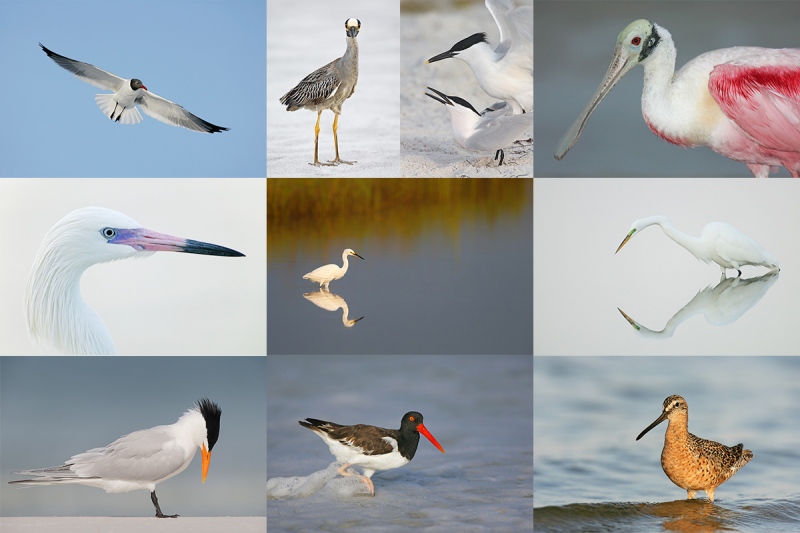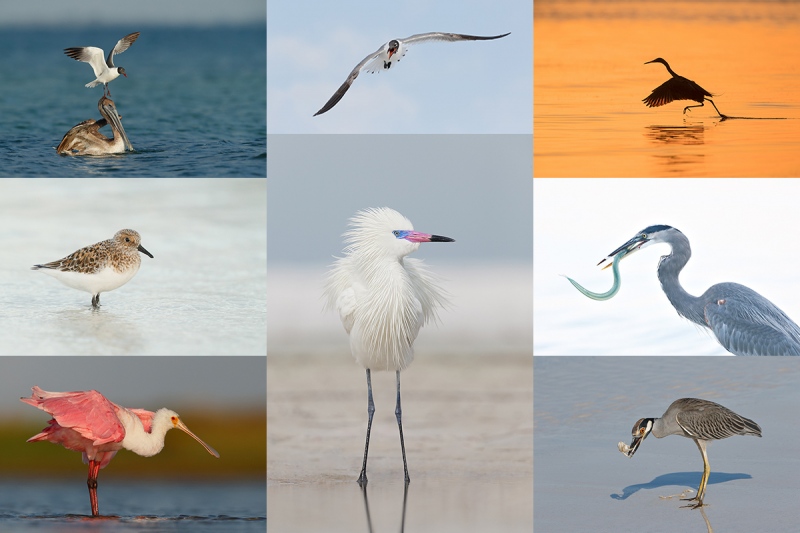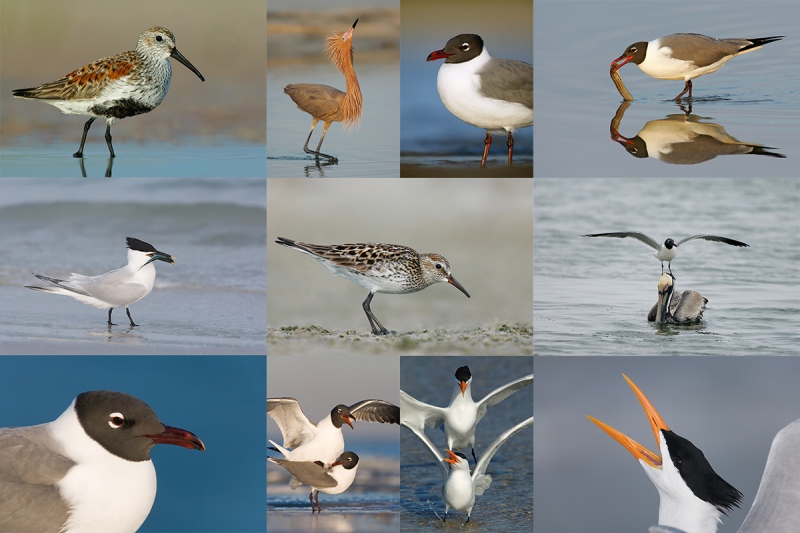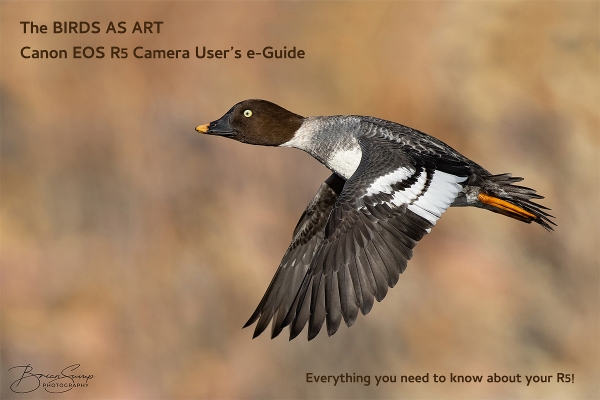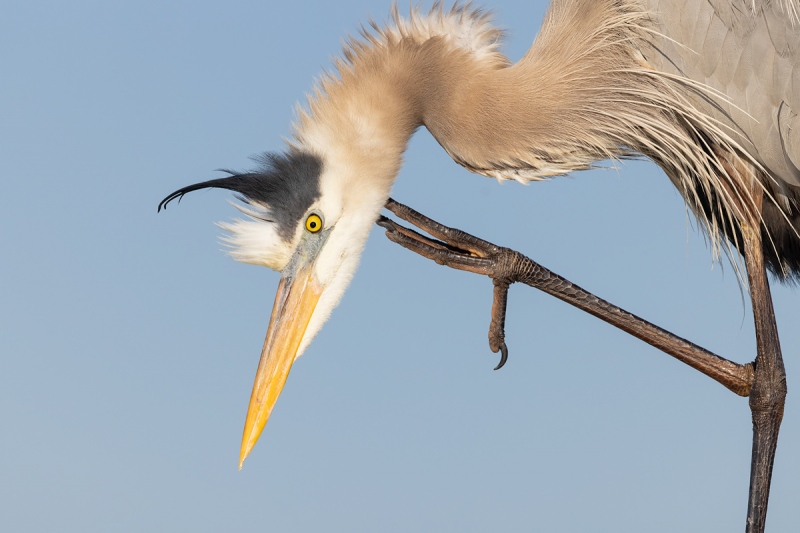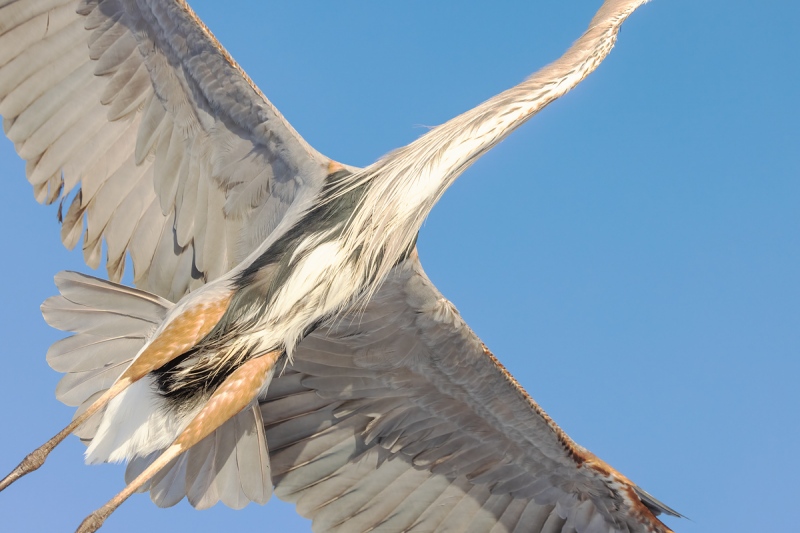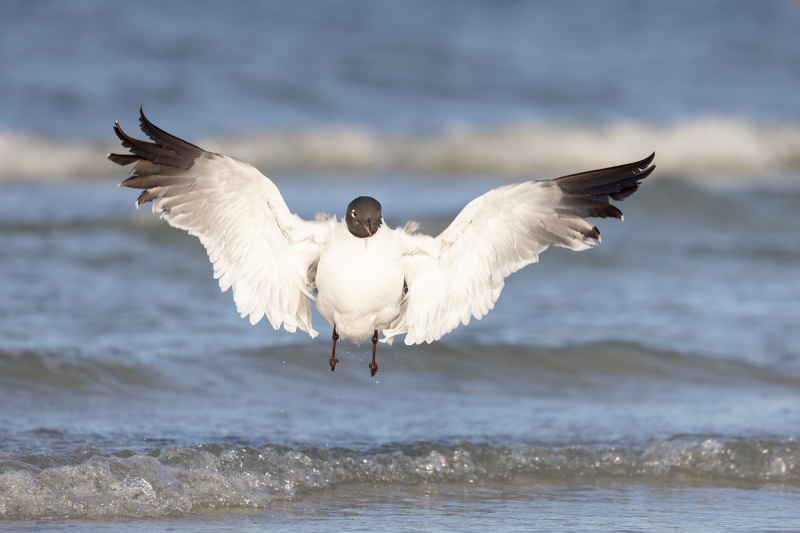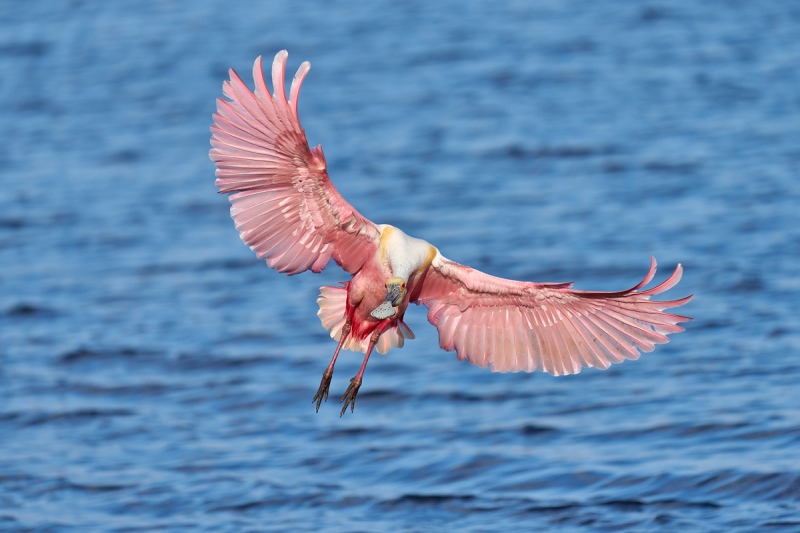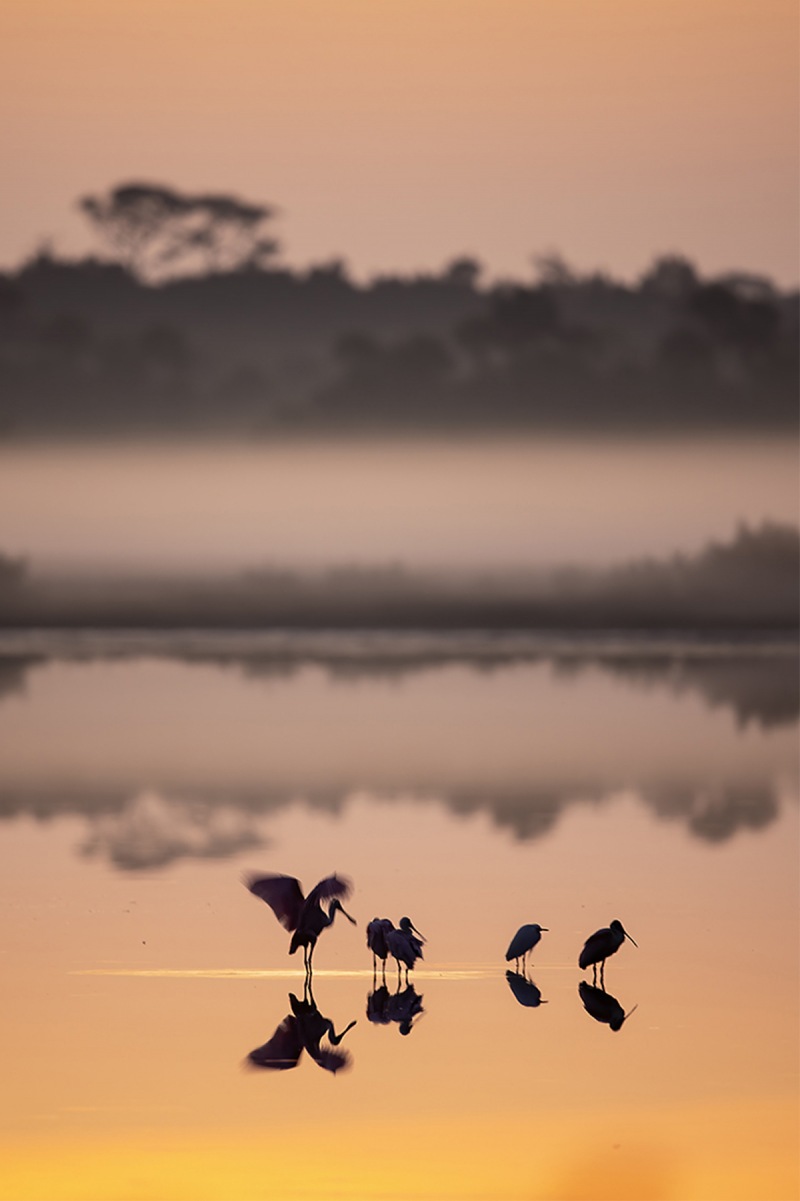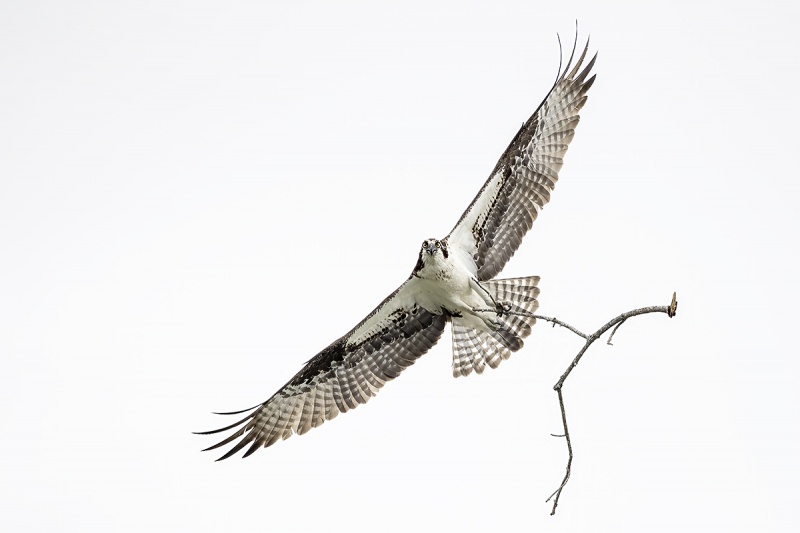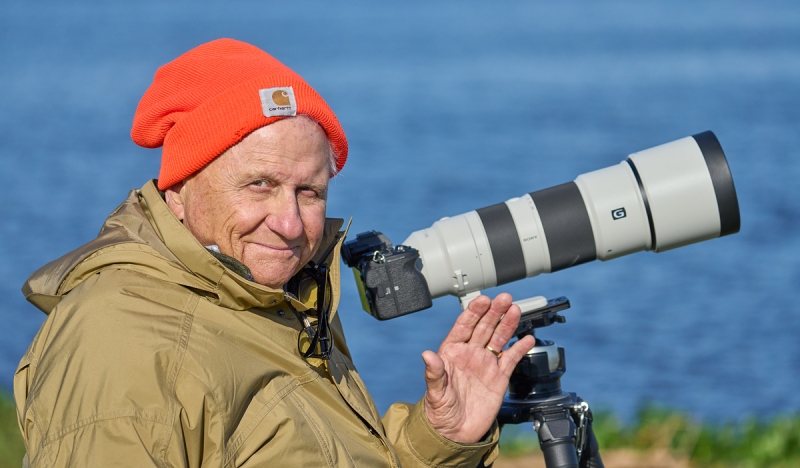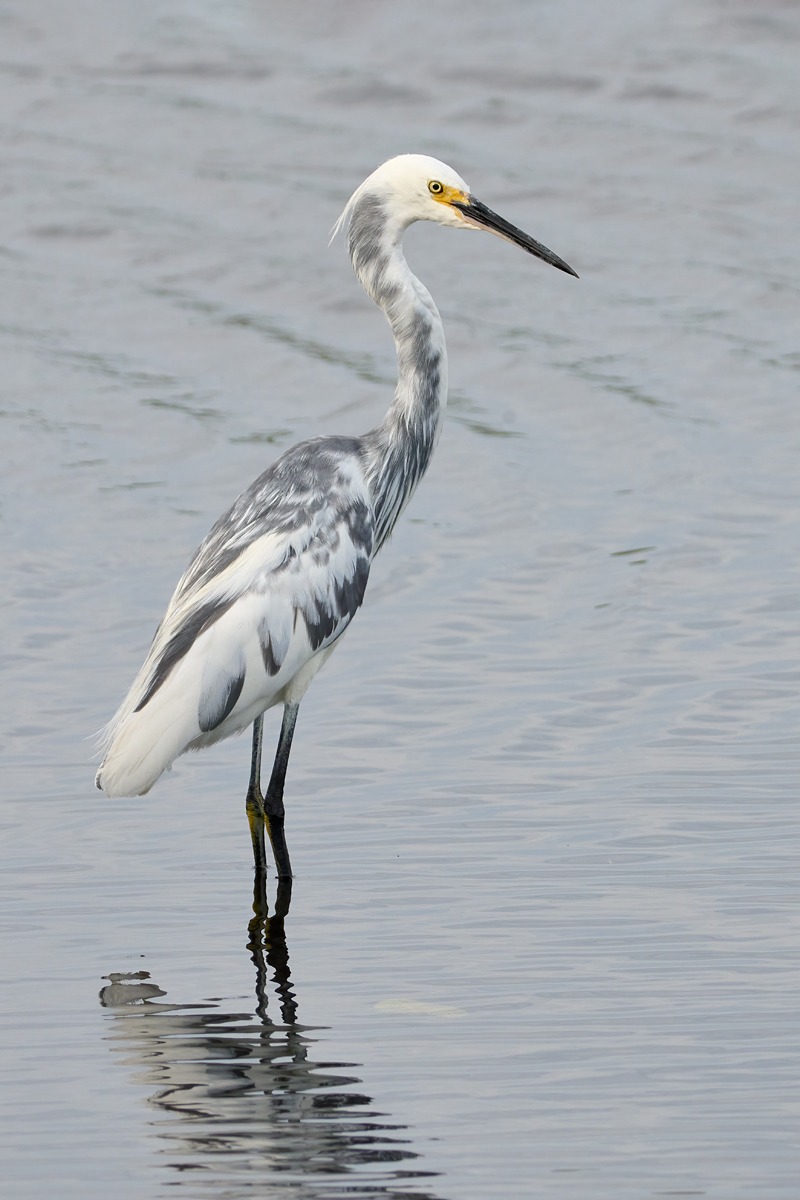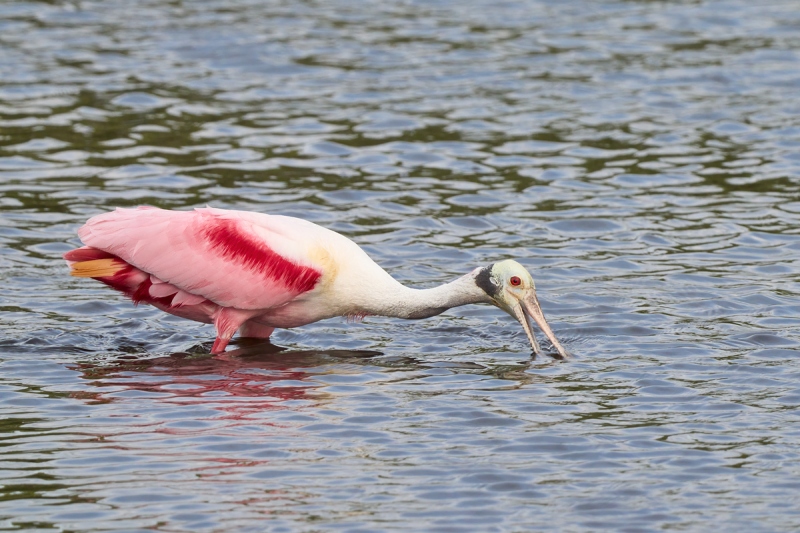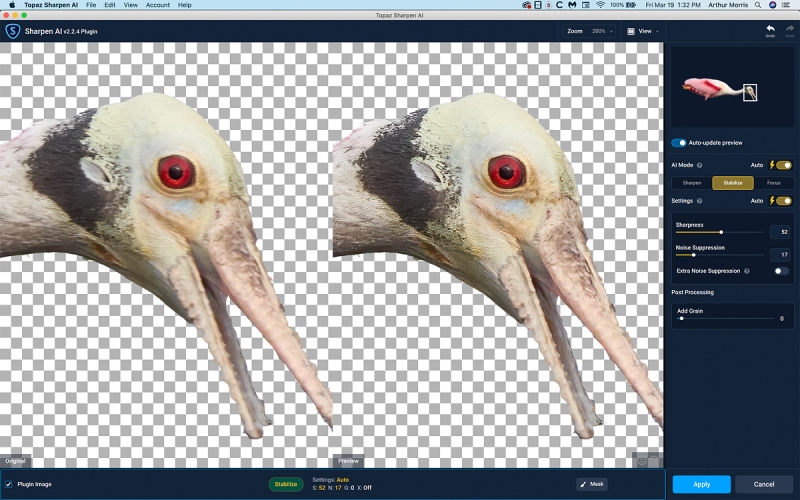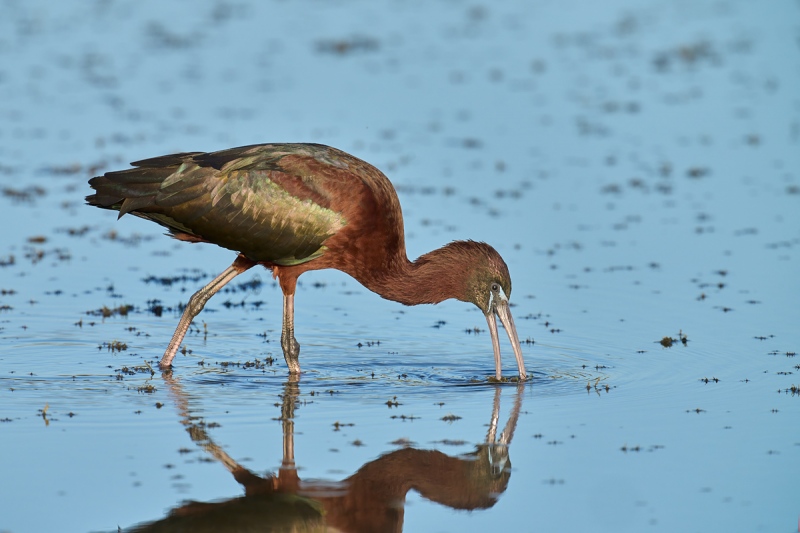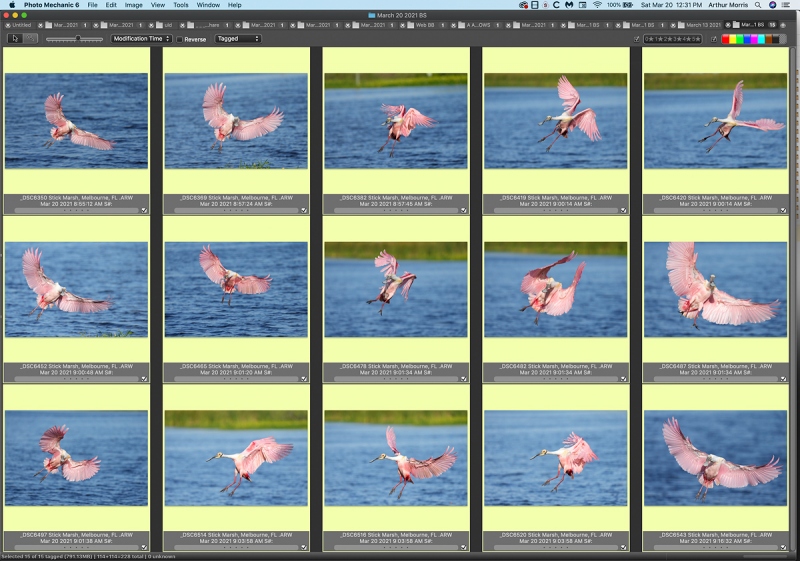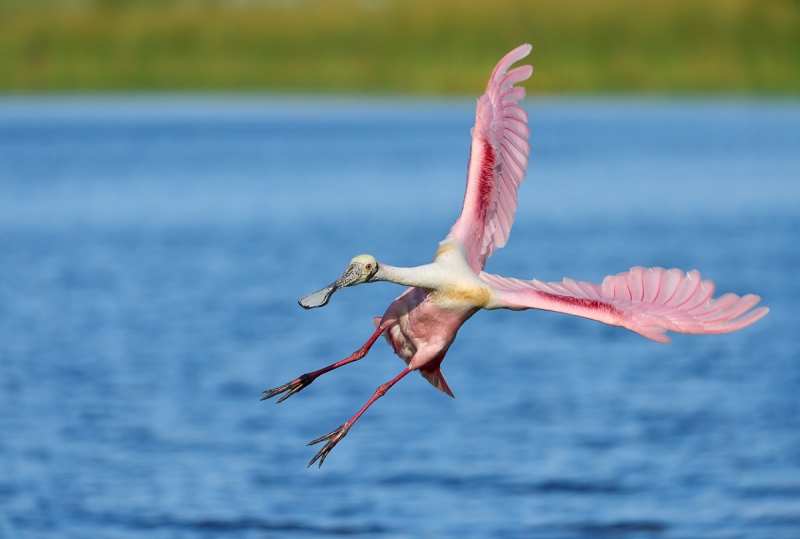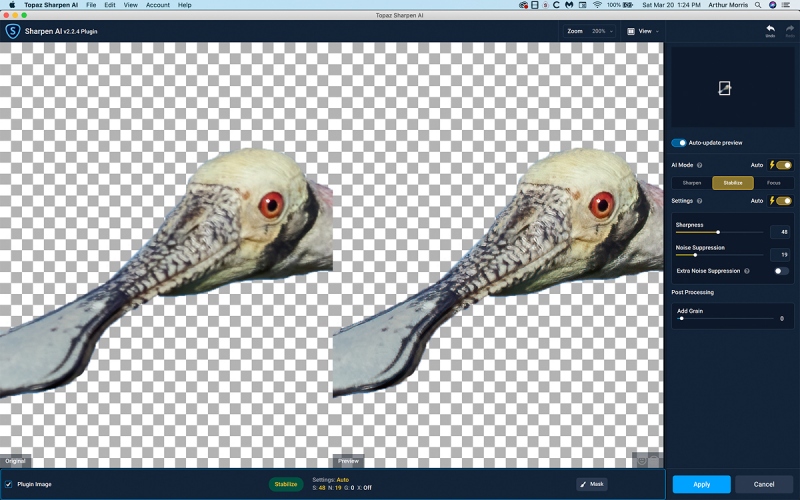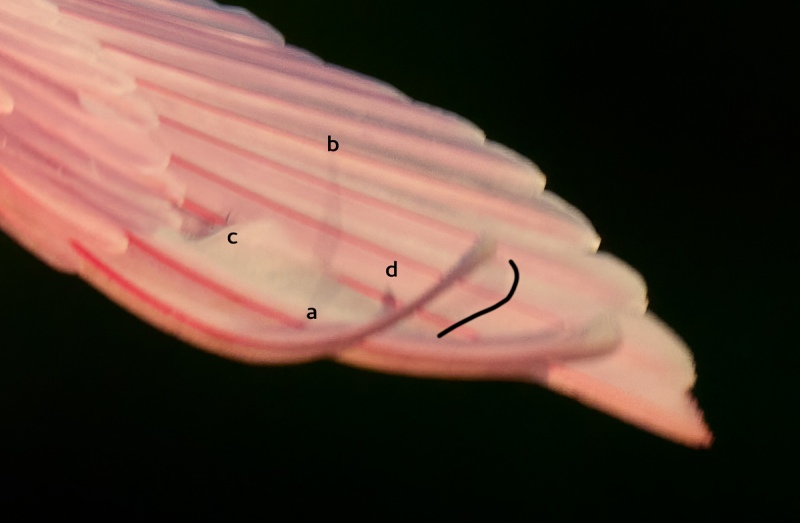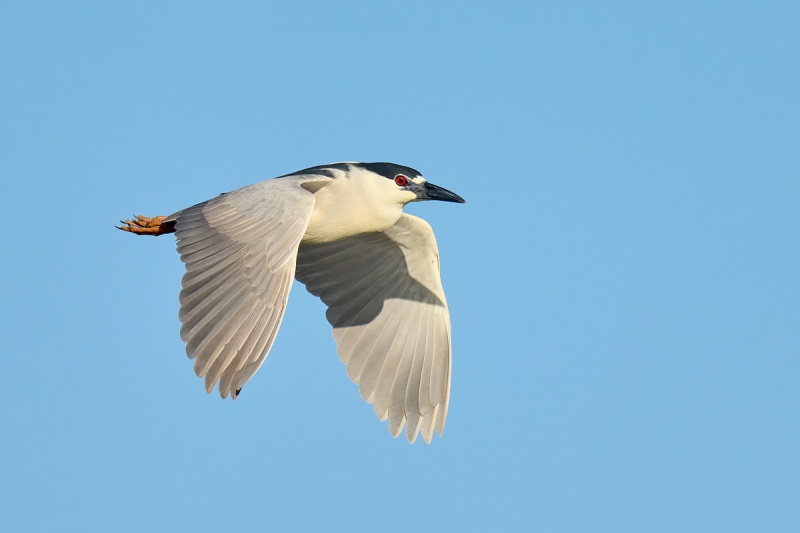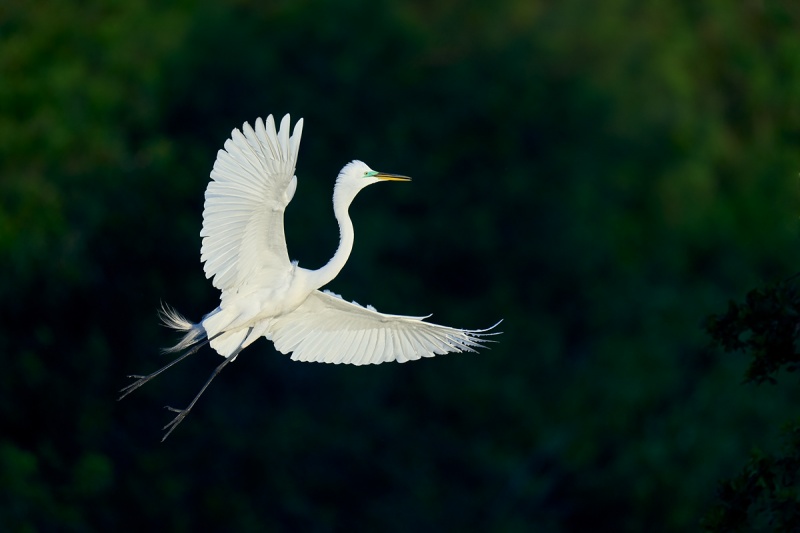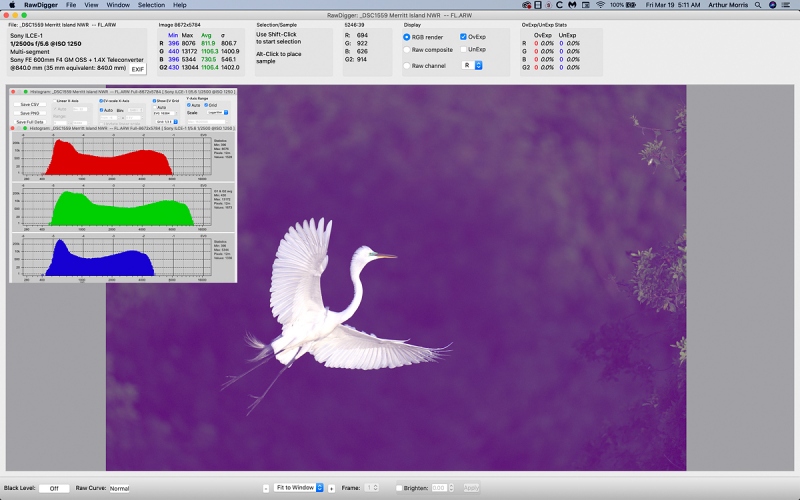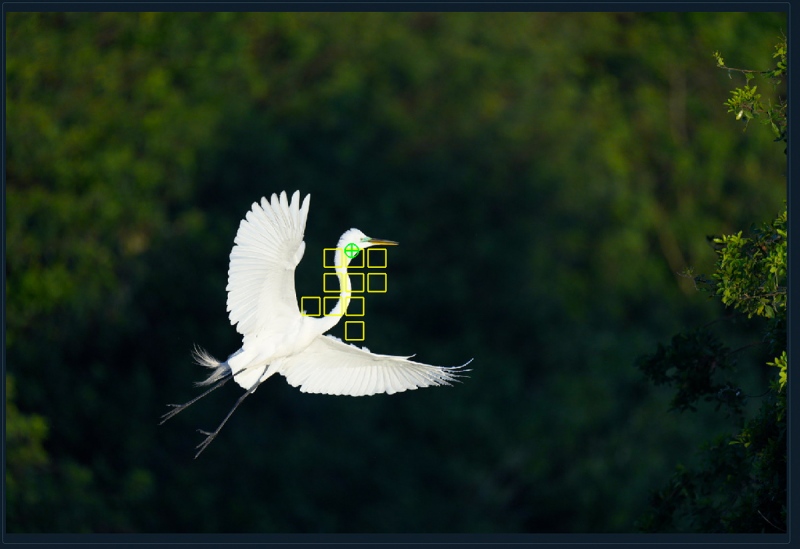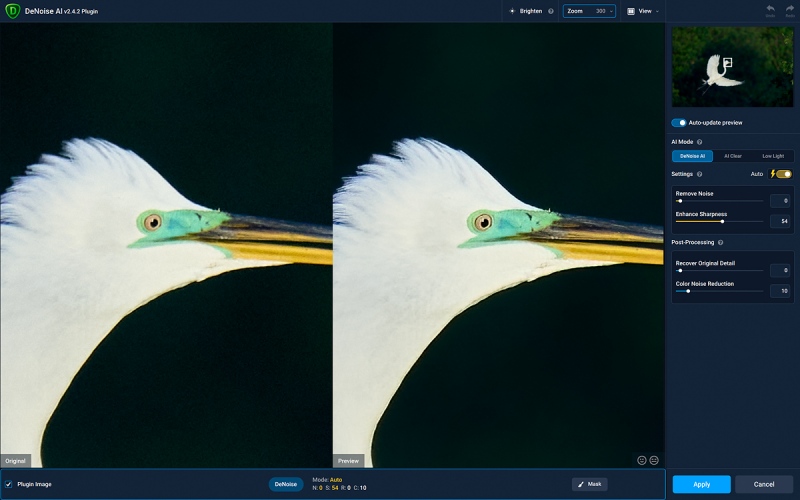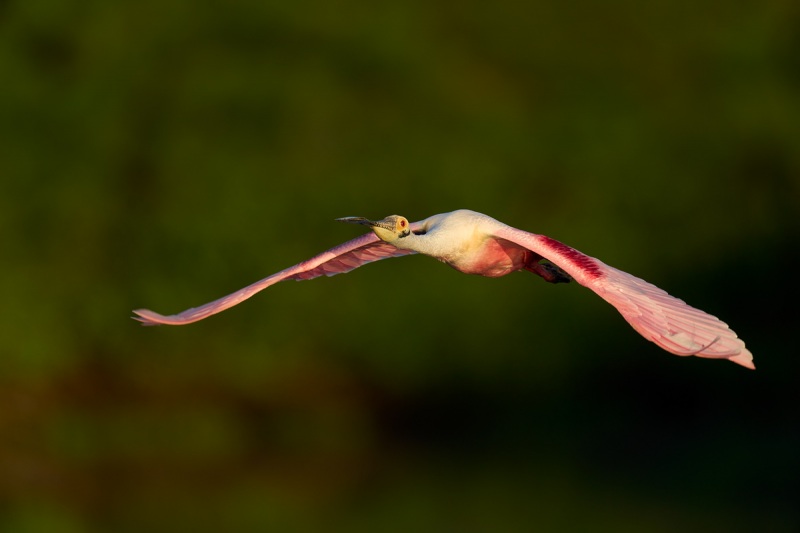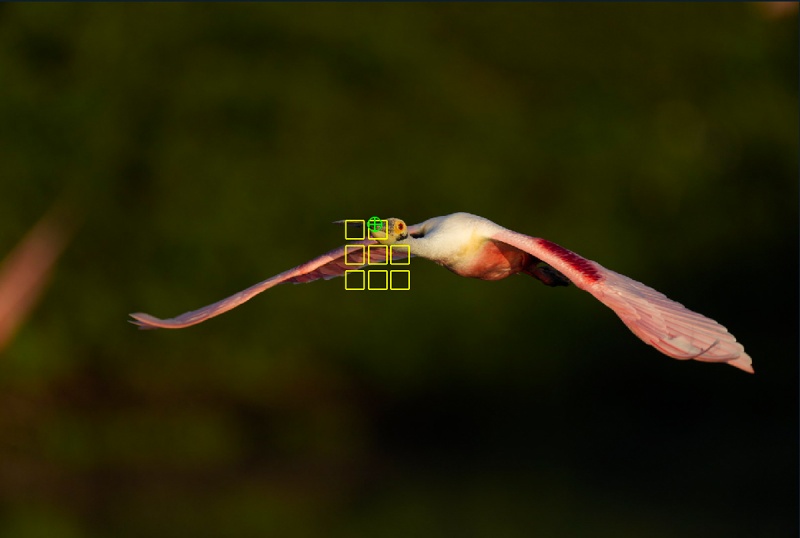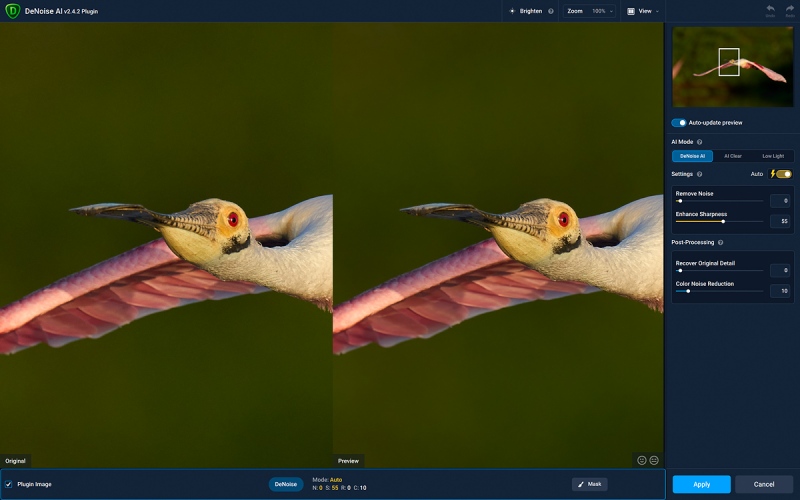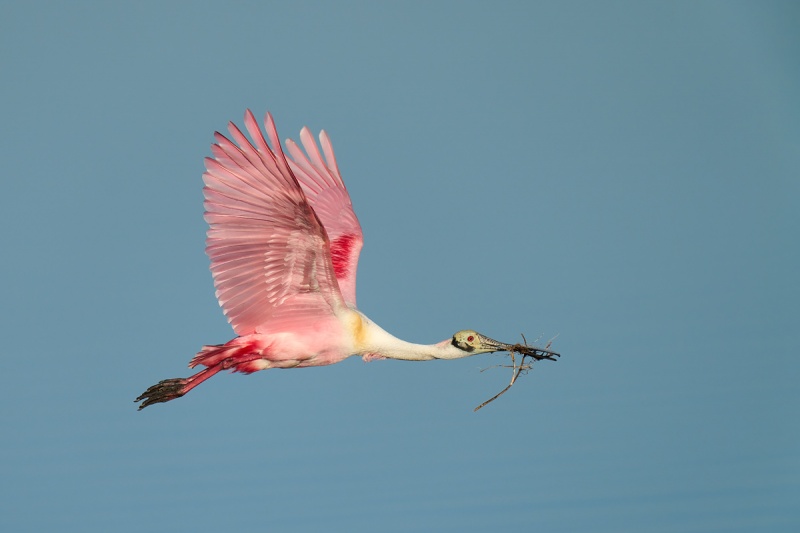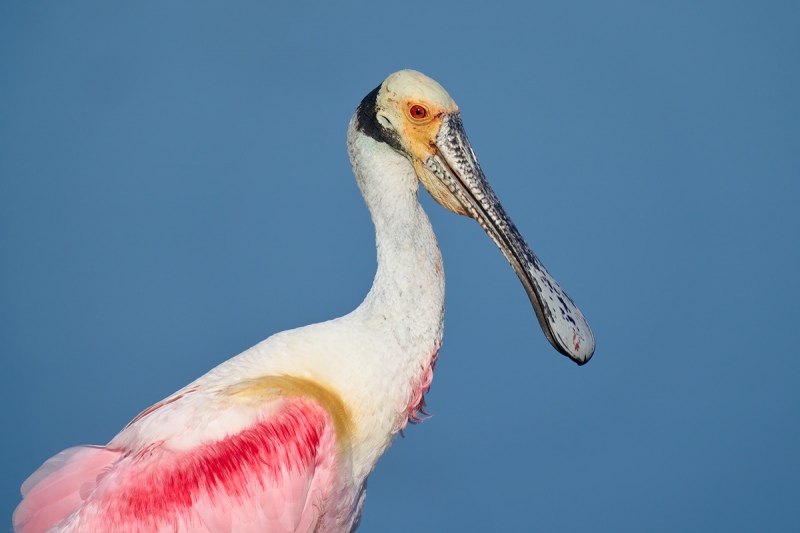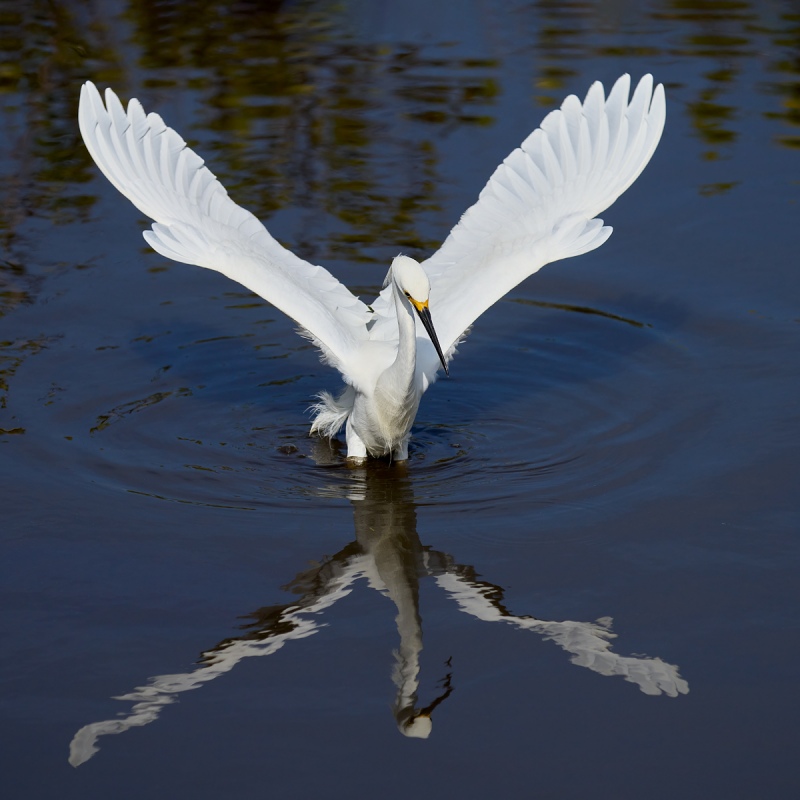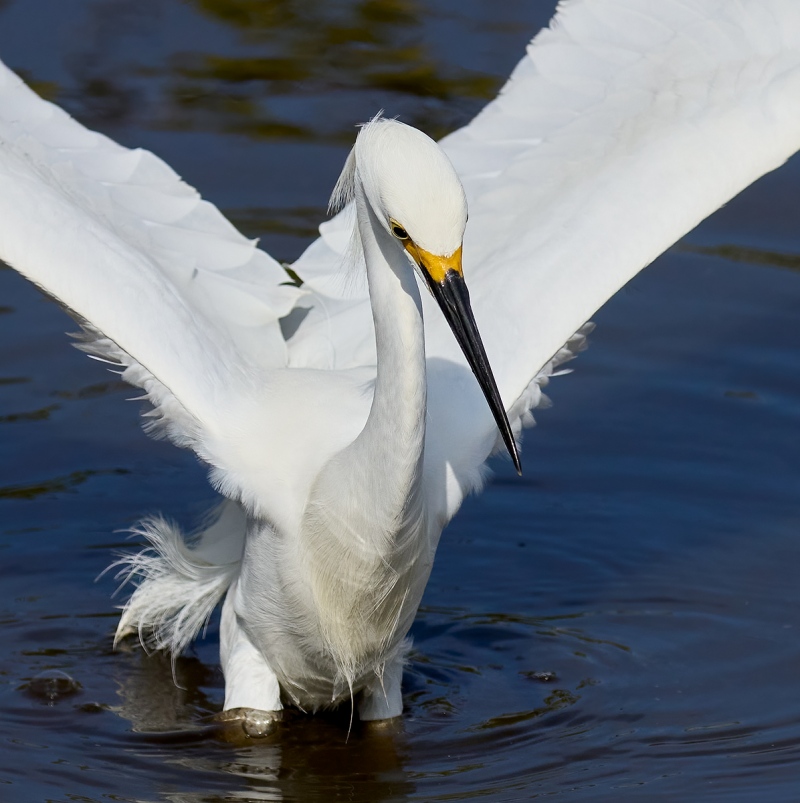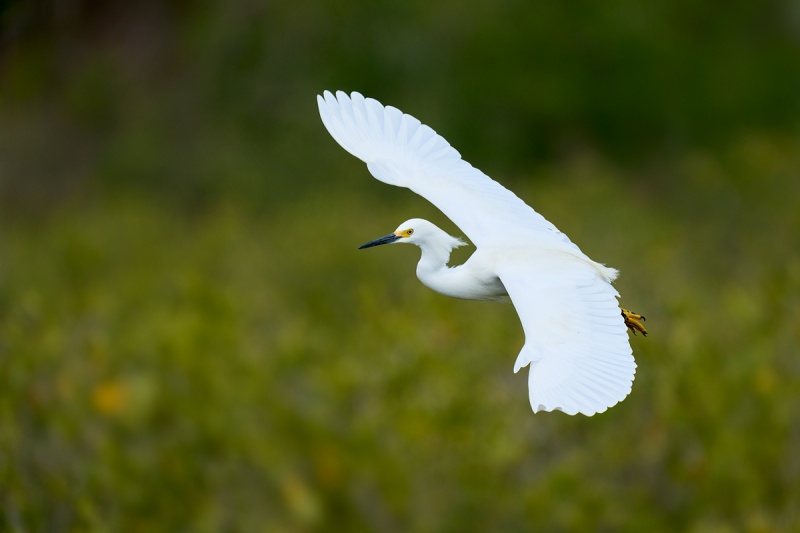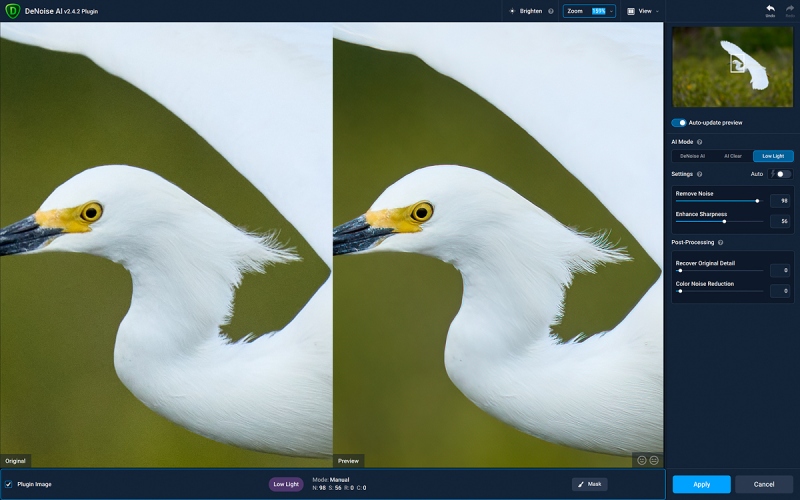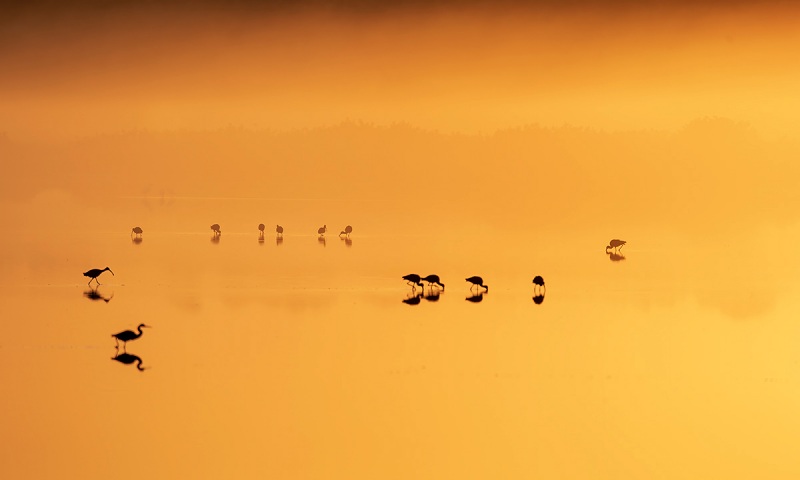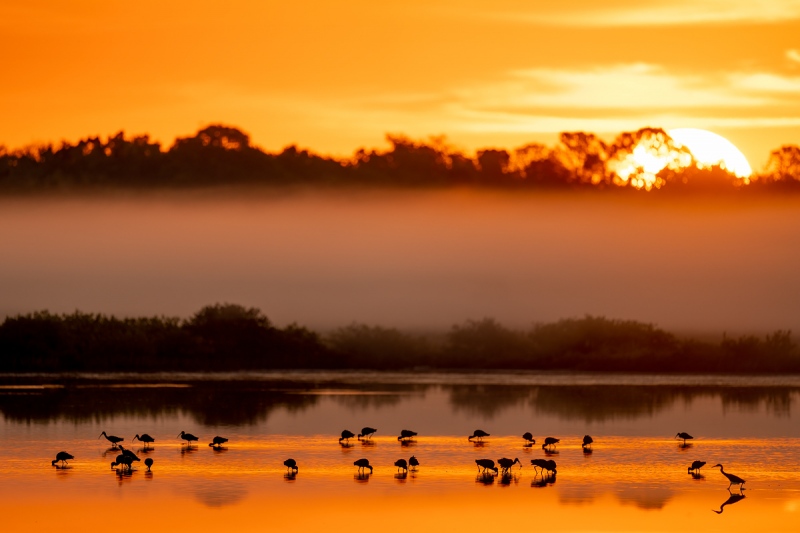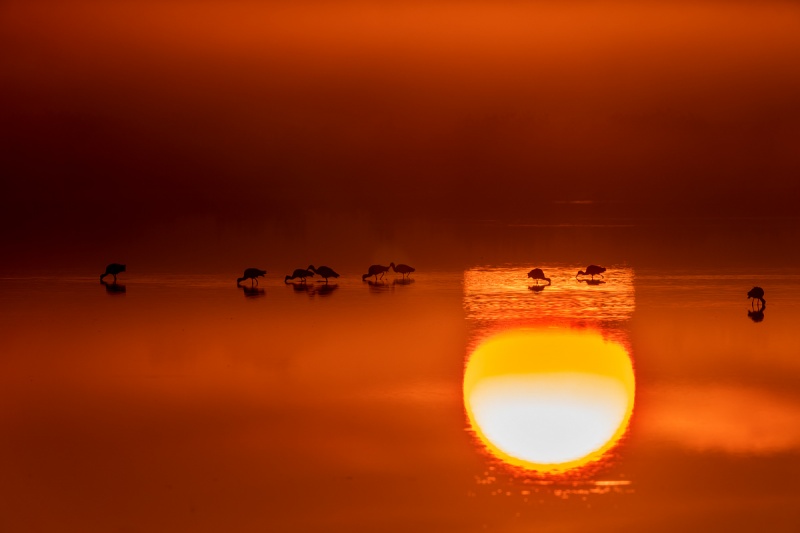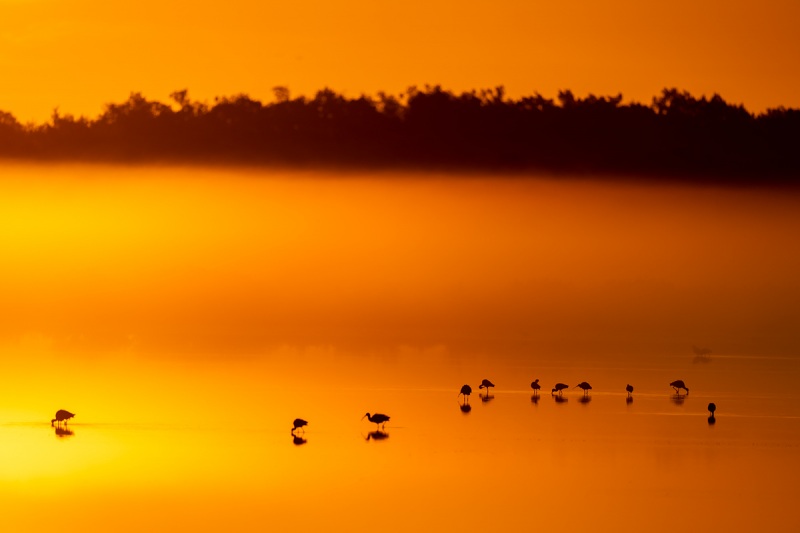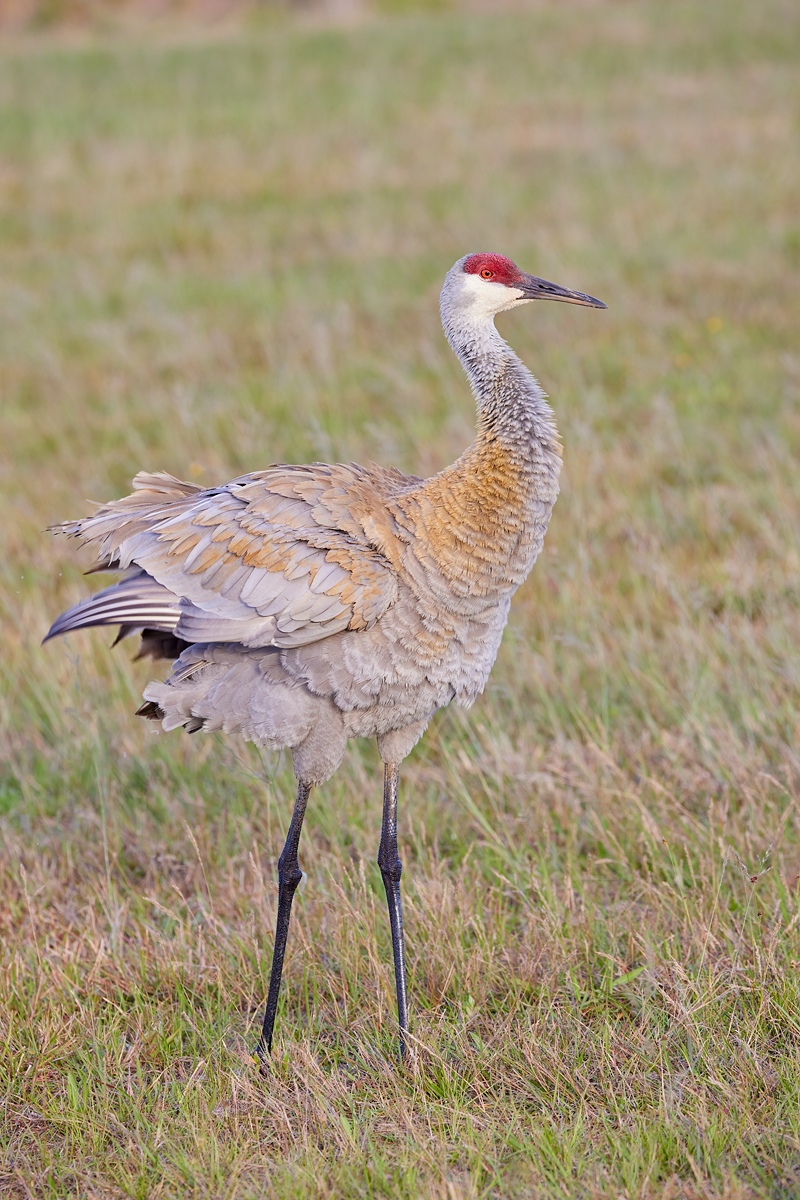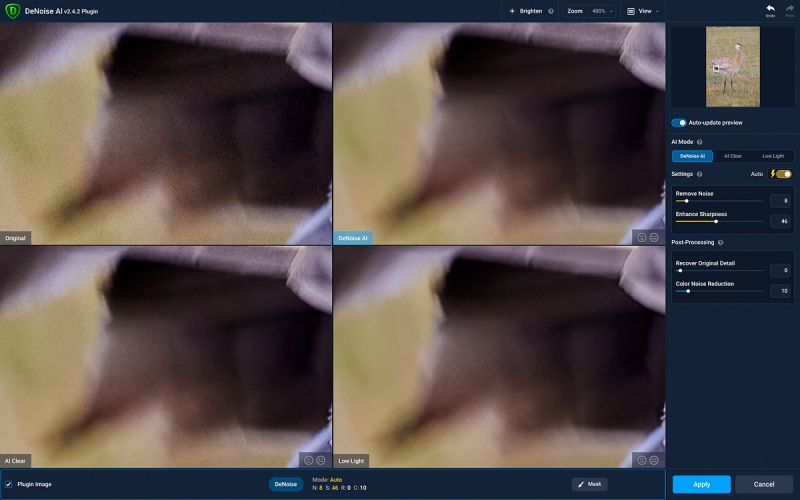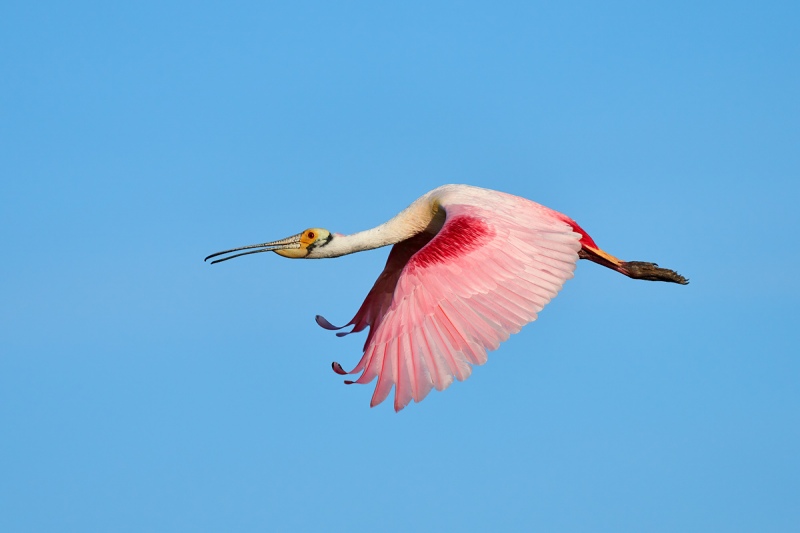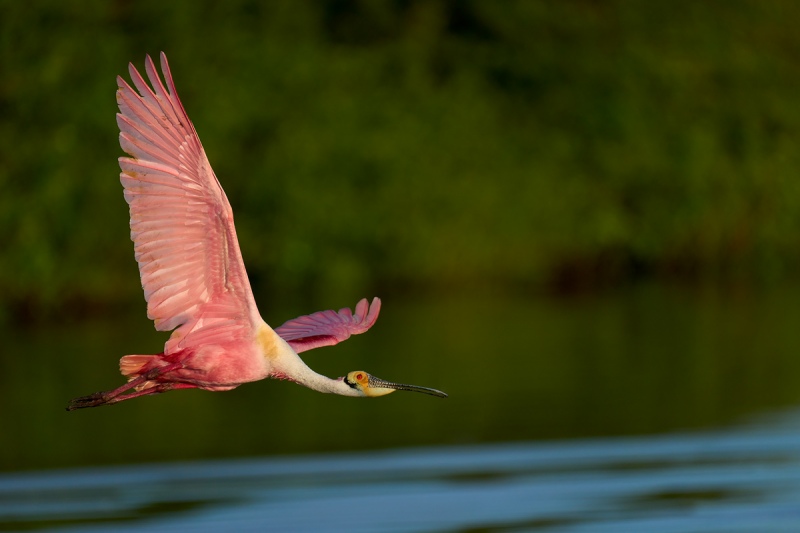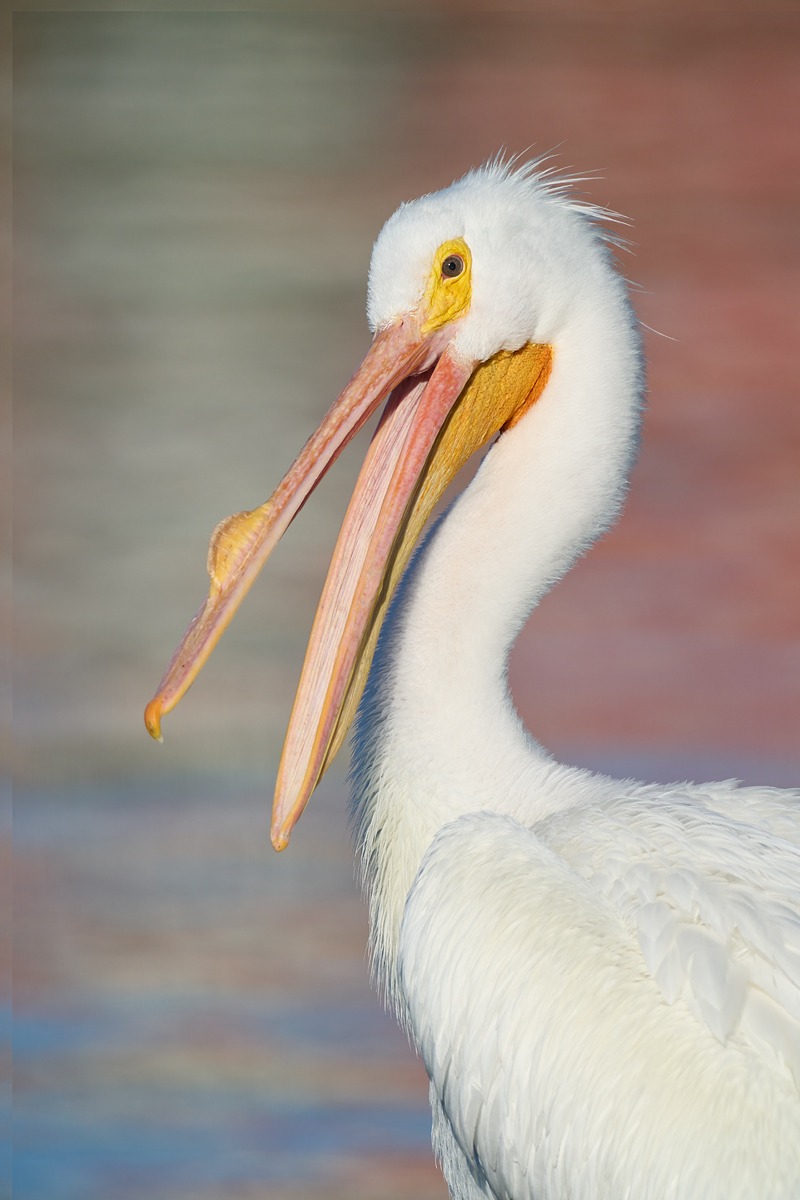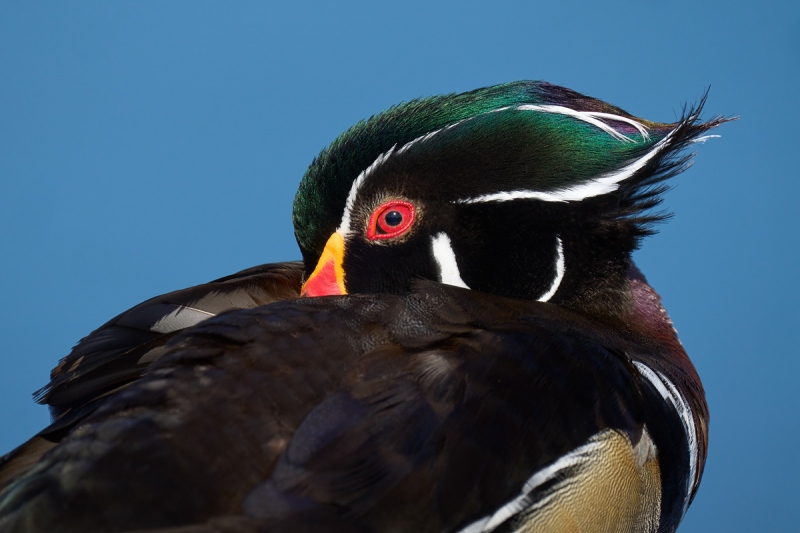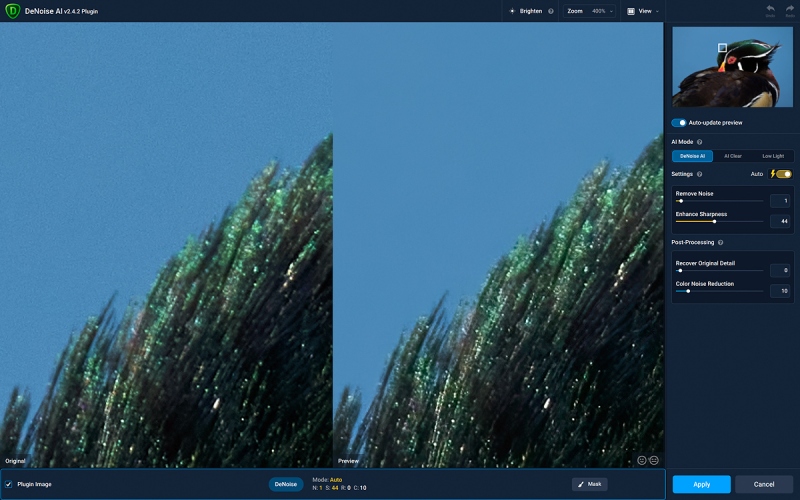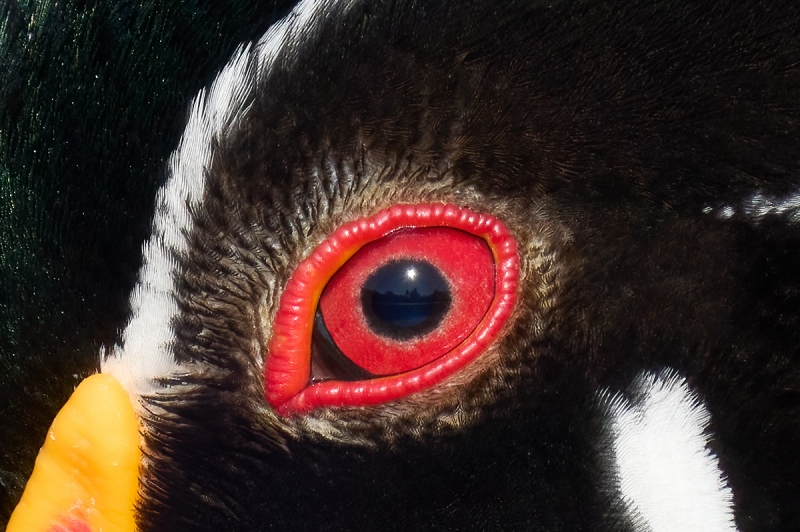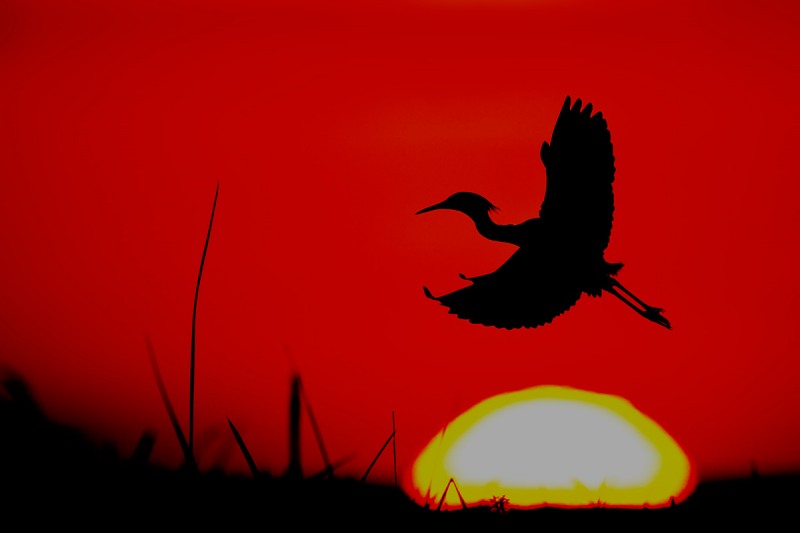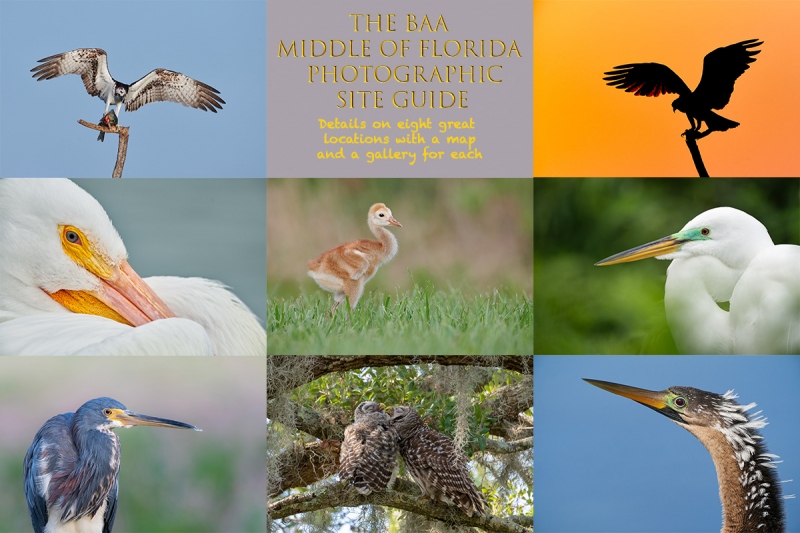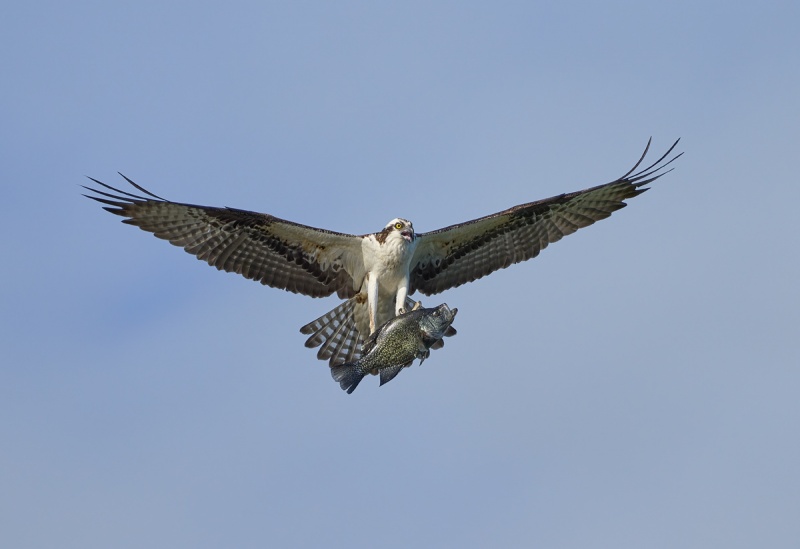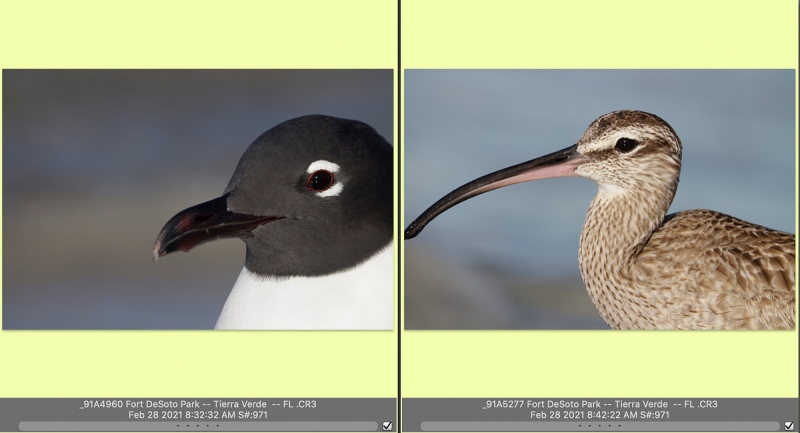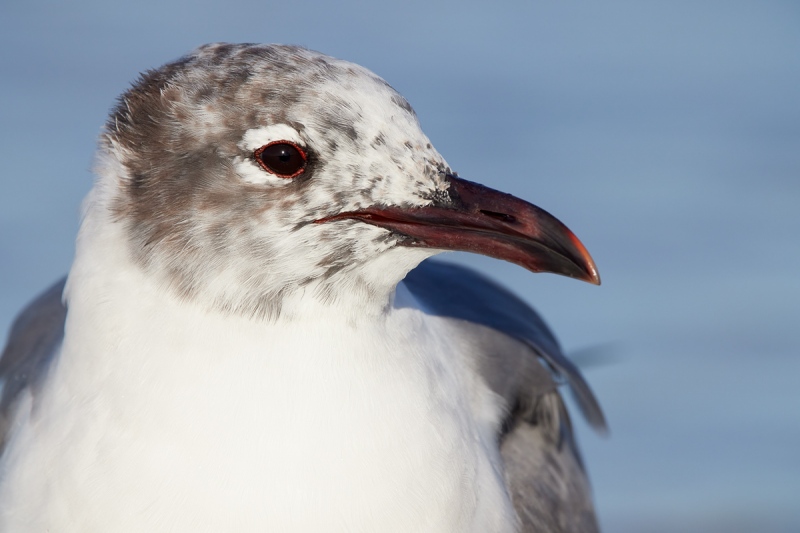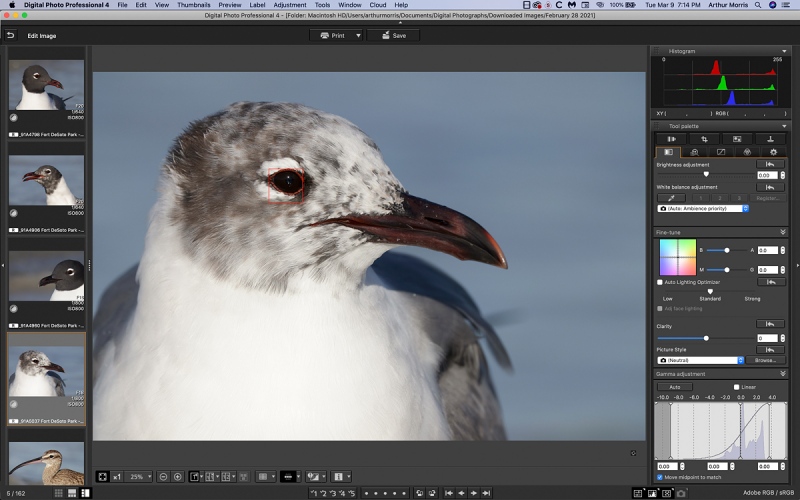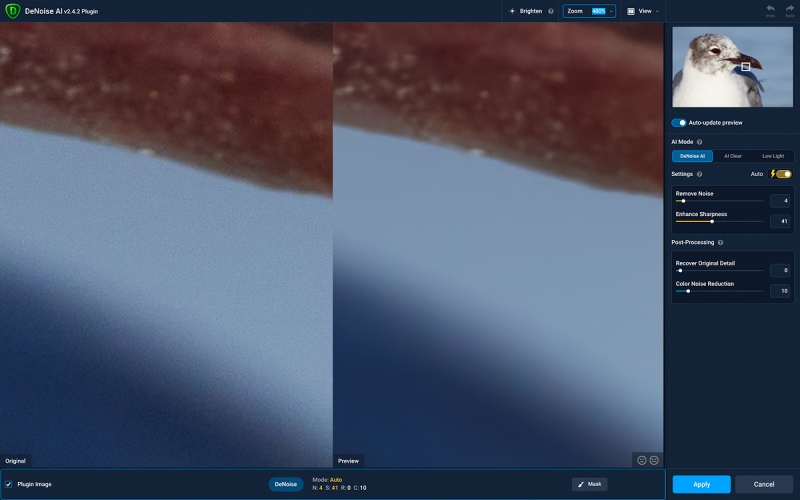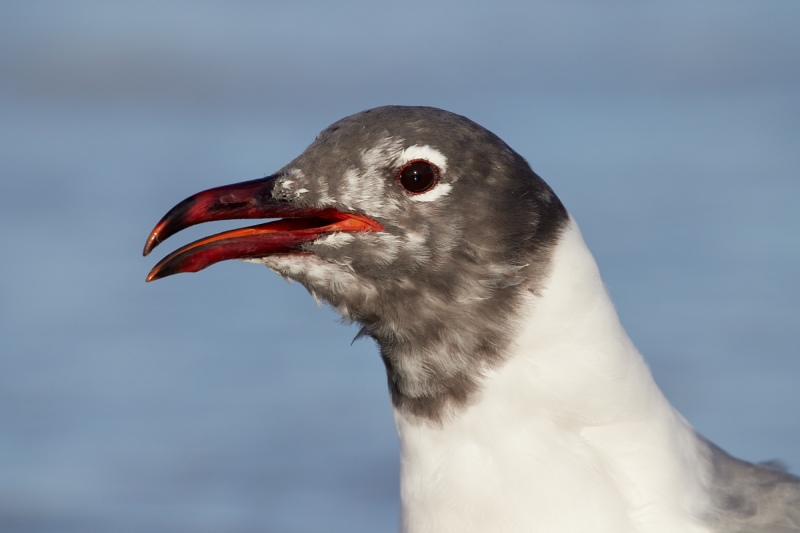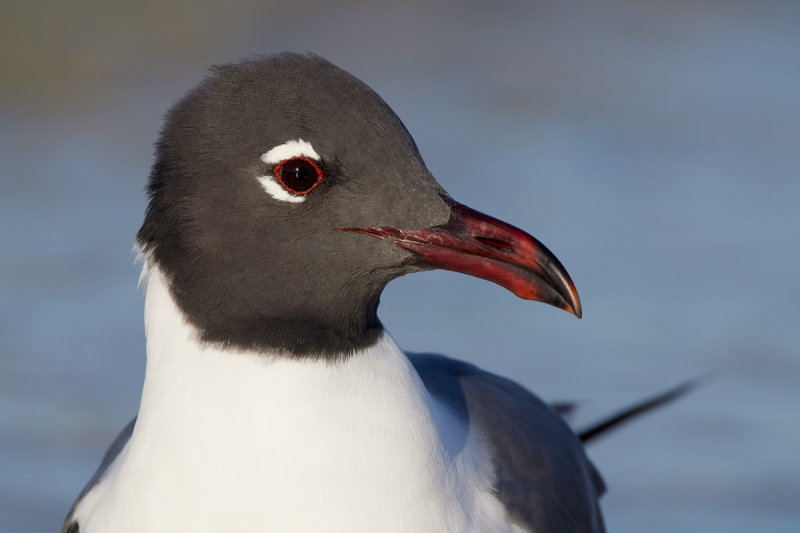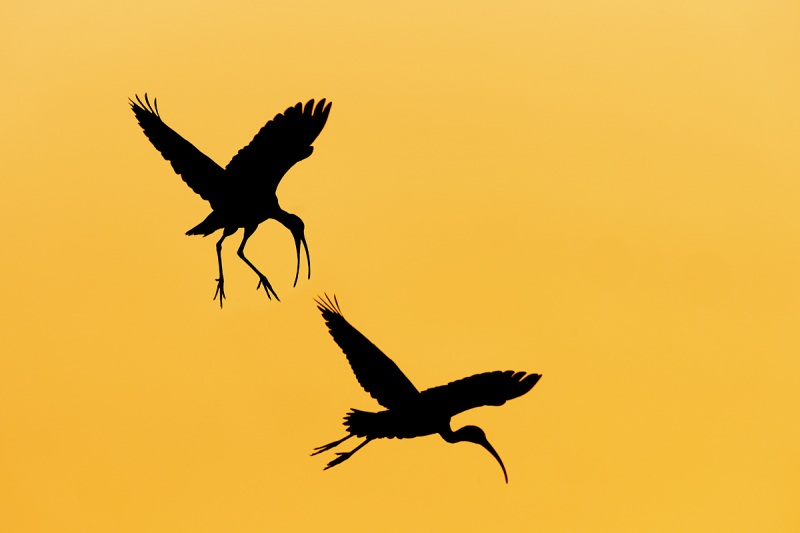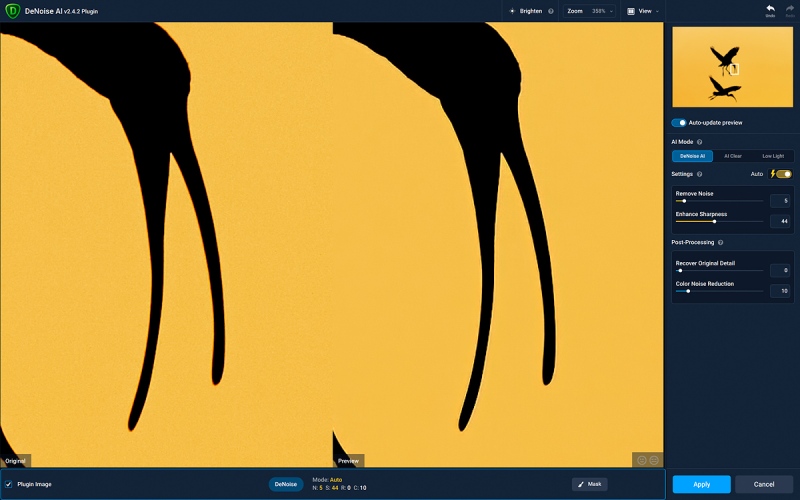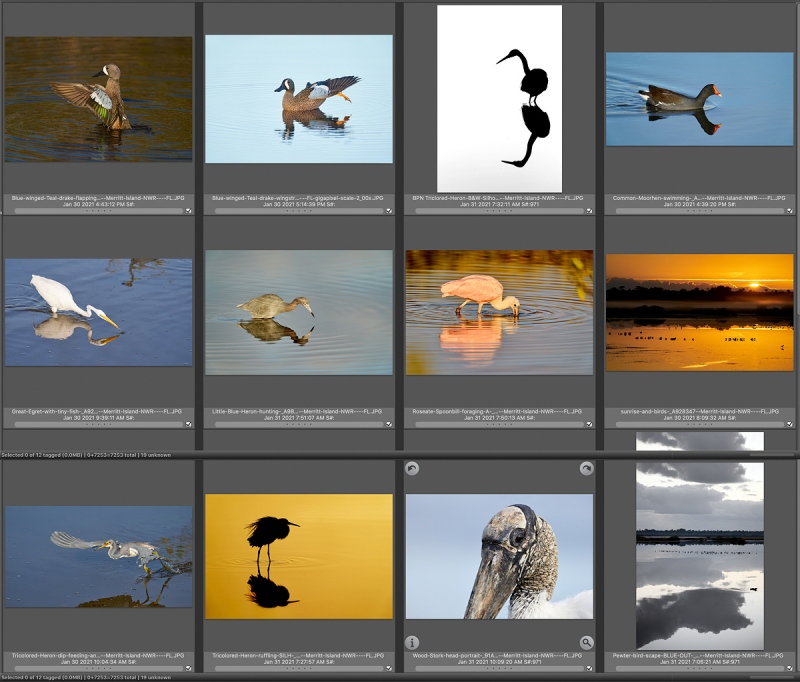March 27th, 2021 What’s Up?
Yesterday, Vaughn Larsen and I had yet another great morning at Stick Marsh. Vaughn, visiting from Colorado, worked with his R5/RF 100-500 rig. To say that he learned a ton about his R5 would be a huge understatement. More on that in tomorrow’s blog post.
Monday’s post will reveal a major problem that has been plaguing folks using the Sony Alpha 1 Mirrorless digital camera.
Today is Saturday 27 March 2021. The forecast for this morning is dead-solid perfect for bird photography: clear with a gentle southeast wind freshening as the morning progresses. I would love to be headed to Stick Marsh, my new favorite place in the world, but I simply have too much work to do. Today, I will working on the Sony Alpha a1 problem with the Alpha a1 Set-up and Info Group, preparing and sending out the second issue of the Stick Marsh Site Guide Subscription Service, and beginning to work on an all-new program entitled Designing and creating pleasing and dramatic natural history images. The latter is for a Zoom Webinar presentation that I will be doing for the South Shore Camera Club on April 7th.
I will, however, be headed down to the lake for a bit at about 7:30am. Wherever you are and whatever you are doing, I hope that you have a great day.
This blog post took about an hour to prepare and makes ninety-five days in a row with a new one. Please remember to use my B&H affiliate links or to save money at Bedfords by using the BIRDSASART discount code at checkout. Doing either often earns you free guides or discounts. And doing so often earns my great appreciation.
Unsolicited, via e-mail, from Fernando Ramos
The excellent Canon EOS R5 Camera User’s e-Guide is unlike anything I’ve encountered. Your detailed instruction supported by excellent reasoning is exactly what I needed to set-up my Canon EOS R5. Thank you for sharing your expertise with me; as a result, you saved me immeasurable time. Fernando
Unsolicited, via e-mail, from Joel Eade
Thank you so much for the R5 guide and I am honored to have had an image included! It is a wonderfully written, extremely comprehensive document that would benefit any R5 user. It is evident that a tremendous amount of time and effort was required to create it. After reading through, I can say it that flows in a logical fashion and that each item is carefully described in a way that is not difficult to follow. I agree with 99% of your set up suggestions 🙂 Joel
|
|
|
Cover Image courtesy of and Copyright 2021 Brian Sump (Sump scores!)
|
The BIRDS AS ART Canon EOS R5 Camera User’s e-Guide: $75.00
The guide is 82 pages long: 21,458 words. More than 50 DPP 4 Autofocus-depicting screen captures. And a 31 minute 44 second educational video. This guide took three and a half months of hard work and a ton of help from at least seventeen very helpful and generous folks.
The guide covers — in great detail — all Menu Items that are relevant to bird, nature, and wildlife photography. It does not cover video. The section on AF methods and the AF Gallery has been expanded from the R5/R6 AF e-guide. It remains the one of the great strengths of this guide. I share my thoughts on what I am sure is the single best AF Method for photographing birds in flight. As most of you know, the guide includes a simple and easy way to change AF Methods that was introduced to me by Geoff Newhouse. In the AF Gallery you will see exactly how Face Detection plus Tracking AF works. In the Educational R5 Gallery video, I share my favorite R5 images along with dozens of bird photography tips and techniques.
In addition, I teach you how to get the best exposures with your R5. Detailed instructions on using the great In-camera HDR and Multiple Exposure features will be appreciated by creative folks who like to have fun. The three shutter modes are explained in detail as well. Bruce Dudek solved the can’t-get-to-Auto ISO problem that had stumped everyone at Canon. This information is of course shared in the guide. You will learn how to set up your EVF (Electronic Viewfinder) and Screen toggle options. Not to mention that the mysterious performance of the Q Button is revealed and simplified. Brian Sump’s images reveal how well you can do when using the R5 with EF lenses using one of the three Canon EF-EOS R Mount Adapters (as Donna did with Image #1 below). You will learn how I use Customize Dials to put either ISO or EC on the Thumb Dial and how to set up and save Custom Shooting Modes (C1-C3) that can remember both your Customize Dial and Customize Button settings! That is something that none of the SONY bodies do. 🙁 Near the end of the guide I share my all-important MY MENU items with you.
Like all BAA educational materials, the R5 guide is written in my informal, easy-to-follow style. I am quite proud of this guide and look forward to hearing your thoughts on our hard work.
You can purchase your copy of the BIRDS AS ART Canon EOS R5 Camera User’s e-Guide for $75.00 here in the BAA Online Store or by calling Jim in the office weekday afternoons at 863-692-0906 with your credit card in hand.
New and Better Bedfords Discount Policy!
You can now save 3% on all of your Bedfords photo gear purchases by entering the BIRDSASART coupon code at checkout. Your discount will be applied to your pre-tax total. In addition, by using the code you will get 2nd day air shipping via Fed Ex.
Grab a Nikon AF-S Teleconverter TC-14E III and save $14.99. Purchase a Canon EOS R5 and your discount will be $116.97. Purchase a Sony FE 600mm f/4 GM OSS lens and save a remarkable $389.94! Your Bedford’s purchase no longer needs to be greater than $1,000.00 for you to receive a discount. The more you spend, the more you save.
Money Saving Reminder
Many have learned that if you need a hot photo item that is out of stock at B&H and would enjoy free second-day air shipping, your best bet is to click here, place an order with Bedfords, and enter the coupon code BIRDSASART at checkout. If an item is out of stock, contact Steve Elkins via e-mail or on his cell phone at (479) 381-2592 (Central time). Be sure to mention the BIRDSASART coupon code and use it for your online order to save 3% and enjoy free 2nd-day air shipping. Steve has been great at getting folks the hot items that are out of stock at B&H and everywhere else. The wait lists at the big stores can be a year or longer for the hard to get items. Steve will surely get you your gear long before that. For the past year, he has been helping BAA Blog folks get their hands on items like the SONY a9 ii, the SONY 200-600 G OSS lens, the Canon EOS R5, the Canon RF 100-500mm lens, and the Nikon 500mm PF. Steve is personable, helpful, and eager to please.


Gear Questions and Advice
Too many folks attending BAA IPTs (remember those?) and dozens of photographers whom I see in the field and on BPN, are–out of ignorance–using the wrong gear especially when it comes to tripods and more especially, tripod heads… Please know that I am always glad to answer your gear questions via e-mail. Those questions might deal with systems, camera bodies, accessories, and/or lens choices and decisions.
Kudos
Donna Bourdon is both a dear friend and a many multiple IPT veteran. Her timing was perfect when creating this image. The light was sweet, she was right on sun angle, the exposure spot-on, and she gave the birds just enough room in the frame. And the processing was perfect. Jeez, I almost forgot the water droplets! You can see more of Donna’s work on her FB page here or here on Instagram.
The R5 with EF Lenses
Both Donna Bourdon and Brian Sump report that R5 AF (and all other) performance is stellar when it is used with EF super-telephoto (and other) EF lenses. Donna uses the Canon Control Ring Mount Adapter EF-EOS R and Brian uses the Canon Mount Adapter EF-EOS R. Learn more about the three EF-EOS R adapters in the blog post here.
Mute Swan: Invasive But Beautiful Introduced Species
Mute Swan (Cygnus olor) is a large member of the waterfowl family Anatidae. It is native to much of Eurosiberia, and (as a rare winter visitor), to the far north of Africa. It is an introduced species in North America – home to the largest populations outside of its native range – with additional smaller introductions in Australasia and southern Africa. The name ‘mute’ derives from it being less vocal than other swan species.
This species was introduced to North America in the late 19th century. Recently, it is widely viewed as an invasive species because of its rapidly increasing numbers and its adverse effects on other waterfowl and native ecosystems. Mute Swans will chase native breeding birds from their nests. A single bird can consume four to eight pounds of plants a day. They uproot and destroy wetlands vegetation, a main food source for native birds and cover for native fish and invertebrates. These large birds show little fear of people. Ironically, the Mute Swans in Lakeland are owned and protected by the city …
|
|
|
This image was created on 20 February 2021 at my favorite morning spot in Lakeland, FL. I used the hand held Canon RF 100-500mm f/4.5-7.1L IS USM lens (at 500mm) and the highly touted 45MP Canon EOS R5 Mirrorless Digital camera body. ISO 800. Exposure determined via test image and blinkies evaluation: 1/ 400 sec. at f/7.1 (wide open) in Manual (M) mode. AWB at 8:51am in the shade on a partly sunny morning. 1-point AI Servo AF was active at the moment of exposure and performed as expected.
Click on the image to enjoy a larger version.
Image #2: Mute Swan resting on nest
|
Learning the R5
I normally do not photograph introduced species (or “soup” ducks). But I made an exception as this tame swan, resting peacefully on its fenced-in nest, enabled me to learn about getting the right exposure with the R5 and about the various R5 AF Methods. As this bird blinked when I created my favorite image design, the eye was replaced with one borrowed (via a Quick Mask) from another image in the series. Learn to do that and tons more in Digital Basics II.
|
|
|
Click on the image to view a larger version.
Image #2A: DPP 4 screen capture for the Mute Swan resting on nest image
|
AF Strategy for All Systems
When working with static subjects, all modern camera systems allow the user to select a single AF point and move it around the frame to exactly the right spot. That is what I did here (while hand holding). The The BIRDS AS ART Canon EOS R5 Camera User’s e-Guide covers all aspects of the fabulous R5 AF system. I let you know which AF Method has worked best for me for birds in flight, which AF Methods to enable, and which to disable. And the extensive DPP 4 screen capture gallery depicts and explains exactly how the AF system performs.
|
|
|
Click on the image to view a larger version.
Image #2B: Topaz DeNoise screen capture for the Mute Swan resting on nest image
|
Topaz DeNoise Tip
What can I say? Topaz DeNoise is amazing! Note the position of the Navigator box in the upper right corner of the original frame. Working at 400%, I placed the box on the darkest shaded portion of the image where the noise would be most visible. Be sure to click the image to see the complete and non-destructive elimination of the background noise.
Great Topaz News!
Folks who use the BAA Topaz link to purchase Sharpen AI, DeNoise AI, or the Utility Bundle (or any other Topaz plug-ins), will receive a 15% discount by entering the ARTHUR15 code at checkout. If the stuff is on sale (as it usually is), you save 15% off of the sale price! To get the discount you must use my link and you must enter the discount code. Be sure to start with this link.
Those who purchase Sharpen AI, DeNoise AI, or any other Topaz plug-ins using my link and then entering the ARTHUR15 code at checkout can e-mail to request a short Getting Started with Topaz e-Guide. Please include a copy of your Topaz receipt that shows the discount. Aside from the basics, the guide explains how to install the plug-ins so that they appear in the Photoshop Filter Menu.
Typos
With all blog posts, feel free to e-mail or to leave a comment regarding any typos or errors.
March 26th, 2021 What’s Up?
Stick Marsh continues to consistently provide some of the very best photographic opportunities I have ever come across in my almost 38 years of bird photography. I screwed up yesterday by switching back and forth from the 200-600 G lens to the 600 GM (with a TC) and back again. Eery time I switched, I wound up having the wrong rig in my hands. (What else is new???) Today I will put one of my a9 ii bodies on the 600 f/4 with the 1.4X TC and leave it on the grass beside me where I can grab it and hand hold when needed for head portraits.
Despite my misadventures, I wound up with 122 keepers after the first edit on Thursday. Wednesday was 146 keepers after the first edit. As I said, the action at Stick Marsh is phenomenal and unprecedented. On Thursday I tried some out of the box stuff and got some neat images — including the one featured in today’s blog post. What’s more amazing is that with the amazing AF capabilities of the latest mirrorless cameras this (relatively) old man has become a fairly proficient flight photographer (though I still struggle at times with getting the bird in the middle of the frame and keeping it there …) That said, with the last two edits I have deleted hundreds of sharp, perfectly exposed flight shots, images that I and others would have given their eye teeth for just a year ago …
Today is Friday 26 March 2021. I am meeting with BPN/Brian Sump-friend Vaughn Larsen for a morning of In-the-Field Instruction. Vaughn is visiting Florida from the Denver, CO area. The forecast for this morning is for partly cloudy skies with light winds from the south. That is a great forecast for bird photography; the more sun the better. Wherever you are and whatever you are doing, I hope that you have a great day.
This blog post took about an hour to prepare and makes ninety-four days in a row with a new one. Please remember to use my B&H affiliate links or to save money at Bedfords by using the BIRDSASART discount code at checkout. Doing either often earns you free guides or discounts. And doing so often earns my great appreciation.
DeSoto IPT Notes
You will see below that I have committed to both DeSoto IPTs with just a single registrant? Why? Because I value your time and interest. If you are arranging your schedule, taking time off from work, and planning your travel there is no way that I will disappoint you. Note: certain IPTs like Homer Bald Eagle IPTs and Galapagos Photo Cruises (both coming soon) do require a minimum number of sign-ups because of the huge up-front money that is required. DeSoto has been hot lately.
Stick Marsh In-the-Field Instruction
If you live in or will be visiting Florida in the next few weeks, consider joining me for a morning of In-the-Field Instruction at Stick Marsh. A three hour morning session is $300.00. You will enjoy spoonbill flight action beyond what you might have ever dreamed of. You can contact me via e-mail to discuss a schedule and the weather. Or, you can try me on my cell phone or message me at 1-863-221-2372. I will be running a Stick Marsh IPT next March.
The Stick Marsh Site Guide Subscription Service
The Site Guide Subscription Service is a new concept. I e-mailed the first issue yesterday to five smart folks: Stick Marsh Site Guide e-Mail #1: The Basics. I will be e-mailing the next installment tomorrow, Saturday 27 March. The Basics includes specific directions to the site, and a map of the rookery area with specific instructions and wind, weather, and where-to-be advice. There are lots of photographers at Stick Marsh most days. Many are skilled at hand-holding 500 and 600mm f/4 telephotos lenses. But with all due respect, none of them can come anywhere near me when it comes to analyzing the photo opps at a given location. With the exception of a very nice and very helpful man I met, Fred Vaughn, every single photographer got to their favorite spot and never moved. We moved around a lot and had great and different chances all day long. After most of my visits, you will receive an e-mail noting the best current locations and anything new that I’ve learned.
To sign up for the Stick Marsh Site Guide Subscription Service, call Jim in the office weekday afternoons at 863-692-0906 with your credit card in hand or send a PayPal for the $100.00 to us at birdsasart@verizon.net. Please be sure to include the words Stick Marsh with your Paypal. At some point, we will get this item in the BAA Online Store.
I fully understand that you can go to Google Maps, find the Stick Marsh, visit, and likely make some good or great images. You might think, I can do fine just without artie’s advice. But you will do a whole lot better with it.
As above, please contact me via e-mail to explore the possibilities of a morning In-the-Field Instructional Session or two at Stick Marsh.
|
|
|
This image was created on 25 March 2021 at Stick Marsh. I used the hand held Sony FE 200-600mm f/5.6-6.3 G OSS lens (at 400mm) and The One, the Sony Alpha 1 Mirrorless digital camera. ISO 800. Exposure determined with ISO on the Thumb Wheel. The exposure was shown to be less than 1/3 stop under by RawDigger: 1/3200 sec. at f/6.3 (wide open) in Manual mode. AWB at 9:05am on partly sunny morning.
Wide/AF-C was active at the moment of exposure and performed perfectly. Click on the image to enjoy a larger version.
Image #1 and Only: Roseate Spoonbill leaving with stick for nest
|
Five Million to One Shot Comes Home! Or not?
Spoonbills were flying in one after another. They search around for a minute or two for the “best” stick — lord knows how they know which is the best stick — and then they take flight and head back to the rookery a bit more than one hundred yards distant. Every time a bird departs every photographer holds down the shutter button in hopes of getting a single good one in what is a very difficult situation at best. Why? The birds are flying away from us and even the AF system of the SONY a1 had trouble tracking the eye. Especially when there is not an eye in sight as with today’s featured image.
The sound of the shutters going off is almost as deafening as the airboats. Except for the shutters of the R5 shooters that are unfortunately silent. When the 20th bird took off to a crescendo of shutter releases, I called out, “These are one in five million chances.” Everyone laughed out loud.
I absolutely love today’s featured image. What do I like? The full downstroke wing position, the subtle gradation of the still-blue-water background, the great look at the incredible copper-orange tail feathers and the rich, carmine rump. And the stick!
One thing bugs me. If you think you know what it is, please leave a comment.
Does this image work for you? Why or why not?
Sony Alpha a1 Astounds
To learn exactly how I set up my Alpha a1 for flight photography to achieve results like those seen in Image #1, above, join the SONY Alpha a1 Set-up and Info Group.
SONY Alpha a1 Set-up and Info Group
With 18 members already, the SONY Alpha a1 Set-up and Info Group is going great guns as folks chime in with thoughtful questions and experience-based answers. I learned a ton recently in group e-mail exchanges with Geoff Newhouse, Craig Elson and James Spillman. Like the R5, the a1 is an incredibly complex camera body. But the sad news is that if you are doing bird photography right now, the Alpha a1 pretty much obliterates the competition with 51,000,000 gorgeous pixels and a science-fiction-like AF system … Right now the group is dealing with a fairly serious problem with the a1. We have made SONY aware of the problem and are hoping for a resolution soon.
All who purchased their Alpha a1 bodies via a BAA affiliate link receive a free subscription to the Sony Alpha a1 Set-Up and Info group. This same service may be purchased by anyone with an a1 body via a $150.00 Paypal sent to birdsasart@verizon.net indicating payment for Alpha a1 Info Updates. Or, you can call Jim in the office weekday afternoons at 863-692-0906 with your credit card in hand. New members will receive a composite e-mails that will bring them 100% up to date with where we are with this great new camera body.
|
|
|
All of the images were created at Fort DeSoto in April or early May. Click on the card to enjoy a larger version.
Fort DeSotoIPT card A
|
Fort DeSoto Spring IPT #1
Fort DeSoto Spring IPT #1. 3 1/2 DAYS. SAT 10 APR thru the morning session on TUES 13 APR 2021. $1499 includes three lunches. Limit: 6. Openings: 5.
While DeSoto is one of the rare photo hotspots with the potential to be great any day of the year, it absolutely shines in spring. Many of the wading birds and shorebirds are in full breeding plumage. The terns and gulls are courting and copulating. We will have lots of flight photography opportunities. Did I mention that many of the birds are silly tame?
A $499 deposit is required to hold your spot for this IPT. You can send a check (made out to “BIRDS AS ART) to us here: BIRDS AS ART, PO Box 7245, Indian Lake Estates, FL, 33855, or call Jim or Jennifer at the office with a credit card at 863-692-0906. Your balance, payable only by check, is due immediately after you sign up. If you have any questions, please feel free to contact me via e-mail. If you cancel due to COVID 19 concerns, all of your payments will be refunded.
|
|
|
All of the images were created at Fort DeSoto in April or early May. Click on the card to enjoy a larger version.
Fort DeSoto IPT card B
|
Fort DeSoto Spring IPT #2
Fort DeSoto Spring IPT #2. 3 1/2 DAYS. MON 26 APR thru the morning session on THURS 29 APR 2021. $1499 includes three lunches. Limit: 6. Openings: 5.
Not only am I conversant in all three major camera systems used in the US — Nikon, Canon, and SONY (sorry Andy Rouse …), I have used all three within the past four years. Those include both SONY and Canon mirrorless. On both of these IPTs you will learn how to get the best exposure, how to get the most out of your AF system, and how to get close to free and wild birds. And tons more.
A $499 deposit is required to hold your spot for this IPT. You can send a check (made out to “BIRDS AS ART) to us here: BIRDS AS ART, PO Box 7245, Indian Lake Estates, FL, 33855, or call Jim or Jennifer at the office with a credit card at 863-692-0906. Your balance, payable only by check, is due immediately after you sign up. If you have any questions, please feel free to contact me via e-mail. If you cancel due to COVID 19 concerns, all of your payments will be refunded.
|
|
|
All of the images were created at Fort DeSoto in April or early May. Click on the card to enjoy a larger version.
Fort DeSoto IPT card C
|
Fort DeSoto Spring IPTs Expected Species
With any luck, we should get to photograph the following species: Laughing, Ring-billed, Herring, and Lesser Black-backed Gull; Royal, Sandwich, and Forster’s Tern: Great, Snowy, and white and dark morph Reddish Egret and Great Blue, Little Blue, and Tricolored Heron; Yellow-crowned Night-Heron, Wood Stork, Roseate Spoonbill, and Brown Pelican. We will see and photograph lots of shorebirds including American Oystercatcher, Black-bellied, Wilson’s, Semipalmated, Snowy, and Piping Plover, Marbled Godwit, Willet, Dunlin, Red Knot, Sanderling, and Western and possibly White-rumped Sandpiper.
Sign up for both IPTs and enjoy a $200 discount. Most of us will be staying in nearby Gulfport.
Typos
With all blog posts, feel free to e-mail or to leave a comment regarding any typos or errors.
March 25th, 2021 Your Favorite?
All are invited to leave a comment and let us know which of today’s three featured Canon R5 images is their favorite, along with the reason they made their choice. It is very clear that for Canon shooters, the RF is the best overall body when it comes to creating sharp images of birds in flight and in action. The AF system on the ES-1DX III is superb but that body is much heavier and much more expensive.
What’s Up?
Joe Usewicz and I absolutely killed at Stick Marsh on Wednesday. The action was so good that we did not head home until 1:00pm! Clemens Van der Werf was there and joined Jim and me for dinner on the pool deck and a night’s lodging.
Today is Thursday 25 March 2021. The forecast for this morning is for gentle south winds at sunrise increasing to southeast at 10mph. That is close to dead solid perfect for bird photography. Wherever you are and whatever you are doing, I hope that you have a great day. Jim and Clemens and I are leaving for Stick Marsh at 5:50am.
As we have had several new sign-ups for the Alpha a1 group in recent days, I have created three Sony Alpha a1 Info and Set-up Group e-mails that summarize everything that we have come up with so far and clarifying some of the stuff we had been unsure of. Right now we are trying to solve a very large a1 problem … See yesterday’s blog post here for details on joining the group.
I finished sending the links for the complete R5 Camera User’s e-guide to all who earned a free copy or purchased it at 4:04am this morning. If you should have, but did not receive this e-mail, please check your Spam or Junk folder. If it is still MIA, please let me know via e-mail.
If you paid $25.00 for the R5/R6 AF Guide, you are entitled to a $10.00 discount on the Camera User’s e-Guide. To pay the $65.00, you can call Jim at 1-863-692-0906 weekday afternoons or send a Paypal to birdsasart@verizon.net for the $65.00. Be sure to include the words R5 Camera User’s Guide with your PayPal.
If you earned a free copy of the guide by purchasing your Canon mirrorless gear using a B&H affiliate link or by saving 3% at Bedfords, you are entitled to a $65.00 discount on the complete guide. You can call Jim as above, or shoot us a Paypal to birdsasart@verizon.net for $10.00. Again, be sure to include the words R5 Camera User’s Guide with your PayPal.
This blog post took about an hour to prepare and makes ninety-three days in a row with a new one. Please remember to use my B&H affiliate links or to save money at Bedfords by using the BIRDSASART discount code at checkout. Doing either often earns you free guides or discounts.
Comments and Responses on Donna Bourdon’s Fine Osprey Image
From the blog post here.
Guido Bee: March 23, 2021 at 11:58 am
Not sure about the 1-5, but many lenses are sharper just short of the max focal length, so just short may be better. Also, less danger of clipping a wing. Great exposure.
Arthur Morris/BIRDS AS ART: March 25, 2021 at 4:19 am
Hey Guy, One out of two ain’t bad :). The old “zoom out to increase sharpness” adage does not apply to modern telephoto zooms. Most all of them are razor-sharp at the long end. with love, a
ps: the brightness of the jpeg as presented does looks perfect. But the only way to know about the exposure of the CR.3 file is to bring the images into RawDigger.
KEN PRIDE: March 24, 2021 at 11:35 pm
I love this photo; 472mm fits the entire Osprey with it’s building materials into the frame; any longer focal length and the wingtip and the stick would have been clipped.
Arthur Morris/BIRDS AS ART: March 25, 2021 at 4:14 am
Good work Ken. You should be proud 🙂 Sometimes the very simplest answer is the best one. with love, artie
|
|
|
Cover Image courtesy of and Copyright 2021 Brian Sump (Sump scores!)
|
The BIRDS AS ART Canon EOS R5 Camera User’s e-Guide: $75.00
The guide is 82 pages long: 21,458 words. More than 50 DPP 4 Autofocus-depicting screen captures. And a 31 minute 44 second educational video. This guide took three and a half months of hard work and a ton of help from at least seventeen very helpful and generous folks.
The guide covers — in great detail — all Menu Items that are relevant to bird, nature, and wildlife photography. It does not cover video. The section on AF methods and the AF Gallery has been expanded from the R5/R6 AF e-guide. It remains the one of the great strengths of this guide. I share my thoughts on what I am sure is the single best AF Method for photographing birds in flight. As most of you know, the guide includes a simple and easy way to change AF Methods that was introduced to me by Geoff Newhouse. In the AF Gallery you will see exactly how Face Detection plus Tracking AF works. In the Educational R5 Gallery video, I share my favorite R5 images along with dozens of bird photography tips and techniques.
In addition, I teach you how to get the best exposures with your R5. Detailed instructions on using the great In-camera HDR and Multiple Exposure features will be appreciated by creative folks who like to have fun. The three shutter modes are explained in detail as well. Bruce Dudek solved the can’t-get-to-Auto ISO problem that had stumped everyone at Canon. This information is of course shared in the guide. You will learn how to set up your EVF (Electronic Viewfinder) and Screen toggle options. Not to mention that the mysterious performance of the Q Button is revealed and simplified. Brian Sump’s images reveal how well you can do when using the R5 with EF lenses using one of the three Canon EF-EOS R Mount Adapters (as Donna did with Image #1 below). You will learn how I use Customize Dials to put either ISO or EC on the Thumb Dial and how to set up and save Custom Shooting Modes (C1-C3) that can remember both your Customize Dial and Customize Button settings! That is something that none of the SONY bodies do. 🙁 Near the end of the guide I share my all-important MY MENU items with you.
Like all BAA educational materials, the R5 guide is written in my informal, easy-to-follow style. I am quite proud of this guide and look forward to hearing your thoughts on our hard work.
You can purchase your copy of the BIRDS AS ART Canon EOS R5 Camera User’s e-Guide for $75.00 here in the BAA Online Store or by calling Jim in the office weekday afternoons at 863-692-0906 with your credit card in hand.
The BAA Used Gear Page
The Used Gear page continues to be very active. The BAA Used Gear Page is the place to sell your used photographic equipment. We will help you to get your gear sold quickly for 30 to 70% or more than what the big guys are offering … Doubt me? Check out the Recent Sales list at the bottom of the page.
Via e-mail from Kirk Stitt
I recently had my first experience as a seller on your site. I had been very happy with several earlier purchases. I am very impressed with the services you provided with regards to listing my Canon EF 500 f/4L IS II USM lens. Your suggestions for pricing were very valuable along with the great reach the Used Gear page provides. I was not interested a fire sale, but rather in a fair price for me as the seller and in an attractive price for a potential buyer. Your pricing suggestions were right on and your fees are very fair. Thanks again. Sincerely, Kirk
Canon EOS-1DX Professional Digital Camera Body
BAA Record-low Price!
Accomplished photographer and BAA-friend Jim Burns is offering a Canon EOS-1DX camera body in like-new condition for a BAA record-low $949.00. The sale includes an extra LP-E4N batteries, the dual battery charger, the front body cap, and insured ground shipping via major courier to lower-48 addresses. Your item will not ship until your check clears unless other arrangements are made.
Please contact Jim via e-mail or by phone or text: 1-602-616-9431, Mountain standard time (Arizona is not on DST).
Two fast, rugged 1D X bodies served as my workhorse cameras for more than four years. I used them to create hundreds of family-jewels-type images. I actually like the 1D X more than I liked my 1D X IIs. artie
Canon BG-E20 battery grip for the EOS 5D Mark IV dSLR
Accomplished photographer and BAA-friend Jim Burns is offering a new-in-the-box Canon BG-E20 battery grip for the EOS 5D Mark IV for a very low $179.00. The sale includes the original box and insured ground shipping via major courier to lower-48 addresses. Your item will not ship until your check clears unless other arrangements are made.
Please contact Jim via e-mail or by phone or text: 1-602-616-9431, Mountain standard time (Arizona is not on DST).
Enjoy longer shooting times and improved control in portrait orientation with the Canon BG-E20 Battery Grip for your EOS 5D Mark IV. Able to hold up to two LP-E6/LP-E6N Li-ion battery packs, this grip will effectively double your shooting time. It features vertically-positioned controls, including a shutter release button, a multi-controller, and an AF area selection button. The battery grip is constructed from magnesium alloy to match that of the 5D Mark IV and is both dust- and water-resistant. I used this grip with all of my 5D IV bodies to give them a pro-body feel. The grip sells new for $299.00 so if you are in the market for one, grab Jim’s ASAP. MFR and artie
Canon EF 70-200mm f/2.8L IS II zoom lens
BAA Record-low Price!
Accomplished photographer and BAA-friend Jim Burns is offering a Canon EF 70-200mm f/2.8L IS II zoom lens in like-new condition for BAA record-low $749.00. The sale includes the rear lens cap, a generic front cap, the tough fabric lens case, and insured ground shipping via major courier to lower-48 addresses. Your item will not ship until your check clears unless other arrangements are made.
Please contact Jim via e-mail or by phone or text: 1-602-616-9431, Mountain standard time (Arizona is not on DST).
The 70-200mm f/2.8 lenses in all systems are huge favorites with nature and wildlife photographers. They are fast, very sharp, and extremely versatile. All pair well with a 1.4X teleconverter. They are great for bird-scapes, wildlife, large mammals, scenics, sports, low light situations, and lots more. I used mine often to photograph granddaughter Maya’s dance recitals. And for birds in flight at close range they are unbeatable. artie
New and Better Bedfords Discount Policy!
You can now save 3% on all of your Bedfords photo gear purchases by entering the BIRDSASART coupon code at checkout. Your discount will be applied to your pre-tax total. In addition, by using the code you will get 2nd day air shipping via Fed Ex.
Grab a Nikon AF-S Teleconverter TC-14E III and save $14.99. Purchase a Canon EOS R5 and your discount will be $116.97. Purchase a Sony FE 600mm f/4 GM OSS lens and save a remarkable $389.94! Your Bedford’s purchase no longer needs to be greater than $1,000.00 for you to receive a discount. The more you spend, the more you save.
Money Saving Reminder
Many have learned that if you need a hot photo item that is out of stock at B&H and would enjoy free second-day air shipping, your best bet is to click here, place an order with Bedfords, and enter the coupon code BIRDSASART at checkout. If an item is out of stock, contact Steve Elkins via e-mail or on his cell phone at (479) 381-2592 (Central time). Be sure to mention the BIRDSASART coupon code and use it for your online order to save 3% and enjoy free 2nd-day air shipping. Steve has been great at getting folks the hot items that are out of stock at B&H and everywhere else. The wait lists at the big stores can be a year or longer for the hard to get items. Steve will surely get you your gear long before that. For the past year, he has been helping BAA Blog folks get their hands on items like the SONY a9 ii, the SONY 200-600 G OSS lens, the Canon EOS R5, the Canon RF 100-500mm lens, and the Nikon 500mm PF. Steve is personable, helpful, and eager to please.


Gear Questions and Advice
Too many folks attending BAA IPTs (remember those?) and dozens of photographers whom I see in the field and on BPN, are–out of ignorance–using the wrong gear especially when it comes to tripods and more especially, tripod heads… Please know that I am always glad to answer your gear questions via e-mail. Those questions might deal with systems, camera bodies, accessories, and/or lens choices and decisions.
|
|
|
This image was created on 26 February 2021 at Fort DeSoto Park, Tierra Verde, FL. I used the handheld Canon RF 100-500mm f/4.5-7.1L IS USM lens, with the Canon Extender RF 1.4x (at 508mm) and the highly touted 45MP Canon EOS R5 Mirrorless Digital camera body. ISO 400. Exposure determined via test image and blinkies evaluation: 1/1250 sec. at f/10 (wide open!) in Manual mode. AWB at 8:58m on sunny morning.
Face detection + Tracking/AI Servo AF was active at the moment of exposure and performed perfectly.
Click the image to see a larger version.
Image #1: Great Blue Heron scratching
|
Basic Lesson #1
When photographing a scratching bird at close (or really, at any) range, head angle is of utmost importance. If the bird’s head if angled away from you — even ever-so-slightly, the image will be an insta-delete.
R5 Versatility
By adding the RF 1.4X teleconverter you have a 420-700mm f/10 zoom lens that focuses down to inside of four feet. Like all zoom lenses, this combo allows many framing options. A key to the success of Image #1 was zooming out wide enough to avoid clipping the right ankle. (Yes, what we think of as a bird’s knee is actually the ankle.) Note: when you add either RF TC to the 100-500 it is not possible to zoom out wider then the 300mm mark. If you try to mount the TC to the lens you must be zoomed in past the 300mm mark or it will not fit into the back of the lens.
Blog Post Question
This is the same very cooperative GBH that was featured in a fairly recent (R5) blog post. It was posing atop Battery Bigelow. If you can find that post, please leave a comment with the link. I searched for a while this morning and came up empty …
|
|
|
This image was created on 28 February 2021 at Fort DeSoto Park, Tierra Verde, FL.I used the hand held Canon RF 100-500mm f/4.5-7.1L IS USM lens (at 135m) and the highly touted 45MP Canon EOS R5 Mirrorless Digital camera body. ISO 800. Exposure determined via test image and blinkies evaluation:1/ 1250 sec. at f/8 in Manual (M) mode. AWB at 7:30am on a partly sunny morning. Face detection + Tracking/AI Servo AF was active at the moment of exposure and performed just fine.
Click on the image to enjoy a larger version.
Image #2: Great Blue Heron body flight shot
|
Basic Lesson #2
When unexpected action occurs, push the shutter button. You never know what you’re gonna get.
R5 Versatility
Here I zoomed out ASAP AWAP but it was not enough. But I listened to my own oft-given advice and came up with something interesting.
Basic Lesson #3
With the wind and the light behind you, watch for birds dipping their breasts in the water. Nine times out of ten they will flap in place, jump up, and fly toward shore.
Basic Lesson #4
When photographing birds in flight and in action, keep the shutter button pressed down hard until after the action is over. With the 20fps frame rate of the R5, you will have many nice wing positions and poses to choose from.
R5 Versatility
The R5/RF 100-500 is a superb birds in flight and in action rig. Especially if you know the best AF Method to use. Yes, the BIRDS AS ART Canon EOS R5 Camera User’s e-Guide to learn the best R5 AF Method for flight and action.
Typos
With all blog posts, feel free to e-mail or to leave a comment regarding any typos or errors.
March 24th, 2021 What’s Up?
Joe Usewicz and I absolutely killed at Stick Marsh on Wednesday. The action was so good that we did not head home until 1:00pm!
Are You in Florida and Free on Thursday (and/or Friday) Morning?
If yes, consider joining me on Thursday and/or Friday morning at Stick Marsh for a morning In-the-Field Instructional Session or two. You will enjoy spoonbill flight action beyond what you might have ever dreamed of. Please contact me ASAP via cell phone (1-863-221-2372) or via e-mail to explore the possibilities to learn the rates and set up a schedule.
March 24th, 2021 What’s Up
My hard work is in the process of being well-rewarded as we sold lots of BAA EOS R5 Camera User’s e-Guides on Tuesday. If you missed the announcement of the publication of this amazing guide, see yesterday’s blog post here.
If you paid $25.00 for the R5/R6 AF Guide, you are entitled to a $10.00 discount on the Camera User’s e-Guide. To pay the $65.00, you can call Jim at 1-863-692-0906 weekday afternoons or send a Paypal to birdsasart@verizon.net for the $65.00. Be sure to include the words R5 Camera User’s Guide with your PayPal.
If you earned a free copy of the guide by purchasing your Canon mirrorless gear using a B&H affiliate link or by saving 3% at Bedfords, you are entitled to a $65.00 discount on the complete guide. You can call Jim as above, or shoot us a Paypal to birdsasart@verizon.net for $10.00. Again, be sure to include the words R5 Camera User’s Guide with your PayPal.
The weather yesterday nice. Except for my swim, I stayed in and worked hard all day. Joe Usewicz joined Jim and I for an early fresh tuna dinner on the pool deck. Joe joined me for the first time for an In-the-field Instructional session at DeSoto in February. After dinner he shared some of his more recent images with me on his I-pad. His improvement has been nothing short of dramatic!
Joe and I are headed for Stick Marsh early today, Wednesday 24 March 2021. The weather is showing as partly cloudy with almost no wind, then clearing and picking up a bit from the south. Wherever you are and whatever you are doing, I hope that you have a great day.
As I have had several new sign-ups for the Alpha a1 group in recent days, I created a two Sony Alpha a1 Info and Set-up Group e-mail summarizing everything that we have come up with so far and clarifying some of the stuff we had been unsure of. See below for details on joining the group.
This blog post took about and an hour to prepare and makes ninety-two days in a row with a new one. Please remember to use my B&H affiliate links or to save money at Bedfords by using the BIRDSASART discount code at checkout. Doing either often earns you free guides or discounts.
The Stick Marsh Site Guide Subscription Service
The Site Guide Subscription Service is a new concept. I e-mailed the first issue yesterday to five smart folks: Stick Marsh Site Guide e-Mail #1: The Basics. It includes specific directions to the site, and a map of the rookery area with specific instructions and wind, weather, and where-to-be advice. There are lots of photographers at Stick Marsh most days. Many are skilled at hand-holding 500 and 600mm f/4 telephotos lenses. But with all due respect, none of them can come anywhere near me when it comes to analyzing the photo opps at a given location. With the exception of a very nice and very helpful man I met, Fred Vaughn, every single photographer got to their favorite spot and never moved. We moved around a lot and had great and different chances all day long. After most of my visits, you will receive an e-mail noting the best locations and anything new that I learned.
To sign up for the Stick Marsh Site Guide Subscription Service, send a PayPal for $100.00 to us at birdsasart@verizon.net and be sure to include the words Stick Marsh. Or, you can call Jim any day at 1-863-692-0906 to pay by credit card. At some point, we will get this item in the BAA Online Store.
I fully understand that you can go to Google Maps, find the Stick Marsh, visit, and likely make some good or great images. You might think, I can do fine just without artie’s advice. But you will do a whole lot better with it.
Please contact me via e-mail to explore the possibilities of a morning In-the-Field Instructional Session or two at Stick Marsh.
|
|
|
This image was created on 20 March 2021 at Stick Marsh. I used the hand held Sony FE 200-600mm f/5.6-6.3 G OSS lens (at 397mm) and The One, the Sony Alpha 1 Mirrorless digital camera. ISO 640. Exposure determined with ISO on the Thumb Wheel. The exposure was shown to be 1/2 stop under by RawDigger: 1/3200 sec. at f/6.3 (wide open) in Manual mode. AWB at 8:55am on clear morning.
Wide/AF-C was active at the moment of exposure and performed perfectly. Click on the image to enjoy a larger version.
Image #1: Roseate Spoonbill flaring to land
|
One of Many Dozens …
As seen in the recent Pink Bonanza blog post here, I enjoyed a phenomenal day at Stick Marsh on 20 March. This was one of many dozens of dramatic, razor sharp keepers from that morning session. With the bird seemingly flying to my right but looking to my left, I had a hard time with the crop. What do you think of the placement of the bird in the frame? I am hoping for a repeat with Joe today but am not sure how long this remarkable incoming flight situation will last.
Still Room for You on Thursday or Friday Morning …
I have room for one or two more folks on Thursday and or Friday morning at Stick Marsh. Please contact me via e-mail to explore the possibilities of a morning In-the-Field Instructional Session or two at the amazingly wonderful site.
Sony Alpha a1 Astounds
To learn exactly how I set up my Alpha a1 for flight photography to achieve results like those seen in Image #1, above, join the SONY Alpha a1 Set-up and Info Group.
SONY Alpha a1 Set-up and Info Group
With 17 members already, the SONY Alpha a1 Set-up and Info Group is going great guns as folks chime in with thoughtful questions and experience-based answers. I learned a ton recently in group e-mail exchanges with Geoff Newhouse, Craig Elson and James Spillman. Like the R5, the a1 is an incredibly complex camera body. But the sad news is that if you are doing bird photography right now, the Alpha a1 pretty much obliterates the competition with 51,000,000 gorgeous pixels and a science-fiction-like AF system …
All who purchased their Alpha a1 bodies via a BAA affiliate link receive a free subscription to the Sony Alpha a1 Set-Up and Info group. This same service may be purchased by anyone with an a1 body via a $150.00 Paypal sent to birdsasart@verizon.net indicating payment for Alpha a1 Info Updates. New members will receive a composite e-mail that will bring them right up to where we are with the great camera body.
Typos
With all blog posts, feel free to e-mail or to leave a comment regarding any typos or errors.
March 23rd, 2021 What’s Up?
I am thrilled that the BIRDS AS ART Canon EOS R5 Camera User’s e-Guide is now finished. Whew! Tomorrow, we will be sending out the link to the final PDF (and the link to the video) to all who have purchased the guide or earned a free or discounted copy by using a BAA affiliate link. The last two days were cool and grey and I never even thought about picking up a lens. I did take a nice walk and a swim both days.
Fort DeSoto ITF veteran Joe Usewicz is joining me for a Stick Marsh session on Wednesday morning. BPN/Brian Sump-friend Vaughn Larsen will be joining me on Friday morning. And the M&M boys, Morris Herstein and Mike Gotthelf, have signed up for a two-morning/one afternoon private session at Stick Marsh in early April.
Today is Tuesday 23 March and it is very foggy here at ILE. As I still have a ton of work to do I am not going anywhere.
Wherever you are and whatever you are doing, I hope that you have a great day.
This blog post took about 2 hours (and 3 1/2 months!) to prepare and makes ninety-one days in a row with a new one. Please remember to use my B&H affiliate links or to save money at Bedfords by using the BIRDSASART discount code at checkout. Doing either often earns you free guides or discounts.
|
|
|
Cover Image courtesy of and Copyright 2021 Brian Sump (Sump scores!)
|
The BIRDS AS ART Canon EOS R5 Camera User’s e-Guide: $75.00
The guide is 82 pages long: 21,458 words. More than 50 DPP 4 Autofocus-depicting screen captures. And a 31 minute 44 second educational video. This guide took three and a half months of hard work and a ton of help from at least seventeen very helpful and generous folks.
The guide covers — in great detail — all Menu Items that are relevant to bird, nature, and wildlife photography. It does not cover video. The section on AF methods and the AF Gallery has been expanded from the R5/R6 AF e-guide. It remains the one of the great strengths of this guide. I share my thoughts on what I am sure is the single best AF Method for photographing birds in flight. As most of you know, the guide includes a simple and easy way to change AF Methods that was introduced to me by Geoff Newhouse. In the AF Gallery you will see exactly how Face Detection plus Tracking AF works. In the Educational R5 Gallery video, I share my favorite R5 images along with dozens of bird photography tips and techniques.
In addition, I teach you how to get the best exposures with your R5. Detailed instructions on using the great In-camera HDR and Multiple Exposure features will be appreciated by creative folks who like to have fun. The three shutter modes are explained in detail as well. Bruce Dudek solved the can’t-get-to-Auto ISO problem that had stumped everyone at Canon. This information is of course shared in the guide. You will learn how to set up your EVF (Electronic Viewfinder) and Screen toggle options. Not to mention that the mysterious performance of the Q Button is revealed and simplified. Brian Sump’s images reveal how well you can do when using the R5 with EF lenses using one of the three Canon EF-EOS R Mount Adapters (as Donna did with Image #1 below). You will learn how I use Customize Dials to put either ISO or EC on the Thumb Dial and how to set up and save Custom Shooting Modes (C1-C3) that can remember both your Customize Dial and Customize Button settings! That is something that none of the SONY bodies do. 🙁 Near the end of the guide I share my all-important MY MENU items with you.
Like all BAA educational materials, the R5 guide is written in my informal, easy-to-follow style. I am quite proud of this guide and look forward to hearing your thoughts on our hard work.
You can purchase your copy of the BIRDS AS ART Canon EOS R5 Camera User’s e-Guide for $75.00 here in the BAA Online Store or by calling Jim in the office weekday afternoons at 863-692-0906 with your credit card in hand.
From Luis Grunauer via e-mail
I’ve watched the R5 gallery video. I LOVE THE PHOTOS and the stories behind them, not to mention that the EXIF data is displayed in Photo Mechanic. Your explanations of the settings and the processes are very helpful. Your comments on framing and composition (both the great ones and the ones you refer to as “created by operator error”) were enlightening. It gives folks a chance to learn from someone with lots of in-the-field hands on experience with the R5! Well done and thanks so much for sharing it with me. There is some awesome teaching in the video to say the least!
From Ron Santini via e-mail
I have an R5 and purchased your “The BAA R5/R6 AF Guide” about a month ago. It has been a game-changer for me. I previously used back button focus (BBF), but after following your guide, that is a thing of the past. You truly simplified the process and I just want to thank you.
|
|
|
This image was created on 15 March 2021 by Donna Bourdon on the Merritt Island NWR IPT. She used the Induro GIT 304L/Mongoose M3.6-mounted Canon EF 600mm f/4l IS II lens (now replaced by the Canon EF 600mm f/4L IS III USM lens) with the Canon Control Ring Mount Adapter EF-EOS R and the highly touted Canon EOS R5 Mirrorless Digital Camera. Auto ISO set ISO 250. Evaluative metering +2/3 stop: 1/15 sec. at f/4 in Tv (Shutter Priority) mode. AWB at 7:08am on a misty morning just before the sun came up.
Click in the image to see a version that fits in your browser window.
Image courtesy of and Copyright 2021: Donna Bourdon
Image #1: Roseate Spoonbill flapping pre-dawn birdscape
|
Donna Bourdon and the R5
Donna Bourdon, her friend Beverly Still, and I have been friends for almost a decade. Donna (and often Bev) have been on many IPTs including Old Car City — the first one after I spoke at her camera club in Chattanooga, TN, Bosque del Apache, the UK Puffins, a Bear Boat trip, a land-based Falklands trip, Japan in Winter, Fort DeSoto, Merritt Island, and the Homer Bald Eagle IPT (when she managed to show up ten minutes before the first sailing!) Many of Donna’s early IPTs were co-led by my friend Denise Ippolito.
Donna had been planning to visit my home at ILE before the Merritt Island NWR IPT for several months in hopes of photographing some crane chicks and colts. Three of the four that hatched well before she arrived expired in February or early March. Though she did get a few images of the surviving colt, we did lots of other great stuff, much of it on Clemens Van der Werf’s flats boat. And we enjoyed several fine meals on the pool deck!
Right before she flew down, I convinced her that she needed to own a Canon R5. Steve Elkins kindly shipped her new body to my house just before she arrived. Donna had been playing with the SONY 200-600 and an a9 ii for a while (also at my urging), but after using the R5 she is considering selling her SONY stuff … In part because she has a big investment in Canon glass.
Donna got to ILE on the afternoon of 10 March. I had charged her R5 battery so that we were able to spend several hours setting up her new camera with my laptop opened to the then-still-in-progress R5 guide. We headed out for sunset at ILE and Donna was well on her way to loving her R5.
Donna has always been a good student. With Image #1, she turned to one my oft-taught pre-dawn/low light/pleasing blur techniques: Tv mode with Auto ISO and Exposure Compensation (EC) on the Thumb Dial. One of the great things about the R5 is that you can save your Customize Dial and Customize Button settings with a Custom Shooting Mode (C1-C3). We set up her camera with my C1, C2, and C3 Custom Shooting Modes. She opted to go with the classic blur speed of 1/15 sec. I love the degree of blurring in Image #1. In addition, I love the compositional balance with the flock of spoonies on the right balancing the tall tree in the upper left.
Donna is a huge FBM (FaceBook Maniac). She posts very often and would love to have you as a friend. You can see more of her work on her FB page here or here on Instagram.
Donna is recently retired from her job as a hospital administrator so that she can maximize her photographic opportunities. She had so much fun on her last visit that she is returning to Florida soon to join me on the second DsSoto IPT.
|
|
|
This image was created on 19 March 2021 by Donna Bourdon at Blythe’s Ferry near her home. She used the handheld Canon RF 100-500mm f/4.5-7.1L IS USM lens (at 472mm) and the highly touted 45MP Canon EOS R5 Mirrorless Digital camera body. ISO 2500. Exposure determined by test exposure & histogram and blinkies evaluation: 1/2000 second at f/7.1 (wide open) in Manual mode. AWB at 2:31pm on a cloudy afternoon.
Face Detection plus Tracking worked perfectly. Click on the image to enjoy a larger version.
Image #2: Osprey circling with nesting material
Image courtesy of and Copyright 2021: Donna Bourdon
|
Fly Softly and Carry a Big Stick!
With her R5 set up exactly as detailed in the BAA Canon EOS R5 Camera User’s e-Guide, Donna just loves her RF 100-500 for hand held flight photography. And she had lots of opportunities during her recent visit.
Focal Length Question
Why was it important that Donna zoomed out to 472mm with Image #2?
Typos
With all blog posts, feel free to e-mail or to leave a comment regarding any typos or errors.
March 22nd, 2021 Your Favorite?
You are invited to leave a comment and let us know which of Bill Schneider’s three featured images is your favorite. Please, also, let us know why you chose as you did.
What’s Up?
Sated by my spoonbill experience on Saturday morning, I opted to stay in all day on cold and grey Sunday so that I could finish the BAA EOS R5 Camera User’s e-Guide. I did, and sent the MS Word file to IPT veteran Muhammed Arif last night to be converted into a PDF. Then I promptly discovered one big mistake and one serious omission. All of the technical stuff has been ironed out to my satisfaction. If you have earned or paid for the complete guide and have time today to review the almost-finished version, please shoot me an e-mail with the words R5 Guide Final Review Copy Please cut and pasted into the Subject Line. Please LMK of any errors or of anything that is not clear no later than 6:00pm tonight, Monday 22 March.
The finished guide will be featured in tomorrow’s blog post and will be available in the store by then. The links will be sent out no later than Wednesday. So far, I have zero clients lined up for the offered spoonbill instructional mornings. I am planning on heading to Stick Marsh on my own at least on Wednesday, Thursday, and Friday mornings.
As I have a ton more work to do, I will not be heading down to the lake this morning for a photo session. Wherever you are and whatever you are doing, I hope that you have a great day.
This blog post took about 2 1/2 hours to prepare and makes ninety days in a row with a new one. Please remember to use my B&H affiliate links or to save money at Bedfords by using the BIRDSASART discount code at checkout.
Bill Schneider and Zebra Technology
The reason that I included the exchange below is because I wanted everyone to know that Bill Schneider, the subject of today’s blog post, makes sharp images with all of his SONY bodies, most especially with his brand new a1. Bill’s biggest problem is with framing his images properly; on Thursday afternoon he was cutting most of his birds in half. A close examination of his gear revealed that his Levered-clamp FlexShooter Pro was not panning smoothly. I promptly replaced it with a brand new one that functioned perfectly; he did much better on Friday and Saturday.
I’ve set up all of Bill’s SONY cameras with the correct Zebra settings. Ever since I explained to him that after setting a relatively fast shutter speed and the wide open aperture, all he had to do was adjust the ISO with the Thumb Dial until he saw faint Zebras. He has consistently been making perfect exposures ever since. For Bill, the Zebras are the Bomb!
Jeff Walters’ Comment and My Reply
In the recent blog post here, Jeff asked about exposure and Zebras. Our exchange is below.
JW: Great shot. Did you enhance the green/blue around the eyes or is that straight as it was shot?
Right out of camera. The lores of this species come in varying amazing shades of green.
JW: Curious minds want to know! (I am) So impressed with the Topaz AI Denoise. Does it work with the raw file or after a Tiff conversion?
I am not sure whether or not it will process a raw file. I use it on my TIF files first thing after converting and cropping.
JW: And I am a little confused… You wrote the chapter on exposure and refer folks to it in The Art of Bird Photography.(I own two copies).
Why so few?
JW: If you sir, could get exposure right with slide films and older camera metering systems,
at times …
JW: (and I know Zebras are the bees knees though I have never seen either one) why would an experienced Pro like yourself struggle with getting exposure right with your new Canon gear? Since digital offers more latitude in being slightly off on exposure and software nowadays can make corrections in exposure….I’m kind of lost; Confused. Is it just better to have it spot on right out of camera?
Of course.
JW: Could you beg my pardon and explain this a little bit considering I would think Zebras would only confirm what your experience has already taught you or not? As you can tell I’m a little confused on this. Thanks for reading and caring and all of your good (no great advice) and tips. As always press onward towards the goal …
You are welcome. Many folks ask the same question. With Zebras, with your cameras set up as detailed in the big SONY guide, you know you will get it right before you press the shutter button. You do not need to make a test exposure.
Another way of looking at it is as follows: you can get from New York to LA by walking, by jogging, by bike, by car, by train, or by plane. All of them will get you there. Eventually. One of those ways is obviously the fastest and the safest. Using Zebras to determine your exposures is simply the jet plane of determining exposure …
with love, a
ps: if you want to go by bike, that is your choice …
The next day, Jeff replied:
Thank-you for answering my questions in your last blog with the incredible Great Egret image. Your kindness is appreciated.
P.S. I can’t afford the Private Jet so I have a Schwinn and am pedaling like a crazy man …
Jeff, Is it a Black Phantom?
Please Remember
With income from IPTs now at zero, please, if you enjoy and learn from the blog, remember to use one of my two affiliate programs when purchasing new gear. Doing so just might make it possible for me to avoid having to try to get a job as a Walmart greeter and will not cost you a single penny more. And if you use Bedfords and remember to enter the BIRDSASART code at checkout, you will save 3% on every order and enjoy free second-day air shipping. In these crazy times — I am out at least forty to sixty thousand dollars so far due to COVID 19 (with lots more to come) — remembering to use my B&H link or to shop at Bedfords will help me out a ton and be greatly appreciated. Overseas folks who cannot order from the US because of import fees, duties, and taxes, are invited to help out by clicking here to leave a blog thank you gift if they see fit.
Wanted to Buy
If you have a Canon EF Extender 2X III (teleconverter) that you would like to part with, please contact me via e-mail. I have an interested buyer.
New and Better Bedfords Discount Policy!
You can now save 3% on all of your Bedfords photo gear purchases by entering the BIRDSASART coupon code at checkout. Your discount will be applied to your pre-tax total. In addition, by using the code you will get 2nd day air shipping via Fed Ex.
Grab a Nikon AF-S Teleconverter TC-14E III and save $14.99. Purchase a Canon EOS R5 and your discount will be $116.97. Purchase a Sony FE 600mm f/4 GM OSS lens and save a remarkable $389.94! Your Bedford’s purchase no longer needs to be greater than $1,000.00 for you to receive a discount. The more you spend, the more you save.
Money Saving Reminder
Many have learned that if you need a hot photo item that is out of stock at B&H and would enjoy free second-day air shipping, your best bet is to click here, place an order with Bedfords, and enter the coupon code BIRDSASART at checkout. If an item is out of stock, contact Steve Elkins via e-mail or on his cell phone at (479) 381-2592 (Central time). Be sure to mention the BIRDSASART coupon code and use it for your online order to save 3% and enjoy free 2nd-day air shipping. Steve has been great at getting folks the hot items that are out of stock at B&H and everywhere else. The wait lists at the big stores can be a year or longer for the hard to get items. Steve will surely get you your gear long before that. For the past year, he has been helping BAA Blog folks get their hands on items like the SONY a9 ii, the SONY 200-600 G OSS lens, the Canon EOS R5, the Canon RF 100-500mm lens, and the Nikon 500mm PF. Steve is personable, helpful, and eager to please.


Gear Questions and Advice
Too many folks attending BAA IPTs (remember those?) and dozens of photographers whom I see in the field and on BPN, are–out of ignorance–using the wrong gear especially when it comes to tripods and more especially, tripod heads… Please know that I am always glad to answer your gear questions via e-mail. Those questions might deal with systems, camera bodies, accessories, and/or lens choices and decisions.
William Schneider
I asked Mr. Schneider to describe himself in one word. His answer, Bill. I would say that Bill is a real character, a typical old codger. Like me, he is always independent, always generous, usually stubborn, sometimes loud, and sometimes excitable, but always loving. And easy to like. At age 82, he has — again like me — some physical problems, most recently a seriously bum shoulder. Bill was born in Watertown, WI. He describes himself as the dumbest kid in the class. His first job was frying burgers for his Uncle Howard. Bill started a printing machinery rebuilding company about 50 years ago. To say that it has been a huge success, would be a huge understatement. Thirty-seven years ago he started a printing company, Commercial Communications Inc.; it became another huge success. Today, Bill is quite well off.
He has been happily married — most of the time according to Bill — to Karen for 43 years. Today he lives in Cape Coral, FL. He spends lots of time managing his investments, loves photographing birds, and enjoys fine wine and Scotch.
|
|
|
This image was created on 18 March 2021 by Bill Schneider at Merritt Island NWR, Titusville, FL. Bill used the Induro GIT 304L/Levered-clamp FlexShooter Pro-mounted Sony FE 200-600mm f/5.6-6.3 G OSS lens with the Sony FE 2.0x Teleconverter (zoomed out to 546mm) and The One, the Sony Alpha 1 Mirrorless digital camera. ISO 2000. Exposure determined by Zebras with ISO on the thumb dial: 1/1000 sec. at f/13 (wide open!) in Manual mode. RawDigger showed the image to perfectly exposed. AWB at 5:06pm on a fortunately cloudy, very bright afternoon.
Wide/AF-C was active at the moment of exposure and performed perfectly. Click on the image to see a version that fits into your browser window.
Image #1: MINWR Mystery heron/egret
Image courtesy of and copyright 2021: Bill Schneider/Schneider Photo
Image processing by artie
|
SONY 200-600 G with 2XTC and the Alpha a1
On our first afternoon, Bill wanted to work with the SONY 200-600 G with 2XTC and the Alpha a1 on a tripod rather than the larger, heavier, 600 G lens. The smaller, lighter rig was much easier for him to manage. The bird in this image is the mystery heron/egret that has been visiting Merritt Island NWR since 2013 (or possibly its offspring …) I will doing a blog post soon discussing the possible identification of this bird.
In any case, Bill created a fine image of this odd but beautiful bird. The sharp a1 file allowed a crop from the original horizontal image capture (with a bit of canvas added at the top).
|
|
|
This image was created on 19 March 2021 by Bill Schneider at Merritt Island NWR, Titusville, FL. Bill used the Induro GIT 304L/Levered-clamp FlexShooter Pro-mounted Sony FE 200-600mm f/5.6-6.3 G OSS lens with the Sony FE 2.0x Teleconverter (zoomed out to 852mm) and The One, the Sony Alpha 1 Mirrorless digital camera. ISO 640. Exposure determined by Zebras with ISO on the thumb dial: 1/1000 sec. at f/13 (wide open) in Manual mode. AWB at 5:43pm on a cloudy afternoon.
Wide/AF-C was active at the moment of exposure and performed perfectly. Click on the image to see a larger version.
Image #2: Roseate Spoonbill feeding
Image courtesy of and copyright 2021: Bill Schneider/Schneider Photo
Image processing by artie
|
Bill’s Wish was My Command
After we photographed the odd heron/egret, Bill said, I’d like to photograph an adult spoonbill. All of the ones by my house are the duller young birds. I want a pretty one. We drove less than a mile and came upon a single adult Roseate Spoonbill feeding in a small mangrove-bordered cove right next to the road.
|
|
Image #2A: Topaz Sharpen AI on the head only of Bill’s Roseate Spoonbill feeding image
|
Topaz Sharpen AI
As with almost every image I process, all three of Bill’s featured images were run through Topaz DeNoise AI. Noting a bit of motion blur, I selected the head using the Quick Selection Tool, placed it on a Layer, and ran Topaz Sharpen AI on Stabilize. Click on the screen capture above to see the huge improvement in sharpness in the After image on our right.
Great Topaz News!
Folks who use the BAA Topaz link to purchase Sharpen AI, DeNoise AI, or the Utility Bundle (or any other Topaz plug-ins), will receive a 15% discount by entering the ARTHUR15 code at checkout. If the stuff is on sale (as it usually is), you save 15% off of the sale price! To get the discount you must use my link and you must enter the discount code. Be sure to start with this link.
Those who purchase Sharpen AI, DeNoise AI, or any other Topaz plug-ins using my link and then entering the ARTHUR15 code at checkout can e-mail to request a short Getting Started with Topaz e-Guide. Please include a copy of your Topaz receipt that shows the discount. Aside from the basics, the guide explains how to install the plug-ins so that they appear in the Photoshop Filter Menu.
|
|
|
This image was created on 19 March 2021 by Bill Schneider at Merritt Island NWR, Titusville, FL. Bill used the Induro GIT 304L/Levered-clamp FlexShooter Pro-mounted Sony FE 600mm f/4 GM OSS lens with the Sony FE 2.0x Teleconverter and The One, the Sony Alpha 1 Mirrorless digital camera. ISO 2000. Exposure determined by Zebras with ISO on the thumb dial: 1/1000 sec. at f/9 (stopped down 1/3 stop by accident) in Manual mode. AWB at 8:26am on a clear morning.
Wide/AF-C was active at the moment of exposure and performed perfectly. Click on the image to see a larger version.
Image #3: Glossy Ibis feeding
Image courtesy of and copyright 2021: Bill Schneider/Schneider Photo
Image processing by artie
|
Bill Outdoes artie
We were hurting for subjects on Friday morning. We stopped at what has been a productive pool where there were a few distant snipes. A beautiful Glossy Ibis flew in and landed right down sun angle. I decided to stick with the snipe I was on while Bill made some images of the breeding plumage ibis. I reminded him to get a few Zebras on the water. And he did. I decided to try for the ibis that promptly departed stage left … He who hesitates is lost.
Typos
With all blog posts, feel free to e-mail or to leave a comment regarding any typos or errors.
March 21st, 2021 What’s Up?
Bill Schneider and I finished up his two days of private instruction in spectacular fashion at Stick Marsh on Saturday morning. We had dozens of spoonbills flying right at us and flaring to land. I was headed home before 10:00am. I will be sharing some of Bill’s images with you here in Monday’s blog post. I had been planning that for tomorrow, but the spoonbill photography was just too, too phenomenal to sit on. As below, I am hoping to sign up a few folks for this coming week as I am not sure how long this pink bonanza will continue.
As I have had several new sign-ups for the Alpha a1 group in recent days, I created a single Sony Alpha a1 Info and Set-up Group e-mail summarizing everything that we have come up with so far and clarifying some of the stuff we had been unsure of. See below for the details.
For the first time in a week, I got into the (warm) pool on a cool, windy afternoon. I enjoyed my swim tremendously. I will finish this short blog post early this morning on so that I can devote all day today, Sunday 20 March 2021, to finishing the Canon EOS R5 Camera User’s e-Guide. In fact, with cloudy skies and a north wind I have decided to stay in this morning to work on the guide.
Today is Sunday 21 March 2021. Wherever you are and whatever you are doing, I hope that you have a great day.
This blog post took about an hour to prepare and makes eighty-nine days in a row with a new one. Please remember to use my B&H affiliate links or to save money at Bedfords by using the BIRDSASART discount code at checkout.
The Stick Marsh Site Guide Subscription Service
Th Site Guide Subscription Service is a new concept. I will send a short site guide no later than this coming Monday that covers the basics. It will include a map of the rookery area with specific instructions and wind and weather advice. There were some good photographers at Stick Marsh yesterday. Many are skilled at hand-holding 500 and 600mm f/4 telephotos lenses. But with all due respect, none of them can come anywhere near me when it comes to analyzing the photo opps at a given location. With the exception of the aforementioned Fred — I think his full name was Fred Vaughn, every photographer got to their favorite spot and never moved. We moved around a lot and had great and different chances all day long. After each visit, you will receive an e-mail noting the best locations and anything new that I learned.
To sign up for the Stick Marsh Site Guide Subscription Service, send a PayPal for $100.00 to us at birdsasart@verizon.net and be sure to include the words Stick Marsh. Or, you can call Jim any day at 1-863-692-0906 to pay by credit card. At some point, we will get this item in the BAA Online Store.
I fully understand that you can go to Google Maps, find the Stick Marsh, visit, and likely make some good or great images. You might think, I can do fine just without artie’s advice. But you will do a whole lot better with it.
Please contact me via e-mail to explore the possibilities of morning In-the-Field Instructional Sessions at Stick Marsh.
The BAA Used Gear Page
The Used Gear page continues to be very active. The BAA Used Gear Page is the place to sell your used photographic equipment. We will help you to get your gear sold quickly for 30 to 70% or more than what the big guys are offering … Doubt me? Check out the Recent Sales list at the bottom of the page.
Used Gear Price Drops!
Canon EF 500 f4/L IS II USM Lens
Price reduced $350.00 on 21 MAR 2021!
Kirk Stitt is offering a Canon EF 500 f4/L IS II USM lens in excellent plus condition for a very low $4999.99 (was $5349.00). The sale includes a LensCoat, the rear lens cap, the lens trunk, the front lens cover, the lens strap, and insured ground shipping via major courier to lower-48 US addresses only. Your item will not ship until your check clears unless other arrangements are made.
Please contact Kirk Stitt via e-mail or by phone at 1-900-800-9898 (Mountain time zone).
With the success of the Canon EOS R5 and R6 mirrorless bodies, the series II super-teles are in high demand. The 500 f/4 super-telephotos have long been the world’s most popular lenses for birds, nature, wildlife, and sports for many decades. Canon’s Series II version is light, fast, super-sharp, and produces amazing images with both the 1.4X and 2X III TCs. The 500 II is relatively small, easily hand-holdable for some folks, and is much easier to travel with, focuses closer than, and costs a lot less than the 600 II or the 600 III!. Lastly, and you might find this amazing, the magnification for the 500 II is the same as it is for the 600 II: .15X. How is that possible? Magnification is calculated at the minimum focusing distance of the lens — 12.14 feet (3.7 meters) for the 500 II and 14.77 feet (4.5 meters) for the 600 II. Simply put, the 500 II focuses more than two feet closer than the 600 II. This lens sells new right now for $8999.00; you can save $4000.00 by purchasing Kirk’s lens now: if you are seriously interested, please do not tarry. artie
Sony Alpha a9 ii Mirrorless Digital Camera Body
BAA Record-Low Price
Price reduced $179.00 on 21 MAR 2021!
Arthur Morris, yours truly, is offering a SONY a9 ii conservatively rated as being in excellent plus condition for a BAA record-low $2998.00 (was $3177.00). The sale includes the original box and everything that came in it (except for the battery charger) and insured UPS ground shipping to lower-48 US addresses. I will throw in a copy of The Sony Camera User’s e-Guide and One Camera Set-up Video (a $100.00 value). Your new camera will not ship until your check clears unless other arrangements are made.
Please contact artie via e-mail or by phone (or text) at 1-863-221-2372 (Eastern time zone).
From the moment I tracked that first incoming Brandt’s Cormorant, I knew that SONY a9 series bodies featured the world’ best AF. I upgraded to the a9 ii as soon as it was released for the slightly larger body size. I currently own two of them. A new a9 ii sells for $4,498.00; you can save an astounding $1500.00 by grabbing my a9 ii ASAP. Not to mention that the new Sony A1 sells for $6498.00 … artie
Fifteen out of Sixty-Six
Saturday morning at Stick Marsh was phenomenal. I’ve never experienced anything like it: incoming Roseate Spoonbills flaring to land and photographable with any handheld intermediate telephoto lens. With blue water backgrounds no less! The fifteen images above were my favorites out of 66 razor sharp Alpha a1 keepers. The focal lengths varied from 324 to 456mms.
If At All Possible …
If at all possible, find a way to meet me this Tuesday, Wednesday, Thursday, and/or Friday morning (s) for one or more In-the-Field Instructional sessions. The weather right now is looking good for all four days with southeast winds that are ideal for morning flight photography. As I am not sure how long this fantastic opportunity will last as the breeding season progresses, out of town folks should consider flying or driving to get in on the action.
For folks who wish to do more than one morning session, lodging at my home is available. Alternatively, we can explore the possibility of getting lodging closer to Stick Marsh. If you are interested in learning the rates and exploring the possibilities, please contact me via e-mail or on my cell at 863-221-2372 ASAP (before 7pm eastern time).
Sony Alpha a1 Astounds
To learn exactly how I set up my Alpha a1 for flight to achieve results like those above, join the SONY Alpha a1 Set-up and Info Group.
SONY Alpha a1 Set-up and Info Group
The SONY Alpha a1 Set-up and Info Group is going great guns as folks chime in with thoughtful questions and experience-based answers. I learned a ton recently in group e-mail exchanges with Geoff Newhouse, Craig Elson and James Spillman. Like the R5, the a1 is an incredibly complex camera body. But the sad news is that if you are doing bird photography right now, the Alpha a1 pretty much obliterates the competition with 51,000,000 gorgeous pixels and a science-fiction-like AF system …
All who purchased their Alpha a1 bodies via a BAA affiliate link receive a free subscription to the Sony Alpha a1 Set-Up and Info group. This same service may be purchased by anyone with an a1 body via a $150.00 Paypal sent to birdsasart@verizon.net indicating payment for Alpha a1 Info Updates. New members will receive a composite e-mail that will bring them right up to where we are with the great camera body.
|
|
|
This image was created on 20 March 2021 at Stick Marsh. I used the hand held Sony FE 200-600mm f/5.6-6.3 G OSS lens (at 374mm) and The One, the Sony Alpha 1 Mirrorless digital camera. ISO 640. Exposure determined with ISO on the Thumb Wheel. The exposure was shown to be 1/2 stop under by RawDigger: 1/3200 sec. at f/6.3 (wide open) in Manual mode. AWB at 9:00am on clear morning.
Wide/AF-C was active at the moment of exposure and performed perfectly. Click on the image to enjoy a larger version.
Image #2: Roseate Spoonbill incoming stretch landing pose
|
The Advantages of Sitting on the Grass …
This image, featuring the buttery-smooth background, was made while I was getting my butt damp.
I alternated between standing and sitting on the grass. The latter usually introduced a nice strip of o-o-f focus green marsh at the top of the frame. More importantly, it softened up the water by effectively moving the background farther from the subject. The images made when I was standing show more of the choppy water pattern. A nice beach chair just might be perfect. A 400mm f/2.8 lens in this situation would produce amazingly soft bokeh. On a clear, still morning, the backgrounds would be mind-bogglingly gorgeous.
I chuckle at the various internet experts who cautioned early on that the Alpha a1 did not play well with the 200-600 G lens. And Patrick and I laugh even harder when we read online that the 200-600 is not a sharp lens … The pair make a deadly combination for walk-around hand held bird photography. And you can add the 1.4X TC for even more versatility (and more reach)! And even the 2X n sunny days … And don’t forget that the a9 ii is no slouch when paired with the SONY 200-600.
Please note: If you purchase a new 200-600 (using one of my affiliate links of course), be sure to check the stability of the tripod mount (aka the lens foot). To do that, make sure that the lens foot is properly seated, then tighten the knob, hold the lens in your right hand, grab the lens foot with your left hand, and see if there is any play when you wiggle it. If there is, put it back in the box, get an RMA label, and have the seller ship you a new one.
On the Merritt Island IPT, I noticed that there was play in the lens mount with IPT veteran Jim Dolgin’s 200-600. The play is in the silver mount that you see when you remove the lens foot (as you should always do to save weight when hand holding). That silver mount should be rock solid. It is likely that Jim will need to have the lens repaired.
|
|
Image #2A: Topaz Sharpen AI on the head only of the Roseate Spoonbill incoming stretch landing pose image
|
Topaz Sharpen AI
As with almost ever image I process, today’s featured image was run through Topaz DeNoise AI. With many of my flight images, I select the head using the Quick Selection Tool, place it on a Layer, and see what Topaz Sharpen AI. Here, as suspected, the plug-in suggested that Stabilize would be best to correct the motion blur. Click on the screen capture above to see the huge improvement in sharpness in the After image on our right.
Great Topaz News!
Folks who use the BAA Topaz link to purchase Sharpen AI, DeNoise AI, or the Utility Bundle (or any other Topaz plug-ins), will receive a 15% discount by entering the ARTHUR15 code at checkout. If the stuff is on sale (as it usually is), you save 15% off of the sale price! To get the discount you must use my link and you must enter the discount code. Be sure to start with this link.
Those who purchase Sharpen AI, DeNoise AI, or any other Topaz plug-ins using my link and then entering the ARTHUR15 code at checkout can e-mail to request a short Getting Started with Topaz e-Guide. Please include a copy of your Topaz receipt that shows the discount. Aside from the basics, the guide explains how to install the plug-ins so that they appear in the Photoshop Filter Menu.
Typos
With all blog posts, feel free to e-mail or to leave a comment regarding any typos or errors.
March 20th, 2021 What’s Up?
Bill and I had maybe the worst morning ever at Merritt Island NWR. Sunrise was a dud. After that, the clear skies and wind against sun conditions were bad as expected. We did have a few good chances, but each of the birds flew away. 🙁 We reviewed many hundreds of Bill’s images during our midday break. I will be sharing three very fine ones with you here soon.
We dined early on Friday afternoon on yet more large lightly breaded and fried shrimps at Dixie Crossroads Restaurant. Then we paid one last visit to Blackpoint Wildlife Drive and with a cold, stiff, northwest wind right in our faces, we did better than expected. We had some fine Blue-winged Teal in still blue water (including some after-bath flapping) along with several dancing (but somewhat distant) Reddish Egrets and a fairly cooperative Green Heron. I called Bill over to the Green Heron and left. And then the bird caught a frog! Lucky Bill.
Today is Saturday 20 March 2021. The forecast for Stick Marsh is for clear skies with gentle northwest winds. We will surely see and photograph some handsome Roseate Spoonbills, but that is not the weather you dream of for morning bird photography …
I am headed home today and plan on finally finishing the BAA Canon EOS R5 Camera User’s e-Guide on Sunday and Monday.
Wherever you are and whatever you are doing, I hope that you have a great day.
This blog post took about two hours to prepare and makes eighty-eight days in a row with a new one. Please remember to use my B&H affiliate links or to save money at Bedfords by using the BIRDSASART discount code at checkout.
The Stick Marsh Site Guide Subscription Service
Th Site Guide Subscription Service is a new concept. I will send a short site guide no later than this coming Monday that covers the basics. It will include a map of the rookery area with specific instructions and wind and weather advice. There were some good photographers at Stick Marsh yesterday. Many are skilled at hand-holding 500 and 600mm f/4 telephotos lenses. But with all due respect, none of them can come anywhere near me when it comes to analyzing the photo opps at a given location. With the exception of the aforementioned Fred — I think his full name was Fred Vaughn, every photographer got to their favorite spot and never moved. We moved around a lot and had great and different chances all day long. After each visit, you will receive an e-mail noting the best locations and anything new that I learned.
To sign up for the Stick Marsh Site Guide Subscription Service, send a PayPal for $100.00 to us at birdsasart@verizon.net and be sure to include the words Stick Marsh. Or, you can call Jim any day at 1-863-692-0906 to pay by credit card. At some point, we will get this item in the BAA Online Store.
I fully understand that you can go to Google Maps, find the Stick Marsh, visit, and likely make some good or great images. You might think, I can do fine just without artie’s advice. But you would do a whole lot better with it.
Please contact me via e-mail to explore the possibilities of morning In-the-Field Instructional Sessions at Stick Marsh.
Please Remember
With income from IPTs now at zero, please, if you enjoy and learn from the blog, remember to use one of my two affiliate programs when purchasing new gear. Doing so just might make it possible for me to avoid having to try to get a job as a Walmart greeter and will not cost you a single penny more. And if you use Bedfords and remember to enter the BIRDSASART code at checkout, you will save 3% on every order and enjoy free second-day air shipping. In these crazy times — I am out at least forty to sixty thousand dollars so far due to COVID 19 (with lots more to come) — remembering to use my B&H link or to shop at Bedfords will help me out a ton and be greatly appreciated. Overseas folks who cannot order from the US because of import fees, duties, and taxes, are invited to help out by clicking here to leave a blog thank you gift if they see fit.
Wanted to Buy
If you have a Canon EF Extender 2X III (teleconverter) that you would like to part with, please contact me via e-mail. I have an interested buyer.
New and Better Bedfords Discount Policy!
You can now save 3% on all of your Bedfords photo gear purchases by entering the BIRDSASART coupon code at checkout. Your discount will be applied to your pre-tax total. In addition, by using the code you will get 2nd day air shipping via Fed Ex.
Grab a Nikon AF-S Teleconverter TC-14E III and save $14.99. Purchase a Canon EOS R5 and your discount will be $116.97. Purchase a Sony FE 600mm f/4 GM OSS lens and save a remarkable $389.94! Your Bedford’s purchase no longer needs to be greater than $1,000.00 for you to receive a discount. The more you spend, the more you save.
Money Saving Reminder
Many have learned that if you need a hot photo item that is out of stock at B&H and would enjoy free second-day air shipping, your best bet is to click here, place an order with Bedfords, and enter the coupon code BIRDSASART at checkout. If an item is out of stock, contact Steve Elkins via e-mail or on his cell phone at (479) 381-2592 (Central time). Be sure to mention the BIRDSASART coupon code and use it for your online order to save 3% and enjoy free 2nd-day air shipping. Steve has been great at getting folks the hot items that are out of stock at B&H and everywhere else. The wait lists at the big stores can be a year or longer for the hard to get items. Steve will surely get you your gear long before that. For the past year, he has been helping BAA Blog folks get their hands on items like the SONY a9 ii, the SONY 200-600 G OSS lens, the Canon EOS R5, the Canon RF 100-500mm lens, and the Nikon 500mm PF. Steve is personable, helpful, and eager to please.


Gear Questions and Advice
Too many folks attending BAA IPTs (remember those?) and dozens of photographers whom I see in the field and on BPN, are–out of ignorance–using the wrong gear especially when it comes to tripods and more especially, tripod heads… Please know that I am always glad to answer your gear questions via e-mail. Those questions might deal with systems, camera bodies, accessories, and/or lens choices and decisions.
|
|
The Roseate Spoonbill wing-tip
|
What I Did Not Mind
I did not mind the following:
The dark “dot” on the highlighted edge of the bill …
The long, vertical shadow above the bird’s right wing tip …
The rectangle of orange/brown colour at the bottom left of the image, under the bird’s right wing …
The hidden feet.
The Black background in the lower right corner of image.
The mysterious looking face in the background on the lower left side/corner area.
The shadow of the head against leading edge of the right wing.
The orange (branch?) poking in on the left side.
That the far wing tip is blurred slightly
That the primaries of the near wing are curled up a little …
And I was not hoping to get more color on the top of the far-wing.
In fact, not only did none of the above bug me; I never noticed a single one of them. In addition, I consider the curled primaries on the near wing a plus.
Oh, and yes, this image was my favorite of the three featured in the blog recent post here because of the sharpness, the sweet light, and the very sweet background.
What Did Bug Me
As noted by Bob Eastman, the first to leave a comment:
I did mind the long, small shadow of the curled (first) primary on the near wingtip. In the screen capture above, it is the shadow that runs from a to b. I originally thought that it was a piece of dried grass or debris.
It is amazing what you can see by taking a closer look:
The dark spot and shadow above and to the left of letter c were likely the result of a single disturbed feather.
I am not sure what the dark smudge below the letter d is …
Lastly, there is a faint shadow just to the left of the curved line, perhaps from the up-curved second primary.
As Cliff Beittel and others suggested, any or all of the above could easily be repaired in Photoshop.
|
|
|
This image was created on 17 March 2021 at the Stick Marsh in Fellsmere, FL. Once again, I used the Induro GIT 404L/Levered-clamp FlexShooter Pro-mounted Sony FE 600mm f/4 GM OSS lens with the Sony FE 1.4x Teleconverter and The One, the Sony Alpha 1 Mirrorless digital camera. ISO 500. Exposure was determined by Zebras with ISO on the thumb dial: 1/4000 sec. at f/5.6 (wide open) in Manual mode. RawDigger showed the raw file to be 2/3 stop under-exposed. AWB at 9:06am on a clear morning.
Wide/AF-C was active at the moment of exposure and performed perfectly. Click on the image to see a larger version.
Black-crowned Night-Heron adult in flight
|
Why Under-exposed?
Working in Manual Mode with Birds of Different Tonalities
I was set up for the brilliant white Great Egrets in flight. From those settings, I opened up 1/3 stop for the spoonbills (when I’d see them coming) as their WHITEs are less bright than whites on Great Egret. For this night-heron, I should have opened up two clicks (2/3-stop) because their WHITEs are not as bright as the WHITEs on the spoonies.
When this bird flew by unexpectedly, I was set up for the super-bright Great Egrets and did not have time to change the exposure. Thus, I wound up 2/3-stop too dark. If I see an Anhinga coming, I’ll raise the ISO 2 clicks. If I want to try for an all-black Fish Crow, I’d go with five or six more clicks of ISO.
Note: You can change the exposure with either the ISO or the shutter speed (in response to the tonality of the subject). Notice that I set the aperture to the wide open value to ensure a fast shutter speed. With almost all birds in flight, it is a waste to stop down “for extra depth of field” as enough depth of field to cover the bird is provided by the distance to the subject.
Sony Alpha a1 Image Quality
The night-heron image above represents only about 25% of the original pixels, what I would call a 75% crop. Nonetheless, the image quality of the master TIF file is superb.
Typos
With all blog posts, feel free to e-mail or to leave a comment regarding any typos or errors.
March 19th, 2021 What’s Up?
After a somewhat blah sunrise on Thursday, the last morning of the Merritt Island IPT, we were looking at getting back very early. The only thing that can save us, I said, is a feeding spree near the tour road with the birds on our left and the sun on our right. Donna and Bev wanted to get back early to check out of their AirBnB and begin their 2-day drive back to Chattanooga. We stopped briefly at a small pond for some Black-necked Stilts and an unusually tame breeding plumage Glossy Ibis. A drop-dead gorgeous Reddish Egret flew in to tussle with a less handsome reddish but quickly flew off.
I looked down the road to our right and saw several parked vehicles and some flashes of white. We are outta here now! A short drive brought us to a huge feeding spree right next to the tour road with the birds on our left and the sun on our right. More than 100 Snowy Egrets and several other species were fishing and dip-feeding in a pond that was about 30 X 40 feet. A six foot American Alligator paddled around the pound making half-hearted lunges at a few birds. We were rooting hard for him to get breakfast but the gator was an abject failure as a hunter.
You will learn more about this incredibly difficult situation and the amazing end to the story in a future blog post.
Good friend Bill Schneider arrived at about 3pm for two days of SONY a1 Set-up and In-the Field Instruction. After we went through the menus and set up his camera, he practiced with it a bit by taking a few snaps around the yard. We headed to the refuge at about 3:30pm. It was partly sunny with a strong south wind. I did not expect to find much. We came around a curve near Sign 3 when I spotted what I thought was Snowy Egret taking shelter from the wing behind a mangrove. I almost did not stop but something did not look right. A second glance revealed that it was the odd heron/egret that has been visiting the refuge each spring for about five years. We stayed with the bird for close to an hour and had some great chances with a very strange and very beautiful bird.
After leaving the bird, again sheltered by a mangrove, Bill said, I want a nice spoonbill. We quickly found one feeding in small bay next to the road and stayed with it for about 30 minutes. We headed home, downloaded and looked at our images, and headed late for another great dinner at Dixie Crossroads Restaurant in Titusville. If you are not in the restaurant at 8:00pm sharp they send you home. Please do not ask me how fast I was driving up US Route 1. But we made it. 🙂
Today is Friday March 19 2021. The forecast for today is for mostly sunny with north/northwest winds all day. That is bad for morning bird photography. We will be headed out at 6:30 in hopes of a decent sunrise.
Wherever you are and whatever you are doing, I hope that you have a great day.
This blog post took about two hours to prepare and makes eighty-seven days in a row with a new one. Please remember to use my B&H affiliate links or to save money at Bedfords by using the BIRDSASART discount code at checkout.
Please Remember
With income from IPTs now at zero, please, if you enjoy and learn from the blog, remember to use one of my two affiliate programs when purchasing new gear. Doing so just might make it possible for me to avoid having to try to get a job as a Walmart greeter and will not cost you a single penny more. And if you use Bedfords and remember to enter the BIRDSASART code at checkout, you will save 3% on every order and enjoy free second-day air shipping. In these crazy times — I am out at least forty to sixty thousand dollars so far due to COVID 19 (with lots more to come) — remembering to use my B&H link or to shop at Bedfords will help me out a ton and be greatly appreciated. Overseas folks who cannot order from the US because of import fees, duties, and taxes, are invited to help out by clicking here to leave a blog thank you gift if they see fit.
Wanted to Buy
If you have a Canon EF Extender 2X III (teleconverter) that you would like to part with, please contact me via e-mail. I have an interested buyer.
New and Better Bedfords Discount Policy!
You can now save 3% on all of your Bedfords photo gear purchases by entering the BIRDSASART coupon code at checkout. Your discount will be applied to your pre-tax total. In addition, by using the code you will get 2nd day air shipping via Fed Ex.
Grab a Nikon AF-S Teleconverter TC-14E III and save $14.99. Purchase a Canon EOS R5 and your discount will be $116.97. Purchase a Sony FE 600mm f/4 GM OSS lens and save a remarkable $389.94! Your Bedford’s purchase no longer needs to be greater than $1,000.00 for you to receive a discount. The more you spend, the more you save.
Money Saving Reminder
Many have learned that if you need a hot photo item that is out of stock at B&H and would enjoy free second-day air shipping, your best bet is to click here, place an order with Bedfords, and enter the coupon code BIRDSASART at checkout. If an item is out of stock, contact Steve Elkins via e-mail or on his cell phone at (479) 381-2592 (Central time). Be sure to mention the BIRDSASART coupon code and use it for your online order to save 3% and enjoy free 2nd-day air shipping. Steve has been great at getting folks the hot items that are out of stock at B&H and everywhere else. The wait lists at the big stores can be a year or longer for the hard to get items. Steve will surely get you your gear long before that. For the past year, he has been helping BAA Blog folks get their hands on items like the SONY a9 ii, the SONY 200-600 G OSS lens, the Canon EOS R5, the Canon RF 100-500mm lens, and the Nikon 500mm PF. Steve is personable, helpful, and eager to please.


Gear Questions and Advice
Too many folks attending BAA IPTs (remember those?) and dozens of photographers whom I see in the field and on BPN, are–out of ignorance–using the wrong gear especially when it comes to tripods and more especially, tripod heads… Please know that I am always glad to answer your gear questions via e-mail. Those questions might deal with systems, camera bodies, accessories, and/or lens choices and decisions.
The Stick Marsh Site Guide Subscription Service
Th Site Guide Subscription Service is a new concept. I will send a short site guide no later than this coming Monday that covers the basics. It will include a map of the rookery area with specific instructions and wind and weather advice. There were some good photographers at Stick Marsh yesterday. Many are skilled at hand-holding 500 and 600mm f/4 telephotos lenses. But with all due respect, none of them can come anywhere near me when it comes to analyzing the photo opps at a given location. With the exception of the aforementioned Fred — I think his full name was Fred Vaughn, every photographer got to their favor spot and never moved. We moved around a lot and had great and different chances all day long. After each visit, you will receive an e-mail noting the best locations and anything knew that I learned.
To sign up for the Stick Marsh Site Guide Subscription Service, send a PayPal for $100.00 to us at birdsasart@verizon.net and be sure to include the words Stick Marsh. Or, you can call Jim any day at 1-863-692-0906 to pay by credit card. At some point, we will get this item in the BAA Online Store.
I fully understand that you can go to Google Maps, find the Stick Marsh, visit, and likely make some good or great images. You might think, I can do fine just without artie’s advice. But you would do a whole lot better with it.
Please contact me via e-mail to explore the possibilities of morning In-the-Field Instructional Sessions at Stick Marsh.
A Perfect Storm of Perfection
Everything came together for the creation of this image. We arrived at Stick Marsh early and got into perfect position. The light was gorgeous. I had noted the flight pattern of this particular bird returning to its nest and alerted the group. (Donna Bourdon got a very similar image.) I had checked the exposure, and the Sony Alpha a1 AF system performed to perfection. This was my favorite image from the IPT Stick Marsh visit. I will share my favorite spoonbill image and reveal the tiny flaw in that image in tomorrow’s blog post.
Some might say that the head angle in today’s “perfect” image is poor as the bird is looking away. They might be right, but without that very head angle I would likely not have gotten the wings-fully spread angel pose … In that situation, I could not have done any better.
|
|
|
Click on the screen Capture to see a larger version.
Image #1A: Raw Digger screen capture for the Great Egret breeding plumage spotlit angel pose image
|
The RawDigger (pink) Adapted Histogram
The Adapted Histogram here shows an absolutely perfect exposure with zero OvExp pixels and the GREEN histogram 2/3 of the way from the 8000 line to the 16000 line.
In the RawDigger e-Guide, you will learn exactly how to set up the Adapted “pink” RawDigger Histogram and how to use it to quickly and easily evaluate the exposure or raw file brightness of images from all digital cameras currently in use. RawDigger has been especially helpful to me as I have struggled with R5 exposures and learned my new camera body, the Sony Alpha a1.
|
|
|
Click on the screen Capture to see a larger version.
Image #1B: Active AF points for the Great Egret breeding plumage spotlit angel pose image
|
Sony Alpha a1 Astounds
To learn exactly how I set up my Alpha a1 for flight to achieve results like this, join the SONY Alpha a1 Set-up and Info Group.
SONY Alpha a1 Set-up and Info Group
The SONY Alpha a1 Set-up and Info Group is going great guns as folks chime in with thoughtful questions and experience-based answers. I learned a ton recently in group e-mail exchanges with Geoff Newhouse, Craig Elson and James Spillman. Like the R5, the a1 is an incredibly complex camera body. But the sad news is that if you are doing bird photography right now the Alpha a1 pretty much obliterates the competition with 51,000,000 gorgeous pixels and a science-fiction-like AF systsem …
All who purchase their Alpha a1 bodies via a BAA affiliate link receive a free subscription to the Sony Alpha a1 Set-Up and Info Updates group. This same service may be purchased by anyone with an a1 body via a $150.00 Paypal sent to birdsasart@verizon.net indicating payment for Alpha a1 Info Updates. New members will receive all back issues.
|
|
|
Click on the screen Capture to see a larger version.
Image #1C: Topaz DeNoise AI the Great Egret breeding plumage spotlit angel pose image
|
Topaz DeNoise AI
There was quite a bit of noise in the dark tones. Why? Because when we properly expose for the WHITEs, the dark tones are approximately 1 2/3 stops under-exposed. Click on the image to see how beautifully Topaz DeNoise AI on Auto cleaned up the background noise and sharpened an already sharp image beautifully and non-destructively. Confused? Read and study the section on Exposure Theory in the original soft cover The Art of Bird Photography.
Great Topaz News!
Folks who use the BAA Topaz link to purchase Sharpen AI, DeNoise AI, or the Utility Bundle (or any other Topaz plug-ins), will receive a 15% discount by entering the ARTHUR15 code at checkout. If the stuff is on sale (as it usually is), you save 15% off of the sale price! To get the discount you must use my link and you must enter the discount code. Be sure to start with this link.
Those who purchase Sharpen AI, DeNoise AI, or any other Topaz plug-ins using my link and then entering the ARTHUR15 code at checkout can e-mail to request a short Getting Started with Topaz e-Guide. Please include a copy of your Topaz receipt that shows the discount. Aside from the basics, the guide explains how to install the plug-ins so that they appear in the Photoshop Filter Menu.
Typos
With all blog posts, feel free to e-mail or to leave a comment regarding any typos or errors.
March 18th, 2021 This Just In!
I am hitting publish on this blog post at an unusually late 1:18pm. We had yet about great morning so I have been very busy. 🙂 As always. Right now it is nap time!
Do take a moment to let us know which of today’s three featured Stick Marsh images is your favorite. And please let us know what you like about it. I doubt that anyone will spot the tiny bothersome element in Image #1. I will share that along with my favorite in a future blog post.
What’s Up?
We had an awesome photo session at Stick Marsh on Wednesday 17 March. It was so good that it lasted until after 2pm! The morning part of our shoot was nothing short of phenomenal. A very nice man named Fred gave us an exciting early-afternoon tip so we decided to find a breakfast spot and return to check out the possibilities despite the fact that it was a clear sunny day and the light would be quite harsh at midday. We had a fine traditional breakfast at a place we found online, The Pelican Diner in Sebastian.
After some eggs, homemade corned beef, and killer home fries we headed back to Stick Marsh hoping for some cloud cover. As we got close, we noticed a strange gray cloud off to the north. It soon enveloped the sky. The cloud was smoke from some prescribed burns in South Florida. The tip did not pan out — possibly because of the smoke cloud, but Donna and John Dupps persisted and had some good chances (while I tried but failed with Instructor Nap Time).
We got back to the AirBnB where John and I are staying — Jim Dolgin had to head home that morning — at about 4:00pm. We had dinner at the legendary Dixie Crossroads Restaurant in Titusville. We started with drinks and mind-boggling hush puppies with powdered sugar. Next were excellent Caesar salads all around. I was the only one who passed on the stuffed baked potatoes. The Large Shrimp dinners were also nothing short of phenomenal; we could not decide which was more amazing, the tartar sauce or the cocktail sauce, both distinctively delicious.
Today — Thursday March 18 2021 is the last day of the Merritt Island IPT. The forecast for today is for mostly sunny becoming partly cloudy with south winds switching to southwest and strengthening to more than 20 mph this afternoon.
This blog post took about 3 1/2 hours to prepare and makes eighty-six days in a row with a new one. Please remember to use my B&H affiliate links or to save money at Bedfords by using the BIRDSASART discount code at checkout.
New Listings Priced to Sell!
Canon EOS-1DX Mark II Professional Digital Camera Body/with Extras!
BIRDS AS ART Record-low Price
Professional photographer Jim Zuckerman is offering a Canon EOS-1DX Mark II in excellent condition with great extras for a BAA record-low $2298.00. The sale includes the body cap, a Canon leather hand grip, a Really Right Stuff L-bracket, one extra battery, the charger, two Cfast 64 gig high speed flash cards, the instruction manuals in English and Spanish, and insured ground shipping via major courier to lower-48 US addresses only. Your item will not ship until your check clears unless other arrangements are made.
Please contact Jim via e-mail or by phone at 1 615 414-7644 (Central Time zone).
The 1DX Mark II is a rugged, blazingly fast Canon professional digital camera body. It features an amazing AF system and high quality image files with great dynamic range. When he used Canon, it was the first choice of Arash Hazeghi, one of the world’s premier birds in flight photographers. This body is still in production and currently sells new for $4,499.00. Save a very sweet $2201.00 by grabbing Jim’s dSLR ASAP. artie
Canon 500mm f/4L IS USM super-telephoto lens (the “old five”)
BIRDS AS ART Record-low Price
Professional photographer Jim Zuckerman is offering a Canon 500mm f/4L IS USM super-telephoto lens (the “old five”), in excellent condition for a BAA RECORD-LOW $2146.00. The sale includes the front leather lens cover, a 3rd party collapsible/camouflaged lens hood, the lens trunk, the rear lens cap, and insured ground shipping via major courier to lower 48 US addresses only. Your item will not ship until your check clears unless other arrangements are made.
Please contact Jim via e-mail or by phone at 1 615 414-7644 (Central Time zone).
The 500mm f/4 lenses have been the world’s most popular telephoto lenses for birds, nature, wildlife, and sports for many decades. I owned and used and loved my “old five” for many years. If you use Canon and don’t have the cash for a 500 II, and can handle the additional 1 1/2 pounds, then this is your best super-telephoto lens option. Most everyone can produce sharp images with this lens and a 1.4X TC. Folks with good to excellent sharpness techniques can do the same with a 2X TC. A new 500 II sells right now for $8,999.00; you can save an astounding $6,853.00 by grabbing Jim’s lens right now. artie
Kicking Myself …
I have been hearing about Stick Marsh for well more than a decade. It is located in Fellsmere, FL northwest of Vero Beach. I assumed that it was best done by boat. When Donna Bourdon and I visited with Clemens and photographed from his flats boat last Sunday, I realized that photographing from the shoreline would likely be as good as being in a boat. I was wrong. It is better. Roseate Spoonbill is the holy grail subject for bird photographers visiting Florida (and for those who live here as well). When I think that I have been living just one hour ten minutes from this spot, I really do want to kick myself. But I won’t. 🙂 But you can bet your bottom dollar that I will be visiting very often.
The Stick Marsh Site Guide Subscription Service
Th Site Guide Subscription Service is a new concept. I will send a short site guide no later than this coming Monday that covers the basics. It will include a map of the rookery area with specific instructions and wind and weather advice. There were some good photographers at Stick Marsh yesterday. Many are skilled at hand-holding 500 and 600mm f/4 telephotos lenses. But with all due respect, none of them can come anywhere near me when it comes to analyzing the photo opps at a given location. With the exception of the aforementioned Fred — I think his full name was Fred Vaughn, every photographer got to their favor spot and never moved. We moved around a lot and had great and different chances all day long. After each visit, you will receive an e-mail noting the best locations and anything knew that I learned.
To sign up for the Stick Marsh Site Guide Subscription Service, send a PayPal for $100.00 to us at birdsasart@verizon.net and be sure to include the words Stick Marsh. Or, you can call Jim any day at 1-863-692-0906 to pay by credit card. At some point, we will get this item in the BAA Online Store.
I fully understand that you can go to Google Maps, find the Stick Marsh, visit, and likely make some good or great images. You might think, I can do fine just without artie’s advice. But you would be very wrong.
Please contact me via e-mail to explore the possibilities of morning In-the-Field Instructional Sessions at Stick Marsh.
One Tiny Thing …
I love, love, love, love this image. The early morning light and the combination of pink and green works incredibly well. There is one teeny-weenie thing about this image that bothers me. I would be astounded if someone left a comment identifying what it is that bugs me. Oh, and BTW, the Alpha a1 continues to amaze me.
On Panning Well
With birds this large in the frame, it is absolutely necessary that you pan smoothly along with the bird to prevent clipping the wings. In all honesty, that is something that I am not very good at. With today’s Image #1, I succeeded.
|
|
Image #1A: AF points on the Roseate Spoonbill flying past mangroves in early morning light image
|
Sony Alpha a1 Astounds
To learn exactly how I set up my Alpha a1 for flight to achieve results like this, join the SONY Alpha a1 Set-up and Info Group.
SONY Alpha a1 Set-up and Info Group
The SONY Alpha a1 Set-up and Info Group is going great guns as folks chime in with thoughtful questions and experience-based answers. I learned a ton recently in group e-mail exchanges with Geoff Newhouse, Craig Elson and James Spillman. Like the R5, the a1 is an incredibly complex camera body. But the sad news is that if you are doing bird photography right now the Alpha a1 pretty much obliterates the competition with 51,000,000 gorgeous pixels and a science-fiction-like AF system …
All who purchased their Alpha a1 bodies via a BAA affiliate link receive a free subscription to the Sony Alpha a1 Set-Up and Info Updates group. This same service may be purchased by anyone with an a1 body via a $150.00 Paypal sent to birdsasart@verizon.net indicating payment for Alpha a1 Info Updates. New members will receive all back issues.
|
|
Topaz DeNoise AI on the Roseate Spoonbill flying past mangroves in early morning light image
|
Topaz DeNoise AI
There was surprisingly little noise even in the dark tones of the background here. Click on the image to see how beautifully Topaz DeNoise AI on Auto cleaned up the background noise and sharpened an already sharp image beautifully and non-destructively.
Great Topaz News!
Folks who use the BAA Topaz link to purchase Sharpen AI, DeNoise AI, or the Utility Bundle (or any other Topaz plug-ins), will receive a 15% discount by entering the ARTHUR15 code at checkout. If the stuff is on sale (as it usually is), you save 15% off of the sale price! To get the discount you must use my link and you must enter the discount code. Be sure to start with this link.
Those who purchase Sharpen AI, DeNoise AI, or any other Topaz plug-ins using my link and then entering the ARTHUR15 code at checkout can e-mail to request a short Getting Started with Topaz e-Guide. Please include a copy of your Topaz receipt that shows the discount. Aside from the basics, the guide explains how to install the plug-ins so that they appear in the Photoshop Filter Menu.
The Problem with the Nesting Material Birds …
Everyone wanted to get some images of the birds carrying nesting material. But by the time they got to the rookery island, they were angling away from us. I said to the group, “Follow me.” and they did. Folks who join the The Stick Marsh Site Guide Subscription Service group will learn exactly where to be and what to look for to try for this difficult shot in the very first issue.
Clean Tight, and Graphic
Head portraits of most any bird have always turned me on. Getting a chance at Stick Marsh to create this one had me shaking in my boots. Folks who join the The Stick Marsh Site Guide Subscription Service group will learn the strategy that I used to create Image #3 in the very first issue. (I am a quick learner.)
Typos
With all blog posts, feel free to e-mail or to leave a comment regarding any typos or errors.
March 17th, 2021 What’s Up?
We enjoyed a third straight pretty-decent sunrise on Tuesday. The star of the show was a dancing Reddish Egret in silhouette. Again, we were headed home early only to be surprised by another roadside feeding spree. We had a tasty and too-filling brunch at the dependably good Village Inn.
The afternoon was somewhat of a bust. We worked on group shots of small floating flocks of sleeping Blue-winged Teal. On the way to a good sunset spot, we came across a single sleeping Roseate Spoonbill with a nice reflection. Soon after that, the second straight sunset was fizzled by a distant fog bank.
Today is Wednesday 17 March 2021. We are all dressed in green and headed for Stick Marsh for some Roseate Spoonbill flight photography. The forecast is for clear skies with zero wind picking up a bit to south at 5-10. Again, on a very busy day, I did not have a single moment to devote to the R5 Guide yesterday.
Wherever you are and whatever you are doing, I hope that you have a great day.
This blog post took about 1 1/2 hours to prepare and makes eighty-five days in a row with a new one. Please remember to use my B&H affiliate links or to save money at Bedfords by using the BIRDSASART discount code at checkout.
New and Better Bedfords Discount Policy!
You can now save 3% on all of your Bedfords photo gear purchases by entering the BIRDSASART coupon code at checkout. Your discount will be applied to your pre-tax total. In addition, by using the code you will get 2nd day air shipping via Fed Ex.
Grab a Nikon AF-S Teleconverter TC-14E III and save $14.99. Purchase a Canon EOS R5 and your discount will be $116.97. Purchase a Sony FE 600mm f/4 GM OSS lens and save a remarkable $389.94! Your Bedford’s purchase no longer needs to be greater than $1,000.00 for you to receive a discount. The more you spend, the more you save.
Money Saving Reminder
Many have learned that if you need a hot photo item that is out of stock at B&H and would enjoy free second-day air shipping, your best bet is to click here, place an order with Bedfords, and enter the coupon code BIRDSASART at checkout. If an item is out of stock, contact Steve Elkins via e-mail or on his cell phone at (479) 381-2592 (Central time). Be sure to mention the BIRDSASART coupon code and use it for your online order to save 3% and enjoy free 2nd-day air shipping. Steve has been great at getting folks the hot items that are out of stock at B&H and everywhere else. The wait lists at the big stores can be a year or longer for the hard to get items. Steve will surely get you your gear long before that. For the past year, he has been helping BAA Blog folks get their hands on items like the SONY a9 ii, the SONY 200-600 G OSS lens, the Canon EOS R5, the Canon RF 100-500mm lens, and the Nikon 500mm PF. Steve is personable, helpful, and eager to please.


Gear Questions and Advice
Too many folks attending BAA IPTs (remember those?) and dozens of photographers whom I see in the field and on BPN, are–out of ignorance–using the wrong gear especially when it comes to tripods and more especially, tripod heads… Please know that I am always glad to answer your gear questions via e-mail. Those questions might deal with systems, camera bodies, accessories, and/or lens choices and decisions.
|
|
|
This image was created on 15 March 2021 on the Merritt Island IPT. I used the handheld Sony FE 200-600mm f/5.6-6.3 G OSS lens (at 250mm) and The One, the Sony Alpha 1 Mirrorless digital camera. ISO 400. Exposure determined via Zebras with ISO on the Thumb Dial: 1/3200 sec. at f/6.3 (wide open). AWB at 9:42am on a clear morning.
Wide/AF-C was active at the moment of exposure and performed perfectly. Click on the image to see a slightly larger version.
Image #1: Snowy Egret dip-landing
|
What is a Dip-landing?
Snowy Egrets often engage in dip-feeding: they take flight over a small pool or pond, and grab usually tiny baitfish while airborne. The bird in Image #1 was dip-feeding when it realized that the water was deep enough for it to land in. Thus, a dip-landing 🙂
As I mentioned yesterday, the huge problem with the situation was isolating a single bird in a frame without other birds or their distracting white reflections. The square crop here with a bit of canvas added above completed the isolation trick. The funny thing is that I kept suggesting to the group that the best plan of action was to zoom out to 250mm and fire away. Following my own advice here worked to perfection.
|
|
Image #1A: 100% Screen Capture of the Snowy Egret dip-landing image
|
Amazing Sony Alpha a1 AF
I continue to be astounded by the speed and accuracy of the SONY autofocus system. With the addition of the bird autofocus options, the AF system is clearly better than the AF systems of the a9 ii and the Canon R5. You can learn exactly how I set up my a1 by joining the SONY Alpha a1 Set-up and Info Group.
SONY Alpha a1 Set-up and Info Group
The SONY Alpha a1 Set-up and Info Group is going great guns as folks chime in with thoughtful questions and experience-based answers. I learned a ton yesterday in exchanges with Craig Elson and James Spillman. Like the R5, the a1 is an incredibly complex camera body.
All who purchased their Alpha a1 bodies via a BAA affiliate link receive a free subscription to the Sony Alpha a1 Set-Up and Info Updates. This same service may be purchased by anyone with an a1 body via a $150.00 Paypal sent to birdsasart@verizon.net indicating payment for Alpha a1 Info Updates. New members will receive all back issues.
|
|
|
This image was created on 15 March 2021 on the Merritt Island IPT. I used the handheld Sony FE 200-600mm f/5.6-6.3 G OSS lens (at 600mm) and The One, the Sony Alpha 1 Mirrorless digital camera. ISO 400. Exposure determined via Zebras with ISO on the Thumb Dial: 1/3200 sec. at f/6.3 (wide open). AWB at 10:02am on a then cloudy morning.
Wide/AF-C was active at the moment of exposure and performed perfectly. Click on the image to enjoy a larger version.
Image #2: Snowy Egret perfect flight shot?
|
Snowy Egret Perfect Flight Shot?
Is this a perfect flight image? Why or why not? Is there anything missing that might have improved it?
Photographing in Rapidly Changing Light
If the light is constant, such as it is on a totally cloudy day or a clear sunny morning, getting the right exposure with any camera system is relatively easy (if and only if you know what you are doing). But when light clouds drift in front of the sun briefly photographers are really put to the test: bright sun one moment and white sky conditions the next. With lots of in-between possibilities. Though I find that it is easier to get it right with SONY’s Zebra technology with ISO on the rear dial, it still ain’t easy. Not to mention that you always want to guard against totally blowing the whites and having to delete the image.
Out late-in-the morning session on Monday was typically difficult. Getting close to the right exposure often meant 4-5 one-third-stop clicks to get things close to right. Image #1 was about 1/2 stop under, Image #2 was less than 1/3-stop too dark. All in all, not bad. And all with zero over-exposed highlight.
As always, folks are referred to the section on Exposure Theory in the original soft-cover The Art of Bird Photography.
|
|
Image #2A: Topaz DeNoise AI on the Snowy Egret perfect flight shot? image
|
Topaz DeNoise AI
Click on the image to see how beautifully Topaz DeNoise AI on Auto cleaned up the background noise and sharpened an already sharp image beautifully and non-destructively.
Great Topaz News!
Folks who use the BAA Topaz link to purchase Sharpen AI, DeNoise AI, or the Utility Bundle (or any other Topaz plug-ins), will receive a 15% discount by entering the ARTHUR15 code at checkout. If the stuff is on sale (as it usually is), you save 15% off of the sale price! To get the discount you must use my link and you must enter the discount code. Be sure to start with this link.
Those who purchase Sharpen AI, DeNoise AI, or any other Topaz plug-ins using my link and then entering the ARTHUR15 code at checkout can e-mail to request a short Getting Started with Topaz e-Guide. Please include a copy of your Topaz receipt that shows the discount. Aside from the basics, the guide explains how to install the plug-ins so that they appear in the Photoshop Filter Menu.
Typos
With all blog posts, feel free to e-mail or to leave a comment regarding any typos or errors.
March 16th, 2021 What’s Up?
The Merritt Island IPT officially began on the morning of Monday 15 March 2021. (Sunday had been a bonus day for the early arrivers). We had some more ground fog/fire in the mist conditions, and once the sun came up, the fog rose and turned everything to the east various shades of white, silver, and black. It was pretty cool. After that, the sun broke through the fog and we photographed a big raft of American Coots while we worked on both image design and exposure. Next we came across a Willet chowing down relentlessly on a Horseshoe Crab carcass until a drop-dead gorgeous Tricolored Heron in full breeding plumage came by and stole the show. Once the tricolored departed we went back to the Willet that was still pounding away. I tried my first a1 video (at 1200mm) and it came out pretty neat. We were about ready to head home fairly early when we came upon two small pools chock full of Snowy Egrets, White Ibises, and an assortment of other wading birds. The snowies were dip-feeding, but because the pools were small and the birds many, isolating a single bird was tough. But all four of us kept trying until we could barely lift our lenses. We had many good chances with birds in flight and those got even better when a few light clouds came by and softened the light and the shadows. We wound up photographing until 11:15am!
Next up was brunch on the deck of Donna and Bev’s AirBnB; smoked salmon, cream cheese, bagels, bagel chips, and a huge delicious salad prepared by Bev. A Pileated Woodpecker flew right over the deck right at us and right down sun angle. If only …
I created more than 2900 images during our morning shoot and kept 228 after the first edit! The Sony Alpha a1, once again paired with the 200-600 G, performed superbly; the AF system of the Alpha a1 is the best I have ever used.
Our evening session was fair with a nice Reddish Egret and some Blue-winged Teal. I found an excellent new spot for sunset, and the sky was coloring up nicely until the sun disappeared too-early behind a distant fog bank.
I did not have a single moment to devote to the R5 Guide on Monday.
Today is Tuesday 16 March. The morning forecast for Merritt Island is for partly to mostly cloudy skies with a light south wind; not bad for bird photography. We are hoping for some sort of sunrise as the last two have been spectacular. Wherever you are and whatever you are doing, I hope that you have a great day.
This blog post took about 1 1/2 hours to prepare and makes eighty-four days in a row with a new one. Please remember to use my B&H affiliate links or to save money at Bedfords by using the BIRDSASART discount code at checkout.
SONY Alpha a1 Set-up and Info Group
The SONY Alpha a1 Set-up and Info Group is going great guns as folks chime in with thoughtful questions and experience-based advice. Yesterday Goeff Newhouse shared an excellent treatise on SONY Eye-AF systems including the Alpha a1’s new Face/Eye Subject Bird option. You can see some the images he made recently with his Alpha a1 on his flickr page here.
And I woke up this morning to an informative e-mail from Craig Elson that contained some excellent questions. I hit Reply All and am still working on that e-mail. Like the R5, the a1 is an incredibly complex camera body.
All who purchased their Alpha a1 bodies via a BAA affiliate link receive a free subscription to the Sony Alpha a1 Set-Up and Info Updates. This same service may be purchased by anyone with an a1 body via a $150.00 Paypal sent to birdsasart@verizon.net indicating payment for Alpha a1 Info Updates. New members will receive all back issues.
Canon EOS R5 Camera User’s e-Guide
I worked on incorporating Bruce Dudek’s edit of the final draft (as noted above). I should have the final PDF done in a few days but I do not want to rush things. I should be getting the complete guide along with the link for the Educational R5 Image Gallery video out no later than Thursday. I hope.
Two weeks ago, I sent out about a dozen copies of the almost finished Canon EOS R5 Camera User’s e-Guide for review to folks who had previously gotten free copies of the R5/R6 AF e-Guide by using my affiliate links to purchase their Canon mirrorless gear. In the same vein, I contacted everyone who purchased the R5/R6 AF e-Guide last week. More recently, folks who purchased the R5/R6 AF Guide were offered the opportunity to purchase a copy the pre-publication guide for review. Many folks have responded with thoughtful reviews, most recently, IPT veteran Warren Howe. And Bruce Dudek has continued to be a valuable resource.
Because the camera and the Menus are so complex, this guide has required a ton of research, a huge amount of time, and a lot of effort; I am thrilled that it is almost finished. The final update of the R5/R6 AF e-Guide has become part of the complete Camera User’s e-Guide; it has already been revised and expanded.
The complete Camera User’s guide will sell for $75.00. Folks who purchased their Canon gear using my links will receive a $65.00 discount; the guide will cost them a nominal $10.00. Folks who spent more than $7500.00 on Canon mirrorless gear using either of my affiliate links (B&H or Bedfords), will receive the Camera User’s e-Guide for free. Folks who purchased the R5/R6 AF e-Guide will receive a $10.00 discount on the User’s e-Guide. The best news is that the end is in sight.
New and Better Bedfords Discount Policy!
You can now save 3% on all of your Bedfords photo gear purchases by entering the BIRDSASART coupon code at checkout. Your discount will be applied to your pre-tax total. In addition, by using the code you will get 2nd day air shipping via Fed Ex.
Grab a Nikon AF-S Teleconverter TC-14E III and save $14.99. Purchase a Canon EOS R5 and your discount will be $116.97. Purchase a Sony FE 600mm f/4 GM OSS lens and save a remarkable $389.94! Your Bedford’s purchase no longer needs to be greater than $1,000.00 for you to receive a discount. The more you spend, the more you save.
Money Saving Reminder
Many have learned that if you need a hot photo item that is out of stock at B&H and would enjoy free second-day air shipping, your best bet is to click here, place an order with Bedfords, and enter the coupon code BIRDSASART at checkout. If an item is out of stock, contact Steve Elkins via e-mail or on his cell phone at (479) 381-2592 (Central time). Be sure to mention the BIRDSASART coupon code and use it for your online order to save 3% and enjoy free 2nd-day air shipping. Steve has been great at getting folks the hot items that are out of stock at B&H and everywhere else. The wait lists at the big stores can be a year or longer for the hard to get items. Steve will surely get you your gear long before that. For the past year, he has been helping BAA Blog folks get their hands on items like the SONY a9 ii, the SONY 200-600 G OSS lens, the Canon EOS R5, the Canon RF 100-500mm lens, and the Nikon 500mm PF. Steve is personable, helpful, and eager to please.


Gear Questions and Advice
Too many folks attending BAA IPTs (remember those?) and dozens of photographers whom I see in the field and on BPN, are–out of ignorance–using the wrong gear especially when it comes to tripods and more especially, tripod heads… Please know that I am always glad to answer your gear questions via e-mail. Those questions might deal with systems, camera bodies, accessories, and/or lens choices and decisions.
|
|
|
This image was created on Friday 14 March by Donna Bourdon on the Merritt Island IPT. She used the hand held Sony FE 200-600mm f/5.6-6.3 G OSS lens (at 600mm) with the blazingly fast AF King, the Sony Alpha a9 II Mirrorless Digital camera body. ISO 160. Exposure determined via Zebras with ISO on the thumb dial: 1/500 sec. at f/6.3 in Manual mode. AWB at 17:37am during a foggy sunrise.
Click on the image to enjoy a larger version.
Image #1: White Ibises and one small wading bird in the mist
Image Courtesy of and copyright 2021: Donna Bourdon
|
Way To Go Donna
Thanks to multiple IPT veteran Donna Bourdon for letting me share this image with y’all. Donna lives in Chattanooga, TN, and has traveled all over the world with me. She is very easy to get along with. She is very active on Facebook and her local camera club. I love this image for its simplicity. We have been working on avoiding merges and creating images with pleasing and well-balanced arrangements of the birds. Donna did just that with this image. And I love the barely visible line of mangroves.
After trying the SONY a9 ii/200-600 G lens for a while (and loving it), Donna recently purchased a Canon R5 as she has a large collection of Canon lenses; she is loving the R5 and will likely go back to Canon 100%.
|
|
|
This image was created on 12 March 2021 by yours truly on the Merritt Island IPT. I used the Induro GIT 404L/Levered-clamp FlexShooter Pro-mounted Sony FE 600mm f/4 GM OSS lens and The One, the Sony Alpha 1 Mirrorless digital camera. Auto ISO set ISO 200. Multi-metering at +.7 stops with exposure compensation on the rear dial: 1/500 sec. at f/4 (wide open) in Shutter Priority (S) mode. AWB at 7:36am on a foggy morning.
Tracking Flexible Spot/AF-C was active at the moment of exposure and performed perfectly. Click on the image to see a larger version.
Image #2: White Ibises and small wading bird in the mist
Image copyright 2021: Arthur Morris/BIRDS AS ART
|
Getting the “Right” Exposure with the Sun in the Frame
If you opt to include a too-bright sun in the frame as I did with Images #2 and #3, the sun will be — by necessity — completely over-exposed.If you expose so that the sun is not over-exposed, the rest of the image will be black and opening it up during the post-processing will result in horrific levels of noise at any ISO. The trick is to somewhat limit the over-exposure of the sun ball while having enough light on the rest of the image to render it pleasingly.
|
|
|
This image was created on 12 March 2021 by yours truly on the Merritt Island IPT. I used the Induro GIT 404L/Levered-clamp FlexShooter Pro-mounted Sony FE 600mm f/4 GM OSS lens with the Sony FE 1.4x Teleconverter and The One, the Sony Alpha 1 Mirrorless digital camera. Auto ISO set 100. Multi-metering at zero with exposure compensation on the rear dial: 1/500 sec. at f/13 in Shutter Priority (S) mode. AWB at 7:40am on a foggy sunrise morning.
Tracking Flexible Spot/AF-C was active at the moment of exposure and performed perfectly. Click on the image to see a larger version.
Image #3: White Ibises and reflection of rising sun ball
Image copyright 2021: Arthur Morris/BIRDS AS ART
|
Photographing the Reflection of the Sun Ball in the Water
The reflection of the sun ball in the water will always be less bright than the sun itself in the sky. But with Image #3, even the reflection of the sun ball was still too-bright to be “properly” exposed. If we are lucky enough to get another good sunrise, I might work at 1200mm and try for the keyhole shot. That is where the sun ball (with some birds in it!) is properly exposed and everything else is allowed to go black …
|
|
|
This image was created on 12 March 2021 by yours truly on the Merritt Island IPT. I used the Induro GIT 404L/Levered-clamp FlexShooter Pro-mounted Sony FE 600mm f/4 GM OSS lens and The One, the Sony Alpha 1 Mirrorless digital camera. Auto ISO set ISO 100. Multi-metering at +1.3 stops with exposure compensation on the rear dial: 1/1000 sec. at f/4 (wide open) in Shutter Priority (S) mode. AWB at 7:42am on a foggy sunrise morning.
Tracking Flexible Spot/AF-C was active at the moment of exposure and performed perfectly. Click on the image to see a larger version.
Image #4: White Ibises/foggy sunrise
Image copyright 2021: Arthur Morris/BIRDS AS ART
|
More Simplicity
This image, without the sun ball, is my favorite from the morning. Like Donna’s image that opening this blog post, the image design is a simple one. The exposure was still tricky as I needed to be sure not to over-expose the bright yellows on the left side of the frame; the reflection of the sun in the water was just out of frame left. You should be looking for balanced spacing of the birds along with pleasing compositional balance. In addition, do your very best to avoid merges where one subject overlaps another.
Note: this low-ISO, mega-exposed to the right image without any dark tones did not require the use of Topaz DeNoise as there was zero visible noise when the image was viewed at 400%. That of course, was not the case with Image #2 as there was noise in the dark tones of the mangroves.
When an if you are lucky enough to experience a fire in the mist situation, you will find that designing pleasing images and getting everything as right as possible, can be daunting. You know that you have something really special right in front of you, but that the spectacular light and the fog will only last a few minutes … My advice? Take a deep breath and do your best.
Those who have read this far and wish to share their thoughts on any or all of the images are welcome to do so by leaving a comment.
Typos
With all blog posts, feel free to e-mail or to leave a comment regarding any typos or errors.
March 15th, 2021 Sunday Morning Excitement
As I stood at a kitchen counter working on yesterday’s blog post, the house began to shake gently. Then the vibrations got stronger and it got very loud. My first thought was Earthquake quickly followed by But we are in Florida. The noise got even louder and it felt as if the house might collapse. Next I thought, The home’s central air conditioning unit is getting ready to explode. Then I realized, Rocket launch. . The thought processes above took about six seconds. I went online and quickly found this:
A veteran SpaceX Falcon 9 rocket will launch 60 new Starlink internet satellites into orbit Sunday, March 14. Liftoff at Launch Complex 39A (LC-39A) at Kennedy Space Center is at 6:01 a.m.
Ironically, we were right across the Indian River from the launch site. Had we known about the launch, we could have set up our 600mm lenses in the backyard and photographed a different kind of blast-off!
What’s Up?
Donna, Bev, Magic, and I were blessed on Sunday morning with an incredible Fire in the Merritt Mist sunrise. I love my new SONY Alpha a1 that I found myself switching camera bodies when I went from the 200-600G to the 600mm f/4 GM. Photos soon. We quit early, and rested up for the better part of the day. Well, they rested, and I worked on the R5 Camera User’s Guide. A question by Bruce Dudek led me to discover that I totally screwed up the naming of three very important camera controls. I am currently in the process of going through the entire guide and making the needed corrections. Not fun, but better is far better than worse.
John Dupps made it to our AirBnB in south of Titusville. It is a spacious and amazing house in the woods with a trail down to the Indian River. Built in 1927, it features 5G WiFi! Donna and Bev went to the refuge early and Jim Dolgin met us at Black Point. The sunset was fair at best, terrible as compared to Saturday night.
Today is Monday 15 March. The forecast for Merritt Island is for clear skies with very gentle winds from the south/southwest switching to south and then southeast.
Wherever you are and whatever you are doing, I hope that you have a great day.
This blog post took about an hour to prepare and makes eighty-three days in a row with a new one. Please remember to use my B&H affiliate links or to save money at Bedfords by using the BIRDSASART discount code at checkout.
SONY Alpha a1 Set-up and Info Group
The SONY Alpha a1 Set-up and Info Group is going great guns as folks chime in with thoughtful questions and experience-based advice. Yesterday Goeff Newhouse shared an excellent treatise on SONY Eye-AF systems including the Alpha a1’s new Face/Eye Subject Bird option. You can see some the images he made recently with his Alpha a1 on his flickr page here.
And I woke up this morning to an informative e-mail from Craig Elson that contained some excellent questions. I will hit Reply All and chime in with my thoughts after I shave and shower.
All who purchased their Alpha a1 bodies via a BAA affiliate link receive a free subscription to the Sony Alpha a1 Set-Up and Info Updates. This same service may be purchased by anyone with an a1 body via a $150.00 Paypal sent to birdsasart@verizon.net indicating payment for Alpha a1 Info Updates. New members will receive all back issues.
Canon EOS R5 Camera User’s e-Guide
I worked on incorporating Bruce Dudek’s edit of the final draft (as noted above). I should have the final PDF done in a few days but I do not want to rush things. I should be getting the complete guide along with the link for the Educational R5 Image Gallery video out no later than Thursday. I hope.
Two weeks ago, I sent out about a dozen copies of the almost finished Canon EOS R5 Camera User’s e-Guide for review to folks who had previously gotten free copies of the R5/R6 AF e-Guide by using my affiliate links to purchase their Canon mirrorless gear. In the same vein, I contacted everyone who purchased the R5/R6 AF e-Guide last week. More recently, folks who purchased the R5/R6 AF Guide were offered the opportunity to purchase a copy the pre-publication guide for review. Many folks have responded with thoughtful reviews, most recently, IPT veteran Warren Howe. And Bruce Dudek has continued to be a valuable resource.
Because the camera and the Menus are so complex, this guide has required a ton of research, a huge amount of time, and a lot of effort; I am thrilled that it is almost finished. The final update of the R5/R6 AF e-Guide has become part of the complete Camera User’s e-Guide; it has already been revised and expanded.
The complete Camera User’s guide will sell for $75.00. Folks who purchased their Canon gear using my links will receive a $65.00 discount; the guide will cost them a nominal $10.00. Folks who spent more than $7500.00 on Canon mirrorless gear using either of my affiliate links (B&H or Bedfords), will receive the Camera User’s e-Guide for free. Folks who purchased the R5/R6 AF e-Guide will receive a $10.00 discount on the User’s e-Guide. The best news is that the end is in sight.
New and Better Bedfords Discount Policy!
You can now save 3% on all of your Bedfords photo gear purchases by entering the BIRDSASART coupon code at checkout. Your discount will be applied to your pre-tax total. In addition, by using the code you will get 2nd day air shipping via Fed Ex.
Grab a Nikon AF-S Teleconverter TC-14E III and save $14.99. Purchase a Canon EOS R5 and your discount will be $116.97. Purchase a Sony FE 600mm f/4 GM OSS lens and save a remarkable $389.94! Your Bedford’s purchase no longer needs to be greater than $1,000.00 for you to receive a discount. The more you spend, the more you save.
Money Saving Reminder
Many have learned that if you need a hot photo item that is out of stock at B&H and would enjoy free second-day air shipping, your best bet is to click here, place an order with Bedfords, and enter the coupon code BIRDSASART at checkout. If an item is out of stock, contact Steve Elkins via e-mail or on his cell phone at (479) 381-2592 (Central time). Be sure to mention the BIRDSASART coupon code and use it for your online order to save 3% and enjoy free 2nd-day air shipping. Steve has been great at getting folks the hot items that are out of stock at B&H and everywhere else. The wait lists at the big stores can be a year or longer for the hard to get items. Steve will surely get you your gear long before that. For the past year, he has been helping BAA Blog folks get their hands on items like the SONY a9 ii, the SONY 200-600 G OSS lens, the Canon EOS R5, the Canon RF 100-500mm lens, and the Nikon 500mm PF. Steve is personable, helpful, and eager to please.


Gear Questions and Advice
Too many folks attending BAA IPTs (remember those?) and dozens of photographers whom I see in the field and on BPN, are–out of ignorance–using the wrong gear especially when it comes to tripods and more especially, tripod heads… Please know that I am always glad to answer your gear questions via e-mail. Those questions might deal with systems, camera bodies, accessories, and/or lens choices and decisions.
|
|
|
This image was created on 9 March 2021 down by the lake near my home at ILE. Standing on the North Field, I used the handheld Canon RF 100-500mm f/4.5-7.1L IS USM lens (at 300mm) and the highly touted 45MP Canon EOS R5 Mirrorless Digital camera body. ISO 1600. Exposure determined by test exposure & histogram and blinkies evaluation: 1/500 second at f/7.1 in Manual mode. RawDigger showed this one to be a very slight over-exposure. AWB at 7:27am on a slightly cloudy morning.
Face Detection plus Tracking grabbed and tracked the eye of the colt on our right.
Click on the image to see a smaller image that fits into your browser window.
Sandhill Crane adult ruffling
|
My Last R5 Image For A While. And Why …
I made this image the day before Donna Bourdon arrived at my home for three days of In-the-field sessions. Those included two very productive mornings on Clemens Van der Werf’s flats boat. Donna ordered an R5 from Steve Elkins at Bedfords along with one of the EF-RF Adapters. I loaned my RF 100-500 to Donna when she arrived and she will be using it for the entire IPT.
Thoughts on Today’s Featured Image
It was a slow cloudy morning with not much around to photograph. This adult crane was the only cooperative bird around the lakefront. I started photographing this bird from the driver’s seat of my SUV but was not happy that the demarcation line of the field and the marsh was distracting. You can see a hint of that line in the upper left corner of the frame. Knowing that I had to get taller and closer to eliminate that line, I got out of my vehicle and approached slowly. I zoomed out to give the bird’s feet at the bottom of the frame enough room, checked the exposure, and acquired focus easily with Face Detection plus Tracking AF.
When everything was just perfect, the bird leaned forward ever-so-slightly and ruffled. I snapped off about a dozen frames. And then I headed home to get to work. I kept four of the images after the first edit. The one above was my favorite. In the soft, flat light, I boosted the color and contrast a bit and was happy with the optimized image.
The Lesson
Be patient or lucky; a bit of interesting behavior can transform a boring image into something nice.
|
|
|
Click on the screen capture to view a larger version.
Topaz DeNoise AI on the Sandhill Crane adult ruffling image
|
Topaz DeNoise AI
Topaz DeNoise AI on Auto continues to amaze. As do the Canon R5 and the Sony Alpha a1. With many mega-Exposed-to-the-Right images I need to blow the original (upper left) up to 400% to see the noise. As always, noise is more visible in the darkest shadowed areas of an image. Note the placement of the Navigator box in the upper right of the screen capture; I placed it on a small shadowed area just below the tip of the slightly raised wing. Here, DeNoise and and AI Clear were both clearly a bit better than Low Light. I chose to go with the namesake option, DeNoise.
Great Topaz News!
Folks who use the BAA Topaz link to purchase Sharpen AI, DeNoise AI, or the Utility Bundle (or any other Topaz plug-ins) will receive a 15% discount by entering the ARTHUR15 code at checkout. If the stuff is on sale (as it usually is), you save 15% off of the sale price! To get the discount you must use my link and you must enter the discount code. Be sure to start with this link.
Those who purchase Sharpen AI, DeNoise AI, or any other Topaz plug-ins using my link and then entering the ARTHUR15 code at checkout can e-mail to request a short Getting Started with Topaz e-Guide. Please include a copy of your Topaz receipt that shows the discount. Aside from the basics, the guide explains how to install the plug-ins so that they appear in the Photoshop Filter Menu.
Typos
With all blog posts, feel free to e-mail or to leave a comment regarding any typos or errors.
March 14th, 2021 What’s Up?
Clemens, Donna, and I had a great morning in the Stick Marsh near Vero Beach. After the session, Clemens headed back to West Palm and Donna and I headed back to ILE. After brunch, I started packing for the drive to Titusville. That was followed by my last swim till next Sunday and more packing. We left at 2:30pm. Huge thanks to Donna for doing the driving while I worked on the laptop. We arrived at Donna’s VRBO at 4:30 and met Donna’s partner Beverly Still and their dog Majik, a very large and affectionate labradoodle. I tried and failed to nap. When I awoke, I noted the wind against-sun-conditions and the potential for sunset color so we all hopped in my car and headed to Black Point Wildlife Drive.
The western sky began to get gorgeous as we looked for one single bird to silhouette. We found a Great Blue Heron in just the right spot and worked on varying our image designs with the SONY 200-600s. On the way out, the sky got even more spectacular so we stopped for some wide angle Florida postcard scenics.
Today is Sunday 14 March 2021; did you remember to spring the clocks forward? The forecast for Titusville the morning is for clear with very little wind. We are heading out very early in search of some sunrise images.
Wherever you are and whatever you are doing, I hope that you have a great day.
This blog post took about two hours to prepare and makes eighty-two days in a row with a new one. Please remember to use my B&H affiliate links or to save money at Bedfords by using the BIRDSASART discount code at checkout.
Canon EOS R5 Camera User’s e-Guide
Incredibly, the supremely helpful Bruce Dudek finished his edit of the final draft and sent it to me. I will be incorporating his edit today and getting the final PDF made ASAP. I should be getting the complete guide along with the link for the Educational R5 Image Gallery video out no later than Tuesday.
Two weeks ago, I sent out about a dozen copies of the almost finished Canon EOS R5 Camera User’s e-Guide for review to folks who had previously gotten free copies of the R5/R6 AF e-Guide by using my affiliate links to purchase their Canon mirrorless gear. In the same vein, I contacted everyone who purchased the R5/R6 AF e-Guide last week. More recently, folks who purchased the R5/R6 AF Guide were offered the opportunity to purchase a copy the pre-publication guide for review. Many folks have responded with thoughtful reviews, most recently, IPT veteran Warren Howe. And Bruce Dudek has continued to be a valuable resource.
Because the camera and the Menus are so complex, this guide has required a ton of research, a huge amount of time, and a lot of effort; I am thrilled that it is almost finished. The final update of the R5/R6 AF e-Guide has become part of the complete Camera User’s e-Guide; it has already been revised and expanded.
The complete Camera User’s guide will sell for $75.00. Folks who purchased their Canon gear using my links will receive a $65.00 discount; the guide will cost them a nominal $10.00. Folks who spent more than $7500.00 on Canon mirrorless gear using either of my affiliate links (B&H or Bedfords), will receive the Camera User’s e-Guide for free. Folks who purchased the R5/R6 AF e-Guide will receive a $10.00 discount on the User’s e-Guide. The best news is that the end is in sight.
|
|
|
This image was created on 13 March 2021 at the Stick Marsh in Vero Beach aboard Clemens Van der Werf’s flats boat. I used the handheld Sony FE 200-600mm f/5.6-6.3 G OSS lens (at 500mm) and The One, the Sony Alpha 1 Mirrorless digital camera. ISO 640. Exposure determined with ISO on the Thumb Wheel: 1/3200 sec. at f/6.3 (wide open). AWB at 7:41am on a clear morning.
Wide/AF-C was active at the moment of exposure and performed well. Click on the image to enjoy a larger version.
Image #1: Roseate Spoonbill downstroke flight
|
Roseate Spoonbill Mission Accomplished; but it was tough!
It was a beautiful morning but again the wind was more north than east: most of the birds were flying and landing away from us. As far as exposure is concerned, the Roseate Spoonbills needed one-third more light than the Great Egrets, and we never knew which bird was coming next. In addition, as the morning wore on, some light clouds came in making getting perfect exposures that much more difficult; RawDigger showed both of today’s images to be about 2/3-stop too dark.
I created more than 3,000 images. Half were insta-deletes because parts of the bird were cut off by the frame edge. That was usually caused by my being too greedy (and not zooming out as I did with Image #1 above. Most of the rest were deleted because of a poor wing positions, signs and distracting birds (and their reflections) in the background, harsh shadows, and bird-flying away issues. On the first edit I kept about 160 flight images. That will be pared down to about 30 after the second edit.
Flight photography can be tough even with a great rig.
|
|
|
This image was created on 13 March 2021 at the Stick Marsh in Vero Beach aboard Clemens Van der Werf’s flats boat. I used the handheld Sony FE 200-600mm f/5.6-6.3 G OSS lens (at 600mm) and The One, the Sony Alpha 1 Mirrorless digital camera. ISO 640. Exposure determined with ISO on the Thumb Wheel: 1/3200 sec. at f/6.3 (wide open). AWB at 7:24am on a clear morning.
Wide/AF-C was active at the moment of exposure and performed well. Click on the image to enjoy a larger version.
Image #2: Roseate Spoonbill flying low
|
The Sony Alpha a1
My new camera continued to amaze. Out of the more than 2,500 flight images made with the a1/200-600 G rig, about six were not perfectly sharp on the eye. When the light got harsh, I experimented with flight photography with the 2X TC added. Nearly all of those images were insta-deletes but amazingly, I did get a few good ones.
I sent out the first issue of the SONY Alpha a1 Set-up and Info Notes (#1) yesterday afternoon and followed that up with issue #1A answering a good question by Larry Master and sharing some new stuff that I learned from Patrick Sparkman.
As I am pretty sure that I will never do a formal Sony Alpha a1 Camera User’s e-Guide, all who purchased their Alpha a1 bodies via a BAA affiliate link have been subscribed to my Sony Alpha a1 Set-Up and Info Updates. This same service may be purchased by anyone with an a1 body via a $150.00 Paypal to birdsasart@verizon.net indicating payment for Alpha a1 Info Updates. All getting the updates will be encouraged to shoot me questions with the answers copied to all in the group.
Typos
In all blog posts and Bulletins, feel free to e-mail or to leave a comment regarding any typos or errors.
March 13th, 2021 Via blog post comment by Barry Barfield
Sony Alpha a1 Set-Up and Info updates
Will you be creating a Users Guide for the Sony Alpha a1? I bought the Guides for the A9ii and the A74R from you and have loved my Sony bodies – I may just upgrade the A74R though …
My response:
Hi Barry, Good question. After just two days of working with the Alpha a1 — with its superb image files (see below) and a better AF system than the a9 ii, I can firmly state that it instantly obsoletes all a7r series bodies and all a9 series bodies. Its $6498.00 price tag will be prohibitive for many who will enjoy bargain prices on some great SONY used gear.
At this point, having almost completed the R5 Camera User’s e-Guide, I am pretty sure I will never do a formal Alpha a1 Camera User’s guide. Too much work, too few folks using the camera. The options with the a1 are similar to what is available on the a7r series bodies and all a9 series bodies but the menu system is both confusing and different. And then there are the AF options … My early thoughts are that the Face/Eye Subject: Bird technology on the Alpha a1 performs better than Face Detection plus tracking on the Canon EOS R5 (and R6). The new SONY technology performs in a totally different manner than the Canon technology. They are quite similar in that neither is perfect: at times both may fail to detect and track a perfectly visible bird’s eye.
All who purchased their Alpha a1 bodies via a BAA affiliate link will be subscribed to my Sony Alpha a1 Set-Up and Info updates. This same service may be purchased by anyone with an a1 body via a $150.00 Paypal to birdsasart@verizon.net indicating payment for Alpha a1 Info Updates. All getting the updates will be encouraged to shoot me questions with the answers copied to all in the group.
What’s Up?
Clemens, Donna, and I had a great day on Friday. We started in Lakeland, had a fast food breakfast on the run, and found a good wine shop on the way home. After my nap, neighbor Ron called to say that he had re-located the sole surviving chick (of the four hatched this year). Clemens and Donna headed down to the lake, found the chick, and had some fun. After they took a short break, they went back down to the lake to search for the chick. That found it but were unable to photograph it. They picked me up at 6:05pm and with the perfect conditions — a somewhat muted sun and a northeast wind, we had some great action right around sunset. Then it was up to the pool deck where we dined on grilled bone-in rib-eye steaks, a huge salad, and some fine wine provided by Donna. I hit the sack fairly early and woke at 2:45am to work on this blog post.
Today is Saturday 13 March 2021. We are leaving at 5:30am for Stick Marsh near Vero Beach with Clemens’ boat in tow. We are hoping to photograph Roseate Spoonbills and possibly other wading birds in flight. The forecast is for clear skies and north/northeast winds. Not bad for flight photography but not good … Wherever you are and whatever you are doing, I hope that you have a great day.
This blog post took about two hours to prepare and makes eighty-two days in a row with a new one. Please remember to use my B&H affiliate links or to save money at Bedfords by using the BIRDSASART discount code at checkout.
Canon EOS R5 Camera User’s e-Guide
Two weeks ago, I sent out about a dozen copies of the almost finished Canon EOS R5 Camera User’s e-Guide for review to folks who had previously gotten free copies of the R5/R6 AF e-Guide by using my affiliate links to purchase their Canon mirrorless gear. In the same vein, I contacted everyone who purchased the R5/R6 AF e-Guide last week. More recently, folks who purchased the R5/R6 AF Guide were offered the opportunity to purchase a copy the pre-publication guide for review. Many folks have responded with thoughtful reviews, most recently, IPT veteran Warren Howe. And Bruce Dudek has continued to be a valuable resource.
Because the camera and the Menus are so complex, this guide has required a ton of research, a lot of time, and a lot of effort (and will continue to do so until it is complete). It should be finished by the first week in March. 2021. The final update of the R5/R6 AF e-Guide has become part of the complete Camera User’s e-Guide; it has already been revised and expanded.
The complete Camera User’s guide will sell for $75.00. Folks who purchased their Canon gear using my links will receive a $65.00 discount; the guide will cost them a nominal $10.00. Folks who spent more than $7500.00 on Canon mirrorless gear using either of my affiliate links (B&H or Bedfords), will receive the Camera User’s e-Guide for free. Folks who purchased the R5/R6 AF e-Guide will receive a $10.00 discount on the User’s e-Guide. The best news is that the end is in sight.
New and Better Bedfords Discount Policy!
You can now save 3% on all of your Bedfords photo gear purchases by entering the BIRDSASART coupon code at checkout. Your discount will be applied to your pre-tax total. In addition, by using the code you will get 2nd day air shipping via Fed Ex.
Grab a Nikon AF-S Teleconverter TC-14E III and save $14.99. Purchase a Canon EOS R5 and your discount will be $116.97. Purchase a Sony FE 600mm f/4 GM OSS lens and save a remarkable $389.94! Your Bedford’s purchase no longer needs to be greater than $1,000.00 for you to receive a discount. The more you spend, the more you save.
Money Saving Reminder
Many have learned that if you need a hot photo item that is out of stock at B&H and would enjoy free second-day air shipping, your best bet is to click here, place an order with Bedfords, and enter the coupon code BIRDSASART at checkout. If an item is out of stock, contact Steve Elkins via e-mail or on his cell phone at (479) 381-2592 (Central time). Be sure to mention the BIRDSASART coupon code and use it for your online order to save 3% and enjoy free 2nd-day air shipping. Steve has been great at getting folks the hot items that are out of stock at B&H and everywhere else. The wait lists at the big stores can be a year or longer for the hard to get items. Steve will surely get you your gear long before that. For the past year, he has been helping BAA Blog folks get their hands on items like the SONY a9 ii, the SONY 200-600 G OSS lens, the Canon EOS R5, the Canon RF 100-500mm lens, and the Nikon 500mm PF. Steve is personable, helpful, and eager to please.


Gear Questions and Advice
Too many folks attending BAA IPTs (remember those?) and dozens of photographers whom I see in the field and on BPN, are–out of ignorance–using the wrong gear especially when it comes to tripods and more especially, tripod heads… Please know that I am always glad to answer your gear questions via e-mail. Those questions might deal with systems, camera bodies, accessories, and/or lens choices and decisions.
A Bad Start Turns Around …
We arrived plenty early at my favorite Lakeland morning location but rather than sitting on their favorite bulkhead, the American White Pelicans were scattered around the lake. Working at 1200mm we were able to get some nice stuff on floating pelicans in pleasingly colored water. I headed east for a bit working on some pelicans, a Wood Stork, and a few Anhingas. I saw that Donna and Clemens were working a single cooperative pelican that had made its way onto the bulkhead. There are usually 15 to 20 of the huge birds on the bulkhead and isolating a single bird is difficult. Yesterday, with just one bird, doing that was very easy.
|
|
|
This image was created on 12 March 2021 at my morning back-up location in Lakeland. I used the hand held Sony FE 200-600mm f/5.6-6.3 G OSS Lens with the Sony FE 1.4x Teleconverter (at 840mm) and The One, the Sony Alpha 1 Mirrorless digital camera. ISO 640. Exposure determined with ISO on the Thumb Wheel. The exposure was confirmed as perfect by RawDigger: 1/1000 sec. at f/10 (stopped down 1/3-stop). AWB at 9:02am on a clear morning.
Zone/AF-C was active at the moment of exposure and performed perfectly. Click on the image to enjoy a larger version.
Image #2: Wood Duck drake resting
|
Let’s Make a Wiggle
At about 8:30, I suggested that we make a wiggle. Clemens and Donna agreed so we headed to my Lakeland back-up morning location in search of Anhinga, Limpkin, and some ducks. We found a handsome Anhinga right on the steps where The BAA Middle of Florida Photographic Site Guide says that you will find them. We worked that bird for a while. I glanced to my right and said, Wood Ducks coming! We were all astounded when a pair of woodies climbed up on the steps right in front of us. We switched tracks and worked them at point blank range for another 30 minutes. When the swam off they were replaced by a pair of Lesser Scaup, a tame Common Gallinule, and a hen Ring-necked Duck. All in all it had been a great morning.
It was my first opportunity to work with the Alpha a1’s Face/Eye Subject: Bird technology. I was pretty much astounded and interestingly enough, it works in a totally different manner than the R5’s Face Detection plus Tracking. So not only did I make lots of wonderul images, I learned a ton about my new camera.
|
|
|
Click on the image to view a larger version.
Image #2A: Topaz DeNoise on the Wood Duck drake resting image
|
Topaz DeNoise
As expected, Topaz DeNoise AI on Auto kills with a1 images. Remember that here we need to expose for the WHITEs. Doing that properly will always leave the dark tones about 1 2/3 stops too dark. If you do not get that concept you are referred to the section on Exposure Theory in the original soft cover The Art of Bird Photography. Order yours by phone and let Jim know that you would like me to personalize it for you.
|
|
|
Click on the image to view a larger version.
Image #2B: 200% screen capture of the Wood Duck drake resting image
|
200% Screen Capture
The sharpness and fine feather detail (FFD) of a1 image files is incredible. And don’t forget that this was made with the supposedly inferior SONY 200-600 G lens with the 1.4X teleconverter … If you go for an Alpha a1, be sure to use my B&H affiliate link or Bedfords.
|
|
|
This image was created on 12 March 2021 down by the lake at ILE. I used the Induro GIT 404L/Levered-clamp FlexShooter Pro-mounted Sony FE 600mm f/4 GM OSS lens with the Sony FE 2.0x Teleconverter and The One, the Sony Alpha 1 Mirrorless digital camera. Auto ISO set ISO 1000. Exposure determined via experience with the situation with Exposure Compensation on the Thumb Wheel. Multi Metering +2/3 stop: 1/2000 sec. at f/8 (wide open) in Shutter Priority (S) mode. AWB at 6:30pm on a clear evening.
Wide/AF-C was active at the moment of exposure and performed perfectly. Click on the image to enjoy a larger version.
Image #3: Snowy Egret landing at sunset
|
A Great Ending
Donna and Clemens picked me up right on time at 6:05pm and we were greeted by some nice color with the wind right behind us. We had some good chances. I need to go back and see if I can determine what caused the posterization. I like came with the raw file as a result of the sun being in the frame …
|
|
The BAA Middle of Florida Photographic Site Guide
You can purchase your copy here in the BAA Online Store.
|
The BAA Middle of Florida Photographic Site Guide
126 pages, 87 photographs by Joe Przybyla and Arthur Morris.
The PDF for this e-Guide is an electronic download sent via e-mail.
Purchase your copy here in the BAA Online Store.
I had thought about doing a guide to some of the great but little-known photo hotspots around central Florida for about a decade, but those plans never came to fruition. I met Joe online in the Avian Forum at BirdPhotographer’s.Net about two years ago. Joe’s photography has improved tremendously over the past few years; he credits the BAA blog, my books and PDFs, and his participation on BPN. The one thing that I learned right from the get-go about Joe is that he is a hard and tenacious worker, always striving to improve his skills and to grow his knowledge base. As he knew of more than a few good spots in central Florida, I broached the idea of us doing a photographic site guide that covered many of the little-known photographic hotspots from Brandon to Lakeland to Joe Overstreet Road to Indian Lake Estates (my Florida home for the past 20 years or so). After more than many, many dozens of hours of effort, The BIRDS AS ART Middle of Florida Photographic Site Guide is now a reality. Thanks to Joe’s wife Dottie for her review of our writing. We all learned once again that writing is a process, a back and forth process. All thanks to the white pelicans of Lakeland. Here are the locations that are detailed in this e-Guide:
- Indian Lake Estates: Sandhills Cranes with chicks and colts, lots of vultures, and Ospreys up the kazoo!
- Gatorland, Kissimmee: Learn to make great images of wading birds in a cluttered rookery.
- The Brandon Rookery: Great for nesting Wood Storks, Great Egrets, and more.
- Circle Bar B Reserve, Lakeland: Here you will find a great variety of avian subjects in a great variety of habitats.
- Lake Morton, Lakeland: There are lots of silly tame birds here including and especially American White Pelican during the colder months.
- Lake Mirror, Lakeland: Tame Anhingas, Limpkins, and a zillion White Ibises at times.
- West Lake Parker, Lakeland: Here you will have a chance for two difficult birds, Snail Kite, and Purple Gallinule.
- Joe Overstreet Road, Kenansville: Crested Caracara, meadowlarks, Loggerhead Shrike, and much more on the fenceposts and barbed wire.
Each location includes a map, a detailed description of the best spots, best season, light and time of day instructions, the expected species, and an educational and inspirational gallery that is designed to open your eyes as to the possibilities.
You can purchase a copy here in the BAA Online Store.
Typos
In all blog posts and Bulletins, feel free to e-mail or to leave a comment regarding any typos or errors.
March 12th, 2021 The BAA Used Gear Page
The Used Gear page continues to be very active. The BAA Used Gear Page is the place to sell your used photographic equipment. We will help you to get your gear sold quickly for 30 to 70% or more than what the big guys are offering … Doubt me? Check out the Recent Sales list at the bottom of the page.
Sony Alpha a9 ii Mirrorless Digital Camera Body
How Much Do I Love My Sony Alpha a1?
BAA Record-Low Price
Arthur Morris is offering a SONY a9 ii conservatively rated as being in excellent plus condition for a BAA record-low $3177.00. The sale includes the original box and everything that came in it (except for the battery charger) and insured UPS ground shipping to lower-48 US addresses. I will throw in a copy of The Sony Camera User’s e-Guide and One Camera Set-up Video (a $100.00 value). Your new camera will not ship until your check clears unless other arrangements are made.
Please contact artie via e-mail or by phone (or text) at 1-863-221-2372 (Eastern time zone).
From the moment I tracked that first incoming Brandt’s Cormorant, I knew that SONY a9 series bodies featured the world’ best AF. I upgraded to the a9 ii as soon as it was released for the slightly larger body size. I currently own two of them. A new a9 ii sells for $4,498.00 so you can save a very nice $1321.00 by grabbing my a9 ii ASAP. Not to mention that the new Sony A1 sells for $6498.00 … artie
What’s Up?
Clemens Van der Werf, Donna Bourdon, and I, enjoyed a pretty good Thursday morning on Lake Blue Cypress aboard Clemens’ flats boat. There was a bit too much north in the wind but by waiting until the birds turned toward us we had some pretty good chances. I used my new Sony Alpha a1 with the hand held 200-600GM to make 1837 flight images. 1836 were razor sharp on the Osprey’s eye. I gave it a great test drive and learned a ton, especially about how the amazing Face/Eye Subject: Bird technology works. The short answer is very well indeed. In fact, it performed much better than as shown in online videos by various reviewers. Read and see more about our crappie day below.
If you got your Sony Alpha a1 using my affiliate links from B&H or Bedfords, please shoot me your receipt via e-mail and I will send you my brief but very helpful set-up notes.
The wind strengthened by 9:30am and it quickly became impossible to photograph from the rocking boat. So we headed home for a smoked salmon and cream cheese brunch. At about five, joined by my right-hand man Jim Litzenberg and older daughter Jennifer, we dined on fresh tuna and Brussels’ sprouts. We went down to the lake at sunset. Conditions were perfect. Clemens made the winning image of two Ospreys fighting. The wading birds were not terribly cooperative and the sunset fizzled a bit early.
Today is Friday 12 March and the three of us are headed for Lakeland in hopes of doing some American White Pelican photography. The forecast is for clear skies with an east/northeast breeze. Wherever you are and whatever you are doing, I hope that you have a great day.
I completed a final draft of the R5 guide early this morning. It will take me a day or two to get the PDF created. I will send the link to all who earned or purchased the guide soon thereafter. In addition, a link for the Educational R5 Gallery will be included. After any errors in this version are identified and corrected (thank you very much), I will send the final PDF. There will be no updates after that. Any new stuff will be shared in the blog.
Folks who wish to purchase a copy of the final draft and the video are invited to send a Paypal for $75.00 to birdsasart@verizon.net. They will of course receive the final PDF when it is completed in a week or ten days. Your guide may not be sent until Monday as I need to get the PDF done.
I was glad to learn last night that Used Gear Page regular Don Busby sold his Canon EOS-1DX Mark III dSLR in like-new condition with less than 10,000 shutter actuations for a very low $4500.00 (was $5499.00) in early February 2021.
This blog post took about 1 1/2 hours to prepare and makes eighty-one days in a row with a new one. Please remember to use my B&H affiliate links or to save money at Bedfords by using the BIRDSASART discount code at checkout.
Canon EOS R5 Camera User’s e-Guide
Two weeks ago, I sent out about a dozen copies of the almost finished Canon EOS R5 Camera User’s e-Guide for review to folks who had previously gotten free copies of the R5/R6 AF e-Guide by using my affiliate links to purchase their Canon mirrorless gear. In the same vein, I contacted everyone who purchased the R5/R6 AF e-Guide last week. More recently, folks who purchased the R5/R6 AF Guide were offered the opportunity to purchase a copy the pre-publication guide for review. Many folks have responded with thoughtful reviews, most recently, IPT veteran Warren Howe. And Bruce Dudek has continued to be a valuable resource.
Because the camera and the Menus are so complex, this guide has required a ton of research, a lot of time, and a lot of effort (and will continue to do so until it is complete). It should be finished by the first week in March. 2021. The final update of the R5/R6 AF e-Guide has become part of the complete Camera User’s e-Guide; it has already been revised and expanded.
The complete Camera User’s guide will sell for $75.00. Folks who purchased their Canon gear using my links will receive a $65.00 discount; the guide will cost them a nominal $10.00. Folks who spent more than $7500.00 on Canon mirrorless gear using either of my affiliate links (B&H or Bedfords), will receive the Camera User’s e-Guide for free. Folks who purchased the R5/R6 AF e-Guide will receive a $10.00 discount on the User’s e-Guide. The best news is that the end is in sight.
New and Better Bedfords Discount Policy!
You can now save 3% on all of your Bedfords photo gear purchases by entering the BIRDSASART coupon code at checkout. Your discount will be applied to your pre-tax total. In addition, by using the code you will get 2nd day air shipping via Fed Ex.
Grab a Nikon AF-S Teleconverter TC-14E III and save $14.99. Purchase a Canon EOS R5 and your discount will be $116.97. Purchase a Sony FE 600mm f/4 GM OSS lens and save a remarkable $389.94! Your Bedford’s purchase no longer needs to be greater than $1,000.00 for you to receive a discount. The more you spend, the more you save.
Money Saving Reminder
Many have learned that if you need a hot photo item that is out of stock at B&H and would enjoy free second-day air shipping, your best bet is to click here, place an order with Bedfords, and enter the coupon code BIRDSASART at checkout. If an item is out of stock, contact Steve Elkins via e-mail or on his cell phone at (479) 381-2592 (Central time). Be sure to mention the BIRDSASART coupon code and use it for your online order to save 3% and enjoy free 2nd-day air shipping. Steve has been great at getting folks the hot items that are out of stock at B&H and everywhere else. The wait lists at the big stores can be a year or longer for the hard to get items. Steve will surely get you your gear long before that. For the past year, he has been helping BAA Blog folks get their hands on items like the SONY a9 ii, the SONY 200-600 G OSS lens, the Canon EOS R5, the Canon RF 100-500mm lens, and the Nikon 500mm PF. Steve is personable, helpful, and eager to please.


Gear Questions and Advice
Too many folks attending BAA IPTs (remember those?) and dozens of photographers whom I see in the field and on BPN, are–out of ignorance–using the wrong gear especially when it comes to tripods and more especially, tripod heads… Please know that I am always glad to answer your gear questions via e-mail. Those questions might deal with systems, camera bodies, accessories, and/or lens choices and decisions.
|
|
|
This image was created on 11 March 2021 on Lake Blue Cypress. I used the hand held Sony FE 200-600mm f/5.6-6.3 G OSS lens (at 600mm) and The One, the Sony Alpha 1 Mirrorless digital camera. ISO 640. Exposure determined with ISO on the Thumb Wheel. The exposure was confirmed as perfect by RawDigger: 1/3200 sec. at f/6.3 (wide open). AWB at 8:21am with clear morning.
Wide/AF-C was active at the moment of exposure and performed perfectly. Click on the image to enjoy a larger version.
Image #1: Osprey with whole crappie
|
A Crappie Morning on Lake Blue Cypress
crap·pie
(/ˈkräpē) noun
A North American freshwater fish of the sunfish family, the male of which builds a nest and guards the eggs and young.
The first thing that Ospreys do when they land with a fresh-caught fish is to rip the head off. For some reason, this bird kept landing and taking flight with his prized catch. It circled cooperatively several times giving us our very best chance of the morning. With too much north in the northeast winds, landing shots were tough as almost all of the birds landed slightly way from us. With east or southeast winds we would have been famous as the birds would have been landing right at us.
Typos
In all blog posts and Bulletins, feel free to e-mail or to leave a comment regarding any typos or errors.
March 11th, 2021 What’s Up?
I published yesterday’s blog post just after 7:00am and went to work setting up my brand new Sony Alpha a1. I thought that I had a chance to finish by 7:30am and get out to do some photography on what turned out to be a sunny morning. Though the options and set-up are very similar to the options and set-ups of the a9 ii and the a7r iv, the menus are totally different and I had a huge problem trying to assign ISO to the Control Wheel. I e-mailed several folks asking for guidance but nobody knew how to help me. (Thanks to Geoff Newhouse for trying!) Once Geoff told me that he was sure that it could be done, I went back at it with a vengeance and on about my fiftieth time, I finally figgered it out. All by my lonesome. If you got your a1 using my affiliate links from B&H or Bedfords, please shoot me your receipt via e-mail and I will send you my brief but very helpful set-up notes.
Donna Bourdon and I had a good wind for sunset, but the color faded well before the sun went down. I was set up with the 600 GM, the 2X TC, and the Alpha a1 in Tv mode with Auto ISO (as usual) and had only a few decent chances. I was incredibly impressed by the speed and sureness of the AF system; it absolutely slammed onto the birds in flight and locked on tenaciously. The AF system of the Alpha a1 is clearly better than the AF system of the a9 ii. Clearly. I will probably not have a chance to test the Bird Eye recognition at least until I get to Merritt Island. Unless I try it on Ospreys in flight tomorrow.
I am hoping to share an Alpha a1 Osprey image with you here tomorrow.
Today is Thursday 11 March 2021. The forecast for Lake Blue Cypress is for mostly sunny with light east/northeast winds, not too bad at all for Osprey flight. Wherever you are and whatever you are doing, I hope that you have a great day.
This blog post took a bit more less than one hour to prepare and makes eighty in a row with a new one. Please remember to use my B&H affiliate links or to save money at Bedfords by using the BIRDSASART discount code at checkout.
A Recent Comment by Jeff Walters
If Canon had Live Zebras would you be back full on? Or is Sony too far ahead?
My Reply
Great question Jeff. The short is is almost surely no. You’ve hit on SONY’s huge advantage: the Zebra technology. The other day while struggling with the R5’s in-viewfinder histogram, I realized something important. With the R5 you are looking at the admittedly lousy histogram — it usually misses seeing small bright highlights; if you go by the histogram, you wind up with some serious over-exposures. But the problem is that you are looking at the histogram while trying to frame the image. What I realized is that with SONY you are looking at the subject while noting the Zebras and dialing the ISO so that you have faint Zebras. The difference is that looking away from the subject with the R5 is always difficult at best, and usually fatal.
I have, however, avoided your question: would I switch back if Canon mirrorless offered Zebras with stills? The short answer is almost surely no. First off, AF with the a9 ii and the 600 GM with the 2X TC is insane. The best Canon might do with the R5/RF 2X TC, 600 III Is hope to tie. Another consideration is that I was unceremoniously (an inexplicably) let go as a Canon Explorer of Light about eight years ago. Huge thanks to program founder Michael Newler (aka Captain Explorer), the late Dave Metz, and Steve Inglima, for their (and Canon’s) incredible generosity over an eighteen year period. I did, and ironically, continue to do a ton for Canon; in recent months alone I have sold something like 51 R5 bodies via BAA affiliate link. I opted to take the high road when I was let go, and do not regret that. But it would be hard to imagine going back. Just because.
Don’t get me wrong, Canon has a better lens line-up by far, and the RF 100-500 is an absolute gem of a lens. I am baffled when folks e-mail complaining about the 1-5. In addition, the R5 with an adapter does extremely well on the fast EF super-telephoto lenses. On the other hand I have tried to become a SONY Artisan and my efforts have been pretty much ignored despite the fact that the number of Artisans who photograph birds is zero. As I (and Byron Katie) say often, You gotta love it.
Speaking of SONY, I took my brand new Sony Alpha a1 out for a test drive last night at sunset and was mega-impressed. I did not however, have a chance to play with the new Bird Eye recognition technology. Donna and I are headed for Lake Blue Cypress to meet up with Clemens Van der Werf and his boat to photograph Osprey. I am bringing only my SONY 600 GM, the 1.4X TC, and the Alpha a1. I will be shooting two systems for at least a while as the R5/RF100-500 with RF Extenders 1.4X and 2X TC are utterly superb for close work with tame birds. Time will tell how the Bird Eye recognition stuff stacks up against the R5’s Face Detection plus racking with animal eye.
Why No Photo in This Blog Post?
Donna got to ILE at about 3:00pm. At 3:30 we began setting up her brand new R5. We worked off and on for about an hour. Donna did not have a UHS ii card for her new body so I took the brand new Delkin UHS-II 128GB Power SD Memory Card out of my a1 and gave it to her. Now needing a card for my new camera, I figured what the heck so I opened the packet with one of my two brand new Sony 160GB CFexpress Type A TOUGH Memory Card, the super-fast card designed to maximize performance with the a1. I was smart enough to set up the a1 to shoot Compressed RAW as I need to find out how to convert the a1 raw files. But I was not smart enough to realize that I did not have a card reader that I could use to get the images onto my MacBook Pro. Duh. I had lots of other Delkin UHS-II cards that I could have used …
I will use a much slower UH-S II card all day today. Steve Elkins of Bedfords is sending me a ProGrade Digital CFexpress Type A & UHS-II SDXC Dual-Slot USB 3.2 Gen 2 Card Reader ($79.99) via Fed-Ex; it should arrive today or tomorrow the latest. That saves you $40.00 as compared to the cost of the Sony MRW-G2 CFexpress Type A/SD Memory Card Reader ($119.99) which is very hard to get right now. Right now, it looks as if Bedfords has both card readers in stock.
All of the links to the SONY stuff above go to Bedfords, so if you need a CFexpress Type A card and one of the readers to pair with your new Sony Alpha a1, be sure to enter the BIRDSASART code at checkout to save 3% and enjoy free second-day air shipping.
Tomorrow morning we are doing Stick Marsh over near Vero on Clemens boat. We head over to Merritt Island on Saturday to get in an extra day of shooting before the IPT begins.
Notes: It is likely that Delkin will — at some point, be making the CFexpress Type A cards. When that happens, I will switch to the Delkin cards. (I did have a problem with the single SONY Tough UHS-II card that I purchased in a pinch a while back …)
CEA-G Series CFexpress Type A Memory Card
Extremely fast, reliable, and compact for professionals who require the highest performance in the most extreme conditions. The CEA-G80T and CEA-G160G memory cards protect recordings and boost workflow for photographers, videographers, and enthusiasts.
CEA-G Series CFexpress Type A Memory Card
New standard for compact storage
CFexpress Type A cards are a new standard for compact, high-performance storage. Despite being smaller than a conventional SD card, their PCIe Gen3 interface offers ultra-fast data transfer. It is an ideal storage medium for the future of compact, high-bitrate video and still cameras.
High-speed performance
Sony CFexpress Type A memory cards are designed for professional photographers, videographers, and enthusiasts looking to super-charge their workflow with unrivaled speed and reliability. Ultra-high-speed performance (up to 800 MB/s read and 700 MB/s write ) is efficiently packed in the compact and durable body, to help you get the most from the latest high-end cameras.
Made incredibly TOUGH
Thanks to Sony’s unique TOUGH card design, our CFexpress Type A cards offer over 10x greater bend resistance than the CFexpress Type A standard. Designed for absolute dependability, the resin body is 5x more impact-resistant than the CFexpress Type A standard, and provides IP57 dust and water protection. New heat-dissipating materials also ensure consistent high-speed data transfers, along with resistance to X-rays, UV, and electrostatic radiation.
Work faster, be more productive
CFexpress Type A memory cards open up worlds of opportunity for professionals. Handling high-resolution files and high-speed recordings in a small but rugged format, it’s perfect for speeding up workflows and improving productivity, allowing you to have more time available for creative work.
Rapid-response photography
Dramatically expand your photographic possibilities, with uncompressed continuous RAW shooting for fast-moving action such as motor sports and wildlife. Writing speeds of up to 700 MB/s1 ensure ultra-fast camera buffer clearance for responsive, continuous shooting.
Dependable videography
Sony CFexpress Type A cards are optimized for continuous, high-bandwidth data writing, making them ideal for professional high-bitrate video recording, such as 4K 120p, where dependability is critical. For extra reassurance and video recording stability they also carry the VPG (Video Performance Guarantee) 400.
Speed up workflow with the CFexpress Type A card reader
Optimized for Sony CFexpress Type A memory cards, the optional MRW-G2 card reader allows you to transfer data via a SuperSpeed USB 10 Gbps (USB 3.2) interface and take full advantage of high-speed backups and more efficient workflows. It’s compact, easy to carry, and works with both Sony CFexpress Type A and SDXC UHS-II/UHS-I memory cards.
Sony’s TOUGH for the roughest places
With a tough design, CFexpress Type A memory cards offer superior strength up to 10x greater than the CFexpress Type A standard, additional rigidity tested to 150 newtons of force, and can withstand falls of up to 24.6 feet.
Sony’s TOUGH for the toughest places
You can rely on CFexpress Type A memory cards to work faultlessly in extreme temperatures, X-rays, electrostatic environments, and intense UV light. A dust- and water-resistant design provides the reliability needed for outdoor use in challenging conditions (IP57).
File Rescue: Recover lost files
New and Better Bedfords Discount Policy!
You can now save 3% on all of your Bedfords photo gear purchases by entering the BIRDSASART coupon code at checkout. Your discount will be applied to your pre-tax total. In addition, by using the code you will get 2nd day air shipping via Fed Ex.
Grab a Nikon AF-S Teleconverter TC-14E III and save $14.99. Purchase a Canon EOS R5 and your discount will be $116.97. Purchase a Sony FE 600mm f/4 GM OSS lens and save a remarkable $389.94! Your Bedford’s purchase no longer needs to be greater than $1,000.00 for you to receive a discount. The more you spend, the more you save.
Money Saving Reminder
Many have learned that if you need a hot photo item that is out of stock at B&H and would enjoy free second-day air shipping, your best bet is to click here, place an order with Bedfords, and enter the coupon code BIRDSASART at checkout. If an item is out of stock, contact Steve Elkins via e-mail or on his cell phone at (479) 381-2592 (Central time). Be sure to mention the BIRDSASART coupon code and use it for your online order to save 3% and enjoy free 2nd-day air shipping. Steve has been great at getting folks the hot items that are out of stock at B&H and everywhere else. The wait lists at the big stores can be a year or longer for the hard to get items. Steve will surely get you your gear long before that. For the past year, he has been helping BAA Blog folks get their hands on items like the SONY a9 ii, the SONY 200-600 G OSS lens, the Canon EOS R5, the Canon RF 100-500mm lens, and the Nikon 500mm PF. Steve is personable, helpful, and eager to please.
March 10th, 2021
But Don’t Get Too, Too Excited!
In today’s post you will see some astounding images made at 1000mm with the hand held Canon RF 100-500mm f/4.5-7.1L IS USM lens with the Canon Extender RF 2x and the highly touted 45MP Canon EOS R5 Mirrorless Digital camera body.
But don’t get too, too excited:
1- You will likely need fairly fast shutter speeds in order to create sharp images.
2- You will be working at very small apertures — wide open at 1000mm is f/14 — that will require relatively high ISO settings in any lighting conditions other than full sun.
3- As seen by the two screen captures above, framing an image properly when hand holding at 1000mm (20X magnification) is extremely difficult. That is true even when the bird is completely still like the Laughing Gull was when the image on the left (above) was created. If a bird is moving in any way, framing becomes close to impossible; the Whimbrel (above, on the right), walked right in front of me. I was a bit too greedy and as a result, did not make a single image without clipping the bill tip. (I do have a plan for repairing the Whimbrel image; if I succeed you will be seeing the result here on the blog at some point.
What’s Up?
On Tuesday morning, I spotted the last surviving baby crane (of the four hatched this season) in the South Marsh with the two adults. It is apparently doing very well. I made a few nice images of an adult crane ruffling in soft light and then headed home early.
I decided to do a Camtasia video gallery presentation for the BAA Canon R5 Camera User’s e-guide. It took me less than an hour to record it, more than two hours to edit and render it for sharing, and more than three hours to upload it. Though sunset looked somewhat promising I opted to stay home and keep working. There is tons going on.
Multiple-IPT veteran and dear friend Donna Bourdon is flying from Memphis to Orlando today for three days of In-the-Field Instruction and help with her brand new R5 (that is presently sitting on my dining room table). Jim will be picking Donna up after lunch. We are hoping for a decent sunset shoot.
As the baby crane photography has fizzled with the loss of the two colts and the one chick, BAA-friend Clemens Van der Werf is driving up from West Palm with his boat in tow. We plan on meeting him and Lake Blue Cypress on Thursday morning. Donna’s partner Bev Still will meet us at my home on Saturday and the three of use will be heading over to Titusville for the Merritt Island IPT.
In addition to the video gallery, I got more work done on the R5 guide. Bruce Dudek continues to be an amazing help and resource despite that fact that he keeps asking pointed questions and making suggestions that require complete re-writes of major portions of the guide. For that I thank him.
Right now, the battery for my new SONY Alpha a-1 mirrorless camera body is on the charger. A good bit of news is that it takes the same battery as the a9/a7r series bodies. It is 6:29am as I type. If I can get this blog done and posted, I hope to have a few minutes for a cursory set-up of the a1 and head down to the lake for a bit before returning home to work on the R5 guide.
Please do not ask me my opinion of folks who constantly whine, I have nothing to do!
Today is Wednesday 10 March 2021. The forecast for this morning is for partly cloudy skies with gentle winds from the east/northeast. Wherever you are and whatever you are doing, I hope that you have a great day.
This blog post took a bit more than two hours to prepare and makes seventy-nine days in a row with a new one. Please remember to use my B&H affiliate links or to save money at Bedfords by using the BIRDSASART discount code at checkout.
The BAA Used Gear Page
The Used Gear page continues to be very active. The BAA Used Gear Page is the place to sell your used photographic equipment. We will help you to get your gear sold quickly for 30 to 70% or more than what the big guys are offering … Doubt me? Check out the Recent Sales list at the bottom of the page.
Canon EF 500 f4/L IS II USM Lens
Kirk Stitt is offering a Canon EF 500 f4/L IS II USM lens in excellent plus condition for a very low $5349.00. The sale includes a LensCoat, the rear lens cap, the lens trunk, the front lens cover, the lens strap, and insured ground shipping via major courier to lower-48 US addresses only. Your item will not ship until your check clears unless other arrangements are made.
Please contact Kirk Stitt via e-mail or by phone at 1-900-800-9898 (Mountain time zone).
With the success of the Canon EOS R5 and R6 mirrorless bodies, the series II super-teles are in high demand. The 500 f/4 super-telephotos have long been the world’s most popular lenses for birds, nature, wildlife, and sports for many decades. Canon’s Series II version is light, fast, super-sharp, and produces amazing images with both the 1.4X and 2X III TCs. The 500 II is relatively small, easily hand-holdable for some folks, and is much easier to travel with, focuses closer than, and costs a lot less than the 600 II or the 600 III!. Lastly, and you might find this amazing, the magnification for the 500 II is the same as it is for the 600 II: .15X. How is that possible? Magnification is calculated at the minimum focusing distance of the lens — 12.14 feet (3.7 meters) for the 500 II and 14.77 feet (4.5 meters) for the 600 II. Simply put, the 500 II focuses more than two feet closer than the 600 II. Please do not tarry if you are seriously interested in Kirk’s lens as it should sell quickly. artie
Canon EOS R5 Camera User’s e-Guide
Eleven days ago, I sent out about a dozen copies of the almost finished Canon EOS R5 Camera User’s e-Guide for review to folks who had previously gotten free copies of the R5/R6 AF e-Guide by using my affiliate links to purchase their Canon mirrorless gear. In the same vein, I contacted everyone who purchased the R5/R6 AF e-Guide last week. More recently, folks who purchased the R5/R6 AF Guide were offered the opportunity to purchase a copy the pre-publication guide for review. Many folks have responded with thoughtful reviews, most recently, IPT veteran Warren Howe.
Because the camera and the Menus are so complex, this guide has required a ton of research, a lot of time, and a lot of effort (and will continue to do so until it is complete). It should be finished by the first week in March. 2021. The final update of the R5/R6 AF e-Guide has become part of the complete Camera User’s e-Guide; it has already been revised and expanded.
The complete Camera User’s guide will sell for $75.00. Folks who purchased their Canon gear using my links will receive a $65.00 discount; the guide will cost them a nominal $10.00. Folks who spent more than $7500.00 on Canon mirrorless gear using either of my affiliate links (B&H or Bedfords), will receive the Camera User’s e-Guide for free. Folks who purchased the R5/R6 AF e-Guide will receive a $10.00 discount on the User’s e-Guide. The best news is that the end is in sight.
New and Better Bedfords Discount Policy!
You can now save 3% on all of your Bedfords photo gear purchases by entering the BIRDSASART coupon code at checkout. Your discount will be applied to your pre-tax total. In addition, by using the code you will get 2nd day air shipping via Fed Ex.
Grab a Nikon AF-S Teleconverter TC-14E III and save $14.99. Purchase a Canon EOS R5 and your discount will be $116.97. Purchase a Sony FE 600mm f/4 GM OSS lens and save a remarkable $389.94! Your Bedford’s purchase no longer needs to be greater than $1,000.00 for you to receive a discount. The more you spend, the more you save.
Money Saving Reminder
Many have learned that if you need a hot photo item that is out of stock at B&H and would enjoy free second-day air shipping, your best bet is to click here, place an order with Bedfords, and enter the coupon code BIRDSASART at checkout. If an item is out of stock, contact Steve Elkins via e-mail or on his cell phone at (479) 381-2592 (Central time). Be sure to mention the BIRDSASART coupon code and use it for your online order to save 3% and enjoy free 2nd-day air shipping. Steve has been great at getting folks the hot items that are out of stock at B&H and everywhere else. The wait lists at the big stores can be a year or longer for the hard to get items. Steve will surely get you your gear long before that. For the past year, he has been helping BAA Blog folks get their hands on items like the SONY a9 ii, the SONY 200-600 G OSS lens, the Canon EOS R5, the Canon RF 100-500mm lens, and the Nikon 500mm PF. Steve is personable, helpful, and eager to please.


Gear Questions and Advice
Too many folks attending BAA IPTs (remember those?) and dozens of photographers whom I see in the field and on BPN, are–out of ignorance–using the wrong gear especially when it comes to tripods and more especially, tripod heads… Please know that I am always glad to answer your gear questions via e-mail. Those questions might deal with systems, camera bodies, accessories, and/or lens choices and decisions.
|
|
|
This image was created on 28 February 2021 at Fort DeSoto Park, Tierra Verde, FL. Using the knee-pod technique while seated on the wet sand, I worked with the the handheld Canon RF 100-500mm f/4.5-7.1L IS USM lens with the Canon Extender RF 2x (at 1000mm) and the highly touted 45MP Canon EOS R5 Mirrorless Digital camera body. ISO 800. Exposure determined by test exposure & histogram and blinkies evaluation: 1/800 second at f/18 (stopped down 2/3-stop) in Manual mode. RawDigger showed this one to be less than 1/3 stop under-exposed. AWB at 8:35am on a sunny morning.
Face Detection plus Tracking grabbed and tracked the gull’s eye perfectly.
Click on the image to see a larger version.
Image #1: Laughing Gull just beginning to molt into breeding plumage/head portrait
|
Thanks Steve King!
On the last day of my recent Fort DeSoto busman’s holiday, Steve King joined me for a morning of In-the-Field Instruction. We had a great day. When he mentioned that he was bringing along his Canon Extender RF 2x, I thought, Now that seems quite impractical. None-the-less, when the sun came out at about 8:15am, I asked to borrow his RF 2X and Steve kindly went to his pack and handed it over. Long story short: I ordered one from Steve Elkins the next day. Like everything R5-related, it is hard to get your hands on the RF doubler. Mine should be here Friday just before I leave for the Merritt Island IPT.
|
|
|
Face Detection plus Tracking grabbed and tracked the gull’s eye perfectly.
Click on the image to see a larger version.
Image #1A: DPP 4 screen capture for the Laughing Gull just beginning to molt into breeding plumage/head portrait image
|
Somewhat Amazingly
Somewhat amazingly, Face Detection plus Tracking AF performed superbly at f/14 even at 1000mm. With the camera set up as detailed in the nearly finished BAA Canon EOS R5 Camera User’s e-Guide, the performance of the AF system left me slack-jawed. As noted above, the huge problem was with framing the images properly. I worked with the 2X for about 30 minutes and created about 700 images. Well more than 400 of those were insta-deletes because they were horribly framed.
Note the red AF box squarely on the eye of the gull. Even in the mis-framed images that opened this blog post, the AF system nailed the eye.
|
|
Image #1B: Topaz DeNoise on the Laughing Gull just beginning to molt into breeding plumage/head portrait image
|
Topaz DeNoise AI on DeNoise on Auto
Be sure to click on the image to see the phenomenal job that DeNoise AI did on the background noise and the noise in the shadows as well. With either DeNoise or Low Light, smooth-as-a-baby’s tush results are par for the course. It will be interesting to see what happens when I try the Canon rig at 1000mm in low light conditions …
Great Topaz News!
Folks who use the BAA Topaz link to purchase Sharpen AI, DeNoise AI, or the Utility Bundle (or any other Topaz plug-ins) will receive a 15% discount by entering the ARTHUR15 code at checkout. If the stuff is on sale (as it usually is), you save 15% off of the sale price! To get the discount you must use my link and you must enter the discount code. Be sure to start with this link.
Those who purchase Sharpen AI, DeNoise AI, or any other Topaz plug-ins using my link and then entering the ARTHUR15 code at checkout can e-mail to request a short Getting Started with Topaz e-Guide. Please include a copy of your Topaz receipt that shows the discount. Aside from the basics, the guide explains how to install the plug-ins so that they appear in the Photoshop Filter Menu.
|
|
|
This image was also created on 28 February 2021 at Fort DeSoto Park, Tierra Verde, FL. Again, using the knee-pod technique while seated on the wet sand, I worked with the the handheld Canon RF 100-500mm f/4.5-7.1L IS USM lens with the Canon Extender RF 2x (at 1000mm) and the highly touted 45MP Canon EOS R5 Mirrorless Digital camera body. ISO 800. Exposure determined by test exposure & histogram and blinkies evaluation: 1/640 second at f/20 (stopped down one-stop) in Manual mode. RawDigger showed this one to be less than 1/3 stop under-exposed. AWB at 8:28am on a sunny morning.
Face Detection plus Tracking grabbed and tracked the gull’s eye perfectly.
Click on the image to see a larger version.
Image #2: Laughing Gull molting into breeding plumage/head portrait
|
Further Along
The bird in this image is a a bit further along in its molt to breeding plumage. Even when the bird began calling, the AF system had zero problems tracking the eye. Perhaps even more astoundingly, the images at 1000mm were incredibly sharp and featured the crispy eye skins that I love. And the fine-feather-detail (FFD) was off the charts.
Stopping Down?
Some might ask, Why stop down to f/18 and f20 when wide open at 1000mm is f/14? . Folks need to remember that the need for additional depth of field is greatest when you are working with long focal lengths at point blank range. At six feet at 1000mm wide open the total depth of field is 0.0 feet. At f/20 it increases to 0.01 feet. Not much but better than nothing.
|
|
|
This image was also created on 28 February 2021 at Fort DeSoto Park, Tierra Verde, FL. Again, using the knee-pod technique while seated on the wet sand, I worked with the the handheld Canon RF 100-500mm f/4.5-7.1L IS USM lens with the Canon Extender RF 2x (at 902mm) and the highly touted 45MP Canon EOS R5 Mirrorless Digital camera body. ISO 800. Exposure determined by test exposure & histogram and blinkies evaluation: 1/640 second at f/20 (stopped down one-stop) in Manual mode. RawDigger showed this one to be less than 1/3 stop under-exposed. AWB at 8:24am on a sunny morning.
Face Detection plus Tracking grabbed and tracked the gull’s eye perfectly.
Click on the image to see a larger version.
Image #3: Laughing Gull molting into breeding plumage/head portrait
|
The Whole Nine Yards
This bird is pretty much in full breeding plumage with the complete jet-black cap, wine-red bill, and white eye crescents. With blue water backgrounds, they are a sight to see. Most of the Laughing Gulls will be in full breeding plumage in April. They and the Royal and Sandwich Terns will be exhibiting a variety of breeding behaviors on both IPTs. Those include courtship displays and feeding, copulatory stands, and copulations.
Summing Up
The addition of the RF 2X teleconverter to the R5/RF 100-500/RF 1.4X teleconverter greatly expands the versatility of the already great Canon mirrorless rig. As with the RF 1.4X TC, you cannot zoom wider than the 300mm mark. That gives you a hand holdable 600-1000mm lens that is super-sharp and offers incredible AF (albeit with small apertures with correspondingly high ISOs.
Do note that you mount the TC you must be at the 300mm setting (or longer).
|
|
|
All of the images were created at Fort DeSoto in April or early May. Click on the card to enjoy a larger version.
Fort DeSoto IPT card A
|
Fort DeSoto Spring IPT #1
Fort DeSoto Spring IPT #1. 3 1/2 DAYS. SAT 10 APR thru the morning session on TEUS 13 APR 2021. $1499 includes three lunches. Limit: 6. Openings 5.
While DeSoto is one of the rare photo hotspots with the potential to be great any day of the year, it absolutely shines in spring. Many of the wading birds and shorebirds are in full breeding plumage. The terns and gulls are courting and copulating. We will have lots of flight photography opportunities. Did I mention that many of the birds are silly tame?
A $499 deposit is required to hold your spot for this IPT. You can send a check (made out to “BIRDS AS ART) to us here: BIRDS AS ART, PO Box 7245, Indian Lake Estates, FL, 33855, or call Jim or Jennifer at the office with a credit card at 863-692-0906. Your balance, payable only by check, is due immediately after you sign up. If you have any questions, please feel free to contact me via e-mail. If you cancel due to COVID 19 concerns, all of your payments will be refunded.
|
|
|
All of the images were created at Fort DeSoto in April or early May. Click on the card to enjoy a larger version.
Fort DeSoto IPT card B
|
Fort DeSoto Spring IPT #2
Fort DeSoto Spring IPT #2. 3 1/2 DAYS. MON 26 APR thru the morning session on THURS 29 APR 2021. $1499 includes three lunches. Limit: 6/Openings: 5.
Not only am I conversant in all three major camera systems used in the US — Nikon, Canon, and SONY (sorry Andy Rouse …), I have used all three within the past four years. Those include both SONY and Canon mirrorless. On both of these IPTs you will learn how to get the best exposure, how to get the most out of your AF system, and how to get close to free and wild birds. And tons more.
A $499 deposit is required to hold your spot for this IPT. You can send a check (made out to “BIRDS AS ART) to us here: BIRDS AS ART, PO Box 7245, Indian Lake Estates, FL, 33855, or call Jim or Jennifer at the office with a credit card at 863-692-0906. Your balance, payable only by check, is due immediately after you sign up. If you have any questions, please feel free to contact me via e-mail. If you cancel due to COVID 19 concerns, all of your payments will be refunded.
|
|
|
All of the images were created at Fort DeSoto in April or early May. Click on the card to enjoy a larger version.
Fort DeSoto IPT card C
|
Fort DeSoto Spring IPTs Expected Species
With any luck, we should get to photograph the following species: Laughing, Ring-billed, Herring, and Lesser Black-backed Gull; Royal, Sandwich, and Forster’s Tern: Great, Snowy, and white and dark morph Reddish Egret and Great Blue, Little Blue, and Tricolored Heron; Yellow-crowned Night-Heron, Wood Stork, Roseate Spoonbill, and Brown Pelican. We will see and photograph lots of shorebirds including American Oystercatcher, Black-bellied, Wilson’s, Semipalmated, Snowy, and Piping Plover, Marbled Godwit, Willet, Dunlin, Red Knot, Sanderling, and Western and possibly White-rumped Sandpiper.
Sign up for both IPTs and enjoy a $200 discount. Most of us will be staying in nearby Gulfport.
Typos
With all blog posts, feel free to e-mail or to leave a comment regarding any typos or errors.
March 9th, 2021 What’s Up?
Monday morning provided little action, and Monday evening’s sunset was not too good at all. Well after the sun was down, I watched one young and two adult Bald Eagles cavorting over the marsh to the north. The youngster kept diving into the marsh grasses and coming up empty. It was fun to watch. I tried some blurs at shutter speeds ranging from 1/30 to 1/8 second. And deleted them all.
Again I got a ton of work done on the BAA Canon R5 Camera User’s e-Guide. As far as the text is concerned, I have a very few loose ends to tighten up. I decided to do an educational video gallery. It is not yet 5:00am as I type so once I hit publish, the plan is to do the video before I head down to the lake.
Today is Tuesday 9 March 2021. The forecast for this morning is for partly cloudy skies with gentle winds from the northeast. I will head down to the lake for a look-see early this morning.
Wherever you are and whatever you are doing, I hope that you have a great day.
This blog post took a bit more than 1 1/2 hours to prepare and makes seventy-eight days in a row with a new one. Please remember to use my B&H affiliate links or to save money at Bedfords by using the BIRDSASART discount code at checkout.
A Tough Year for Sandhill Cranes at ILE
At about 6:00pm on Sunday evening, while checking on the crane family at the south end of the South Field, I was pleased to see that both chicks were doing well and that the family had crossed back over the canal and was over-nighting on the original nest. They had been spending their nights at an unknown location in the South Marsh. When I went to check on them on Monday morning, there was only one large chick with the parents. I sat on a slope with the R5/RF 100-500 as the family foraged their way toward me. I made some nice vertical of the surviving chick as it walked right toward me. As it kept coming I turned the camera to horizontal format and made the sweetest chick head portrait ever. Because I was relatively low, the background was absolutely creamy.
When I returned 30 minutes later, I could not — though I looked everywhere — find the family. Before sunset on Monday, I returned to the location of the nest. A friend was there, and we could only find the two adults. But just before I left, I spotted the chick foraging in the thick vegetation near the nest. Whew!
With the loss of the two colts at the north end of the North Field last Wednesday evening, only a single young crane of the four hatched this season survives. One out of four is bad news. And the surviving chick has a long way to go. I wish it luck. The typical mortality rate for young cranes here at ILE has been about 50% so 2021 has indeed already been a very poor year. I am hoping that there might be a pair on a late nest as there was last year …
I have never seen so many eagles along the lakefront …
The BAA Used Gear Page
The Used Gear page continues to be very active. The BAA Used Gear Page is the place to sell your used photographic equipment. We will help you to get your gear sold quickly for 30 to 70% or more than what the big guys are offering … Doubt me? Check out the Recent Sales list at the bottom of the page.
Price Drops
Canon EOS 5D Mark III dSLR Converted to Infrared (with Extras)
Price reduced $100.00 8 MAR 2021
BIRDS AS ART friend and multiple IPT veteran Morris Herstein is offering a Canon EOS 5D Mark III dSLR converted to infrared (830 nanometers) by Life Pixel in excellent plus condition with extras for $899.00 (was $999.00). The sale include two Canon LP-E6N batteries, the charger, the front body cap, two Lexar 128GB 1066X flash cards, and insured ground shipping via major courier to lower-48 US addresses only. Your item will not ship until your check clears unless other arrangements are made.
Please contact Morris via e-mail.
When I shot Canon exclusively, I had a ton of fun making landscapes, tree-scapes, and cloud-scapes with a 5D Mark II that had been converted to infrared. The 5D III is a step up from that. These infrared-converted bodies pair well with the 24-105 and any of the 70-200s. artie
FlexShooter Pro Tripod Head
Price reduced $50.00 8 MAR 2021
BIRDS AS ART friend and multiple IPT veteran Morris Herstein is offering a barely used FlexShooter Pro head in for a BAA record-low $448.00 (was $498.00). The sale includes insured ground shipping via major courier to lower-48 US addresses only. Your item will not ship until your check clears unless other arrangements are made.
Please contact Morris via e-mail.
The FlexShooter Pro is a ballhead that thinks and acts like a gimbal head. Thanks to the bi-directional clamp, it is great for lenses short and long. Once your rig is set up properly, long lenses stay right where you point them without your having to lock up the head! Where you point the lens is what you get. That thanks to the patented counter-balanced spring system design. I predicted that these heads would take the world of nature photography by storm. And they have. They sell new for $599.00. artie
Canon EOS R5 Camera User’s e-Guide
Ten days ago, I sent out about a dozen copies of the almost finished Canon EOS R5 Camera User’s e-Guide for review to folks who had previously gotten free copies of the R5/R6 AF e-Guide by using my affiliate links to purchase their Canon mirrorless gear. In the same vein, I contacted everyone who purchased the R5/R6 AF e-Guide last week. More recently, folks who purchased the R5/R6 AF Guide were offered the opportunity to purchase a copy the pre-publication guide for review.
Because the camera and the Menus are so complex, this guide has required a ton of research, a lot of time, and a lot of effort (and will continue to do so until it is complete). It should be finished by the first week in March. 2021. The final update of the R5/R6 AF e-Guide has become part of the complete Camera User’s e-Guide; it will be revised if warranted.
The complete Camera User’s guide will sell for $75.00. Folks who purchased their Canon gear using my links will receive a $65.00 discount; the guide will cost them a nominal $10.00. Folks who spent more than $7500.00 on Canon mirrorless gear using either of my affiliate links (B&H or Bedfords), will receive the Camera User’s e-Guide for free. Folks who purchased the R5/R6 AF e-Guide will receive a $10.00 discount on the User’s e-Guide. The best news is that the end is in sight.
New and Better Bedfords Discount Policy!
You can now save 3% on all of your Bedfords photo gear purchases by entering the BIRDSASART coupon code at checkout. Your discount will be applied to your pre-tax total. In addition, by using the code you will get 2nd day air shipping via Fed Ex.
Grab a Nikon AF-S Teleconverter TC-14E III and save $14.99. Purchase a Canon EOS R5 and your discount will be $116.97. Purchase a Sony FE 600mm f/4 GM OSS lens and save a remarkable $389.94! Your Bedford’s purchase no longer needs to be greater than $1,000.00 for you to receive a discount. The more you spend, the more you save.
Money Saving Reminder
Many have learned that if you need a hot photo item that is out of stock at B&H and would enjoy free second-day air shipping, your best bet is to click here, place an order with Bedfords, and enter the coupon code BIRDSASART at checkout. If an item is out of stock, contact Steve Elkins via e-mail or on his cell phone at (479) 381-2592 (Central time). Be sure to mention the BIRDSASART coupon code and use it for your online order to save 3% and enjoy free 2nd-day air shipping. Steve has been great at getting folks the hot items that are out of stock at B&H and everywhere else. The wait lists at the big stores can be a year or longer for the hard to get items. Steve will surely get you your gear long before that. For the past year, he has been helping BAA Blog folks get their hands on items like the SONY a9 ii, the SONY 200-600 G OSS lens, the Canon EOS R5, the Canon RF 100-500mm lens, and the Nikon 500mm PF. Steve is personable, helpful, and eager to please.


Gear Questions and Advice
Too many folks attending BAA IPTs (remember those?) and dozens of photographers whom I see in the field and on BPN, are–out of ignorance–using the wrong gear especially when it comes to tripods and more especially, tripod heads… Please know that I am always glad to answer your gear questions via e-mail. Those questions might deal with systems, camera bodies, accessories, and/or lens choices and decisions.
|
|
|
This image was created on 7 March 2021 down by the lake at ILE. I used the Induro GIT 404L/Levered-clamp FlexShooter Pro-mounted Sony FE 600mm f/4 GM OSS lens, the Sony FE 2.0x Teleconverter, and the blazingly fast AF King, the Sony Alpha a9 II Mirrorless Digital camera body. ISO 4000. The exposure was determined by experience or lack thereof. Muti metering +2 stops: 1/2000 sec. at f/8 (wide open) in Shutter Priority (S) mode. Surprisingly, RawDigger showed this raw file to be more than 1 1/2 stops too dark. AWB at 6:28pm on a clear evening. Technically, this was three minutes before sunset at Lake Wales but at ILE, the sun had already disappeared behind the distant woods on the far lakeshore.
Wide AF-C was active at the moment of exposure and performed to absolute perfection by nailing focus on the upper bird.
Click on the image to see a larger version.
Image #1: White Ibis sunset squabble
|
Making Good on a Second Chance
The wind had swung to the northeast late on Wednesday afternoon and with relatively clear skies, I figured that sunset might be outstanding. It began with two Ospreys chasing each other through the color, and then another diving right through the reddish/yellow in the western sky. I pretty much fanned on the latter chance and disregarded my own oft-given advice: Don’t chimp! When I looked away from the back of the camera, my heart sank as I saw two White Ibises fighting in mid-air right in the richest colored part of the sky just above where the sun had been a minute before. Drats! I got back to paying attention and somewhat miraculously, the two birds rose from the roost to tangle again in midair. Hooray! Of the five keepers that had both birds in the frame, this was my favorite.
|
|
Image #1A: Topaz DeNoise AI on the White Ibis sunset squabble image
|
Topaz DeNoise AI
For an ISO 5000 image that was more than 1 1/2 stops too dark, there was not a whole lot of noise in the original (on our left). Be sure to click on the screen capture to view the larger version and check on the effectiveness of this amazing plug-in. DeNoise AI on DeNoise completely eliminated the noise in smooth-as-a-baby’s butt fashion. As usual, it was a close call between DeNoise and Low Light.
The lower bird was slightly behind the plane of focus, so I selected that in Photoshop using Select > Subject. Since that selected both birds, I deselected the sharp upper bird, and placed the lower bird on its own layer. Then I ran Topaz Sharpen AI on Focus on that layer. The improvement was noticeable but not dramatic.
Great Topaz News!
Folks who use the BAA Topaz link to purchase Sharpen AI, DeNoise AI, or the Utility Bundle (or any other Topaz plug-ins) will receive a 15% discount by entering the ARTHUR15 code at checkout. If the stuff is on sale (as it usually is), you save 15% off of the sale price! To get the discount you must use my link and you must enter the discount code. Be sure to start with this link.
Those who purchase Sharpen AI, DeNoise AI, or any other Topaz plug-ins using my link and then entering the ARTHUR15 code at checkout can e-mail to request a short Getting Started with Topaz e-Guide. Please include a copy of your Topaz receipt that shows the discount. Aside from the basics, the guide explains how to install the plug-ins so that they appear in the Photoshop Filter Menu.
|
|
|
All of the images (plus lots more) were created on a very short visit at the end of January. Click on the card to enjoy a larger version.
Merritt Island NWR IPT card
|
Merritt Island NWR IPT
Merritt Island NWR IPT. 3 1/2 DAYS. MON 15 MAR thru the morning session on THURS 18 MAR 2021. $1499 includes three lunches. Limit: 6. Openings: 3 1/2.
When I visited — and later lived — in Deltona, FL, I made many trips to Black Point Wildlife Drive and environs. On a recent visit, I did quite well. The birds were much tamer than I remembered. I know the place well. Early spring was always best. There are tons of ducks, and wading birds including and especially both ibises. It can be great at sunrise with large flocks of shorebirds, waterfowl, ibises, and American White Pelicans filling the skies. We should get to do lots of flight photography on the causeway. At least a few good chances with Roseate Spoonbill are possible.
A $499 deposit is required to hold your spot for this IPT. You can send a check (made out to “BIRDS AS ART) to us here: BIRDS AS ART, PO Box 7245, Indian Lake Estates, FL, 3385, or call Jim or Jennifer at the office with a credit card at 863-692-0906. Your balance, payable only by check, is due immediately after you sign up. If you have any questions, please feel free to contact me via e-mail. If you cancel due to COVID 19 concerns, all of your payments will be refunded.
Typos
With all blog posts, feel free to e-mail or to leave a comment regarding any typos or errors.
|
|



